F/W 2023
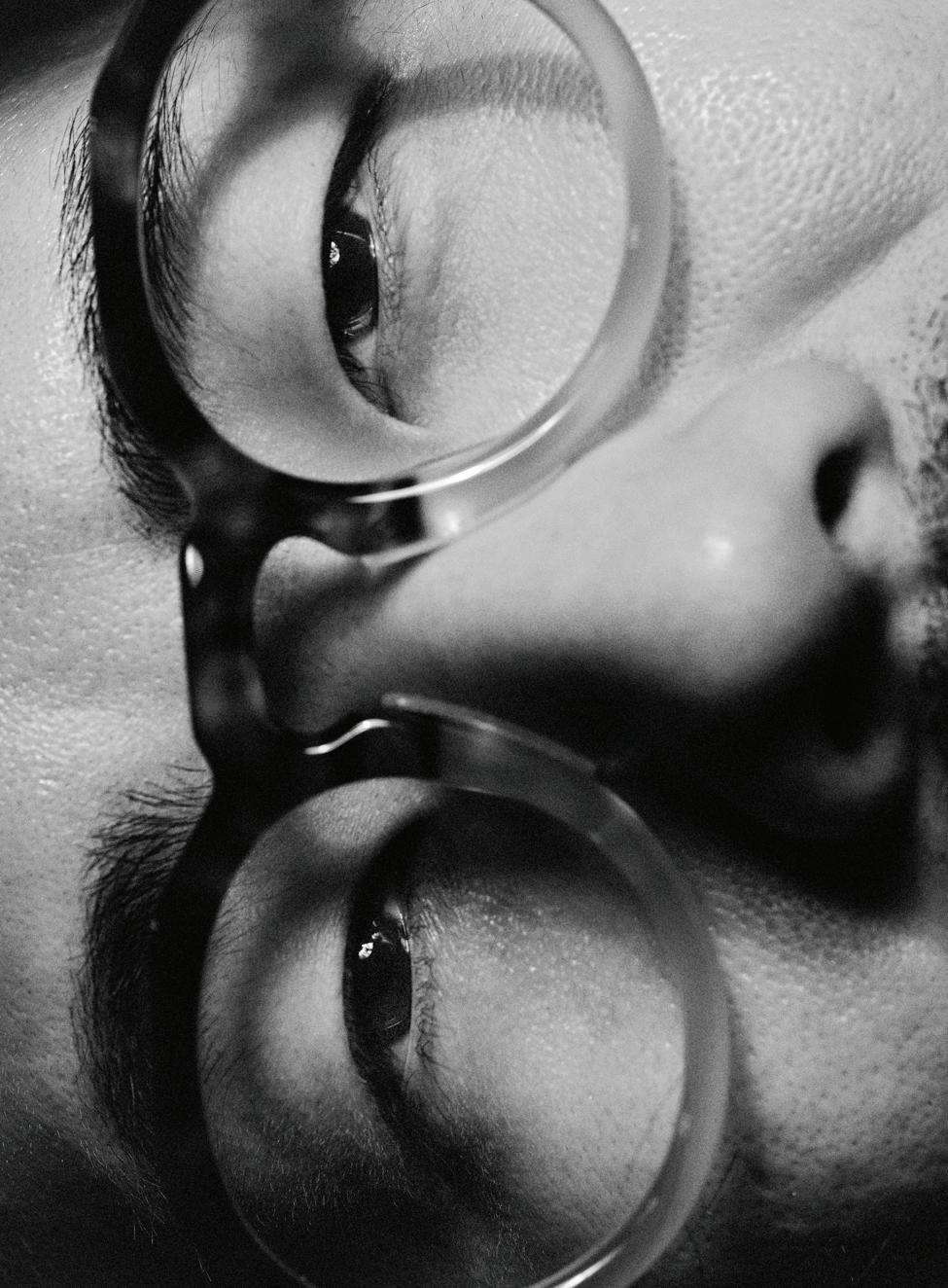
ART & DESIGN: SHINGO YAMAZAKI, MEGAN KAMALEI KAKIMOTO, AND GOOD LAMP CO. CULTURE: KĀ‘EO IZON, KALEINOHEA CLEGHORN, LANAKILA MANGAUIL, AND MELEANA ESTES. SOCIETY: MOKAUEA ISLAND, KALAPANA, AND WĀHINE SURFING. LIVING WELL: JOHNSON HOUSE, AND LEI MAKING. EXPLORE: NYC WITH EMILY MAY JAMPEL, AND OBON DANCES. STYLE: AUNTY NANI, AND PĀ‘Ū RIDERS. PORTFOLIO: NANI WELCH KELI‘IHO‘OMALU. POETRY: KRISTINE PONTECHA.
FLUXHAWAII.COM NO. 45
The CURRENT of HAWAI‘I $14.95 US $14.95 CAN COVER: 1/5
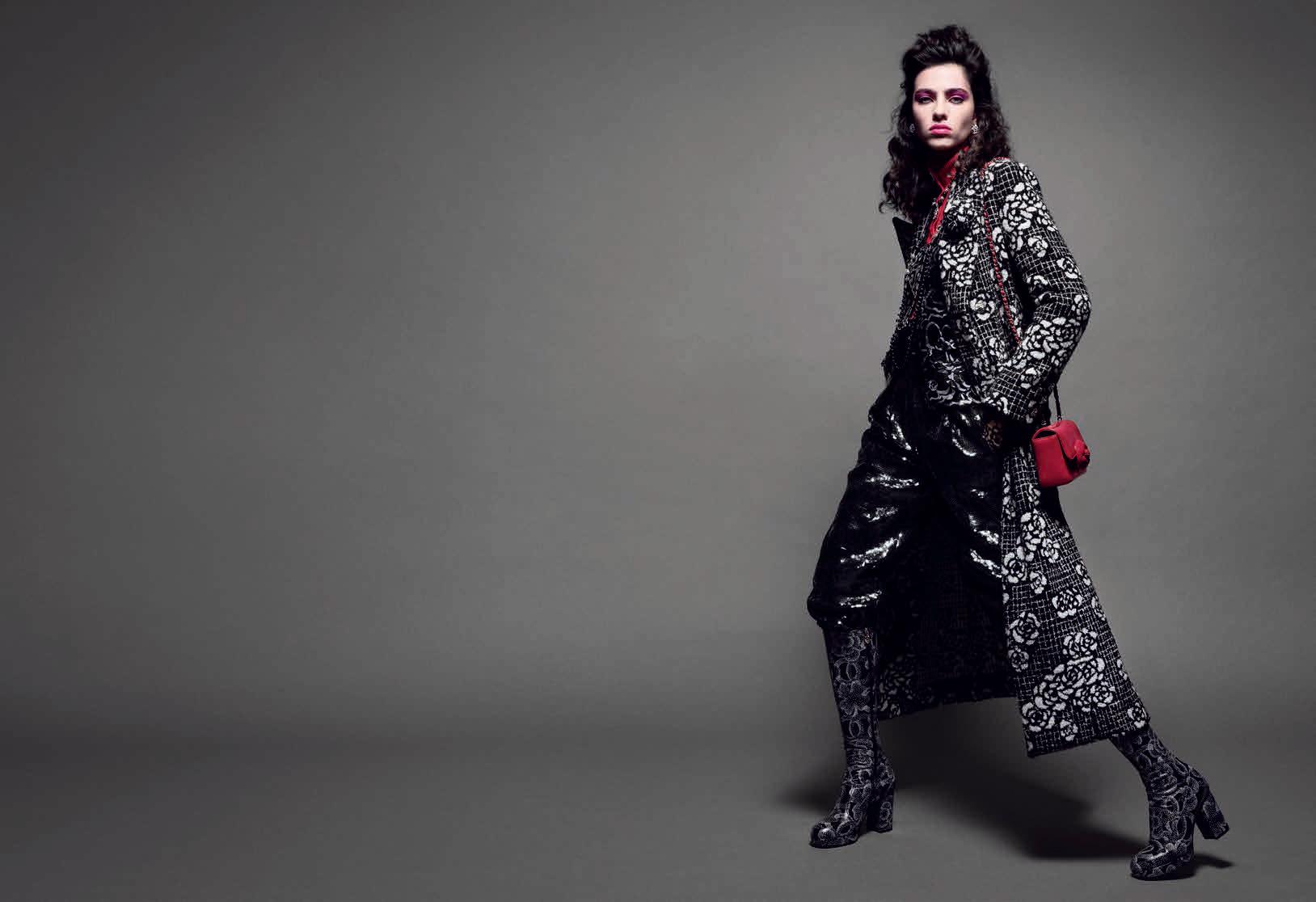

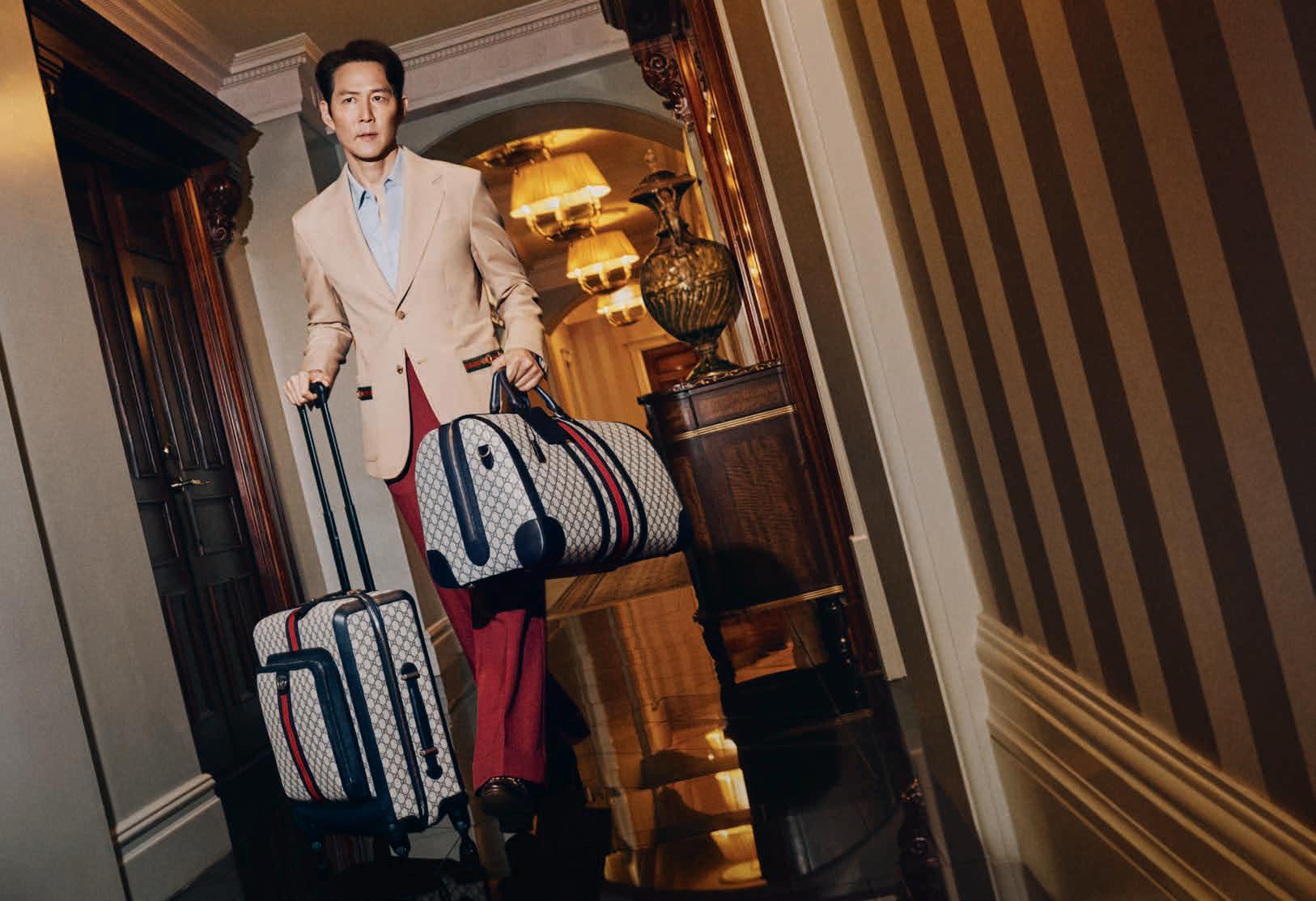

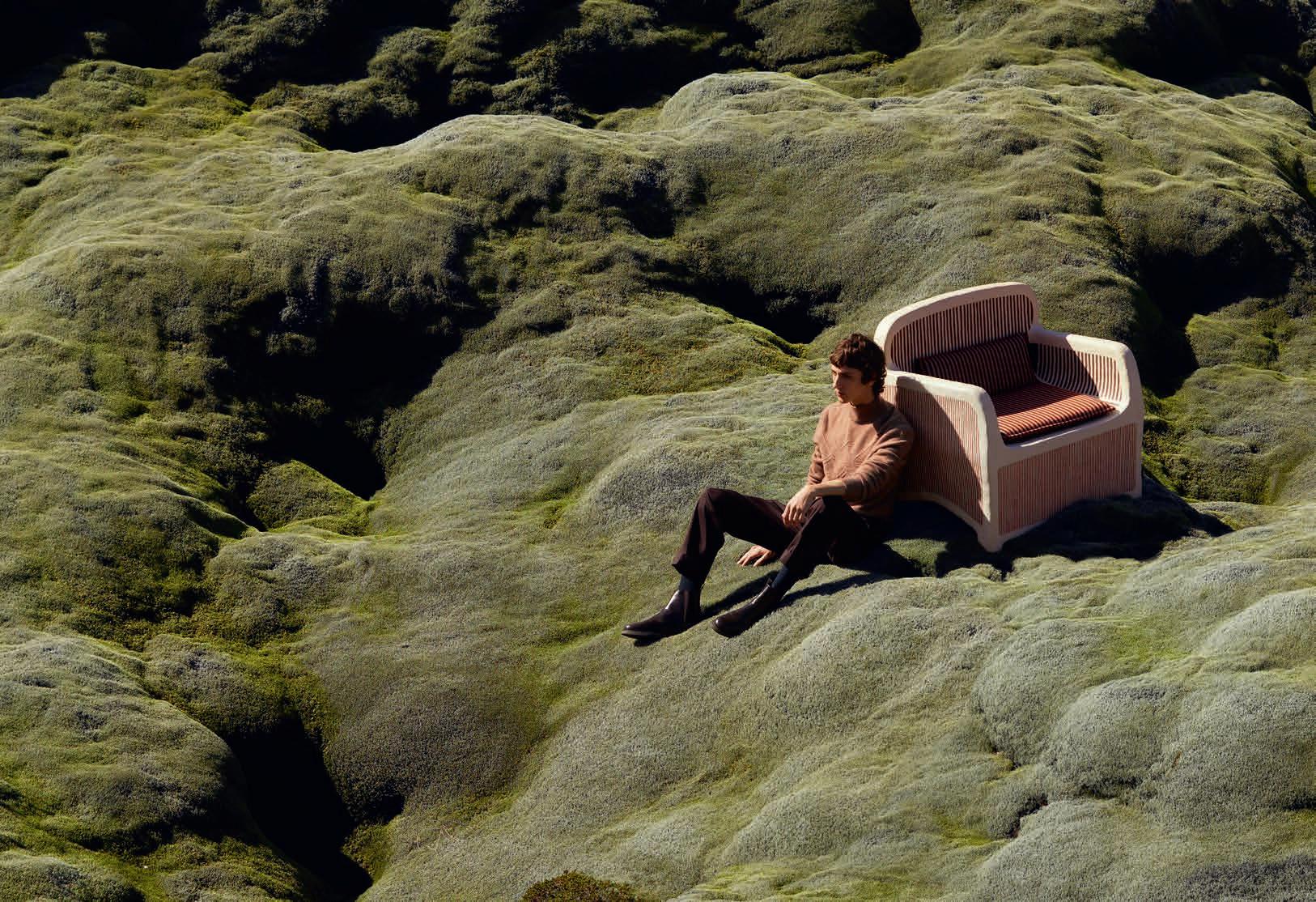

TABLE OF CONTENTS
20 | Painting
Shingo Yamazaki
32 | Maoli
Kāʻeo Izon
38 | Style @hirokolele
44 | Literature Megan Kamalei Kakimoto
A HUI HOU
158 | Mangosteen
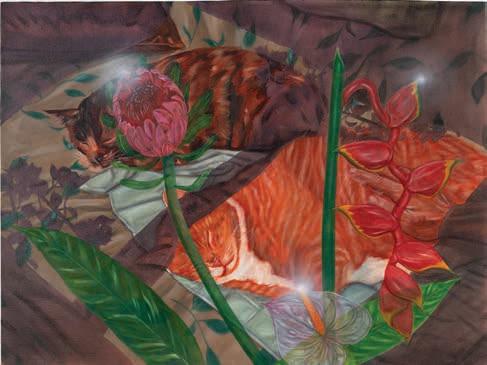
FEATURES
52 | Ceremonial Shifts
For two Hawai‘i Island ceremonialists, reindigenizing a people to their homeland begins with marking the seasonal transitions that Kānaka Maoli have formalized for centuries.
66 | She Go
Over the last few years, waves of change have rocked the surfing world, especially for Hawai‘i and women athletes.
80 | To Build After Fire
On Mokauea Island, the site of O‘ahu’s last traditional fishing village, families have fought for decades to preserve their traditional way of life.
92 | A t the End of the Road
Photographer Nani Welch Keli‘iho‘omalu’s work revolves around the documentation of the contemporary Native Hawaiian experience. Through analog and digital photography, she recreates the multifaceted and layered histories that she finds herself placed within.
|
F/W 2023
FEATURES |
FLUX PHILES
Warm Lights, 2022 . Art by Shingo Yamazaki.
6 | FLUXHAWAII.COM
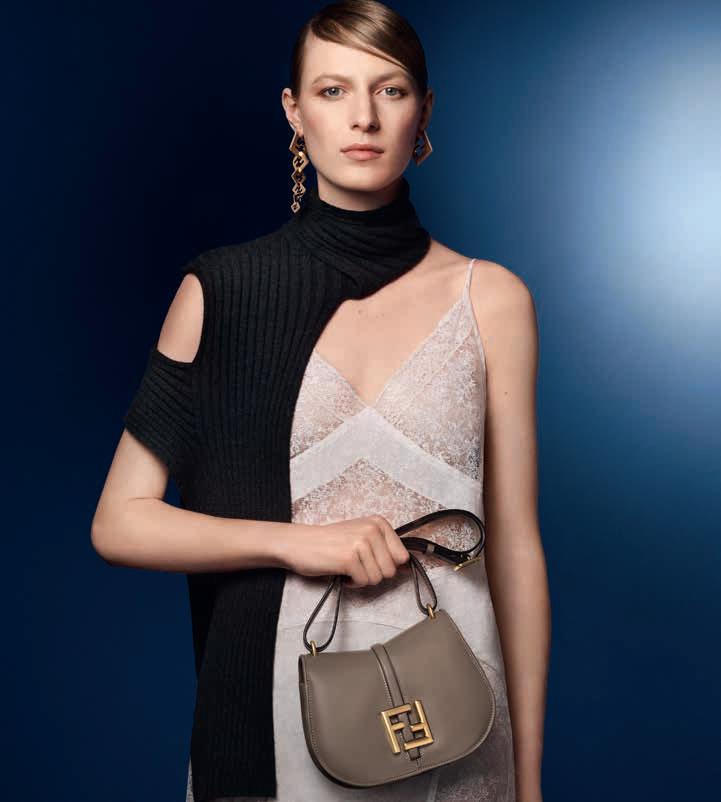
ROYAL HAWAIIAN CENTER ALA MOANA CENTER 808 427 3780 FENDI.COM
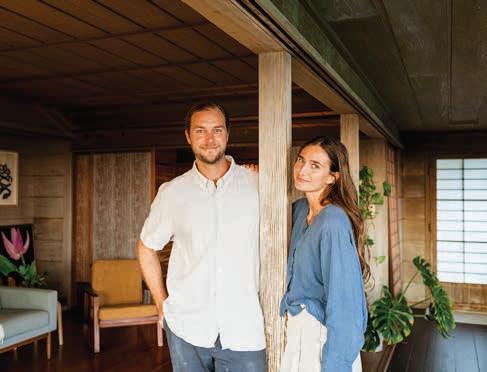
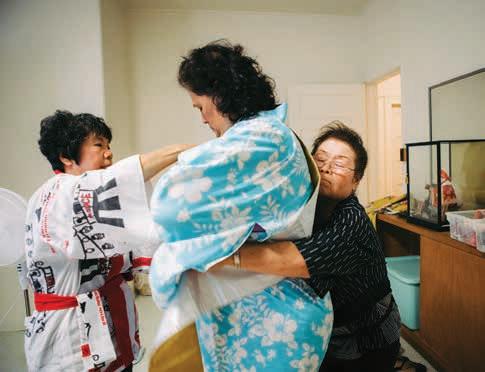
128 EXPLORE 130 | New York City Emily May Jampel 140 | Honolulu Obon 152 | History Pāʻū Riders 108 LIVING WELL 110 | Hana Lei Meleana Estes 116 | Design Johnson House & Good Lamp Co. TABLE OF CONTENTS | DEPARTMENTS |
Image by Michelle Mishina
8 | FLUXHAWAII.COM
Image by Viola Gaskell
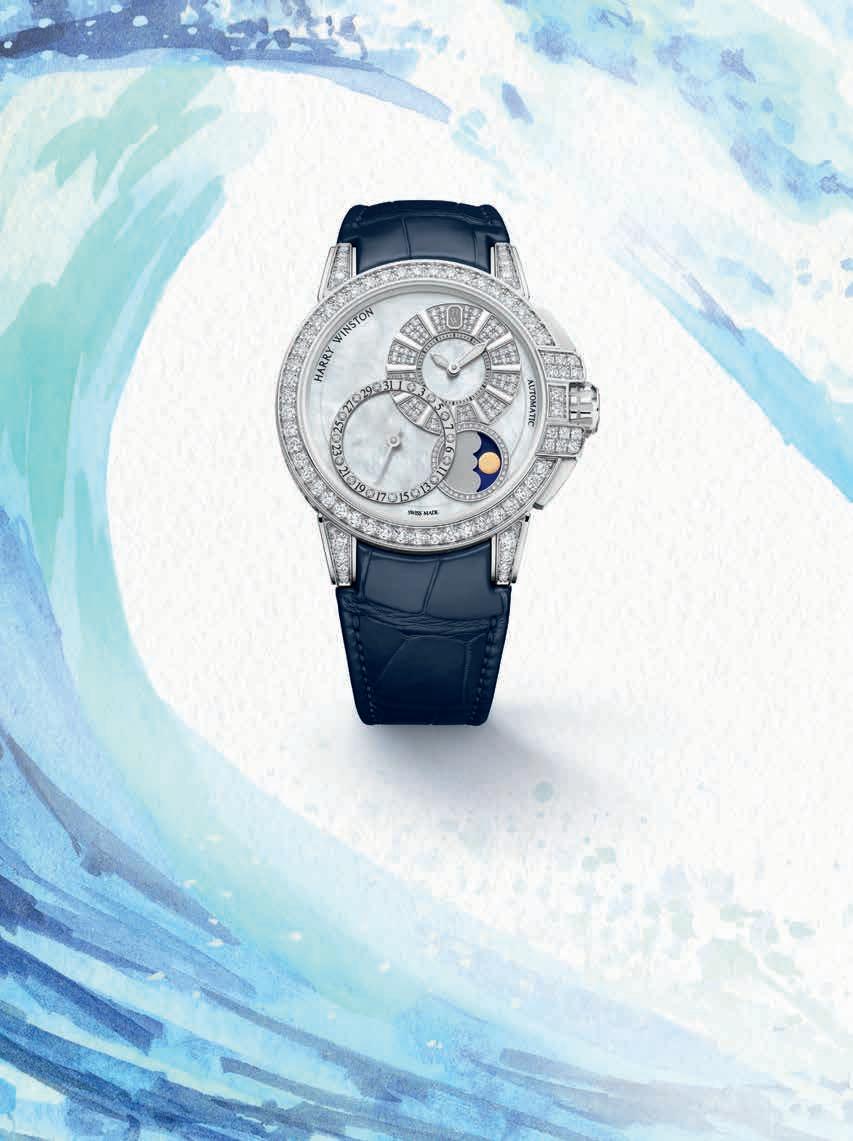
JEWELS THAT TELL TIME © 2023 Harry Winston SA. HARRY WINSTON OCEAN DATE MOON PHASE AUTOMATIC ALA MOANA CENTER 808 791 4000 ROYAL HAWAIIAN CENTER 808 931 6900 HARRYWINSTON.COM
Lei Making
Meleana Estes
Surfing
Kelis Kaleopa‘a
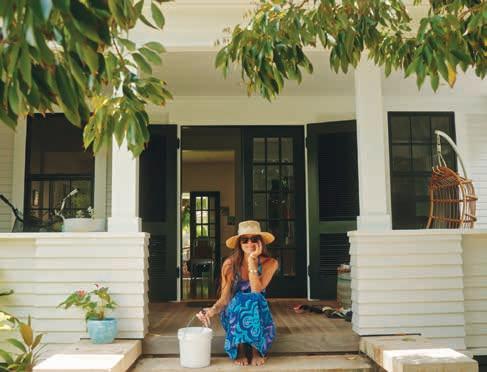
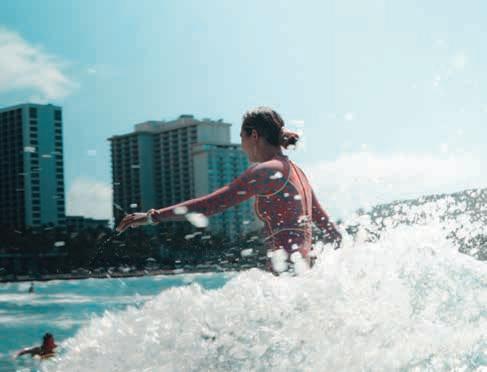
Stay current on arts and culture with us at: fluxhawaii.com /fluxhawaii @fluxhawaii @fluxhawaii INFLUX TV
TABLE OF CONTENTS | VIDEO | Still from IN FLUX Still from IN FLUX 10 | FLUXHAWAII.COM
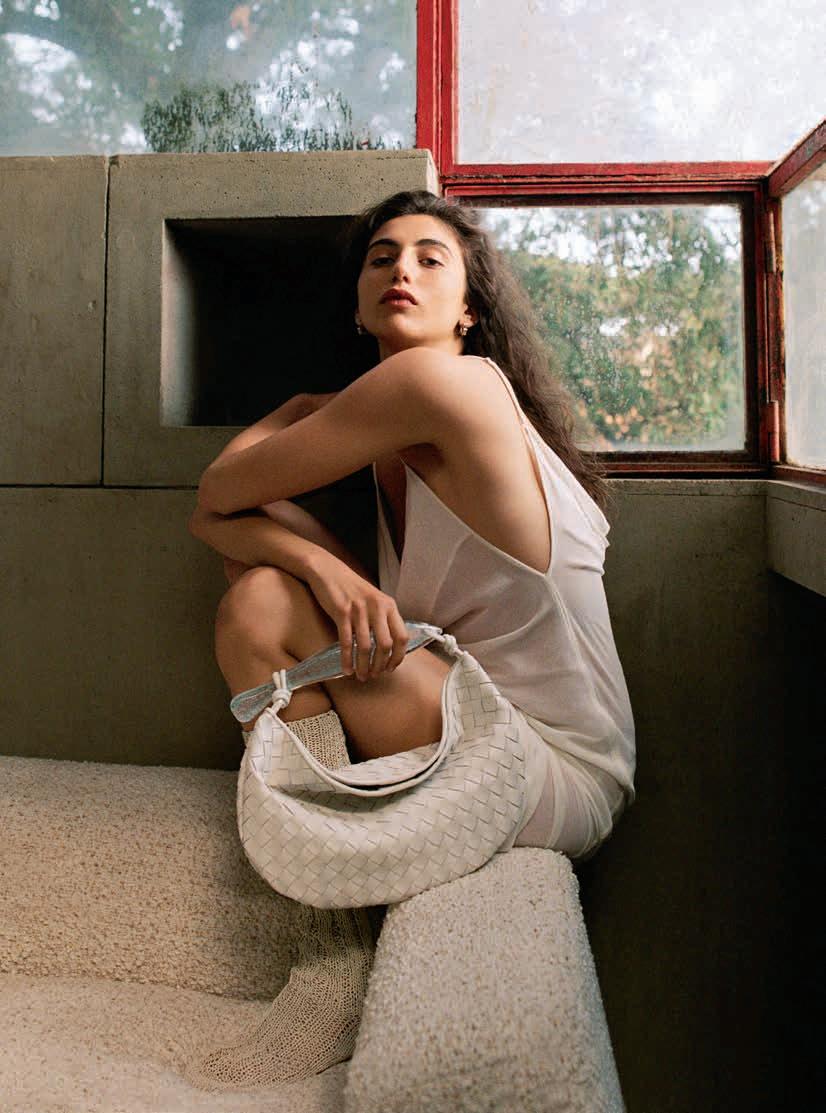
Streaming Videos, Newsletters, Local Guides, & More
We’ ve refreshed the website for Flux Hawaii with a more dynamic viewing experience. Watch all the original episodes from our themed seasons, find ways to support local small businesses, and sign up for our weekly newsletters curated with fascinating reads. You can also browse past issues of the print magazine for purchase.
On the Covers
Reflecting the dynamism of stories in every issue, we redesigned Flux Hawaii’s covers to express the kaleidoscopic and shifting landscape of these islands. This seismic burst of energy arrives with five original covers to captivate, inspire, and connect.
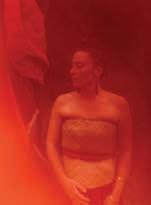
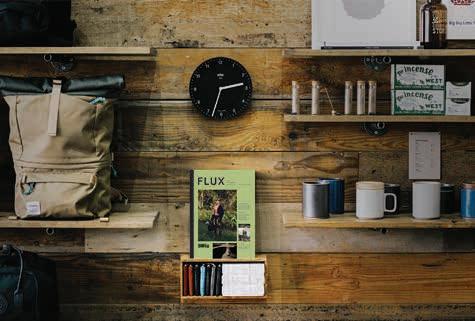
Clockwise from right:
1. Image by Sam Muller
2. Image by Michelle Mishina
3. Image by Nani Welch Keli‘iho‘omalu
4. Image from Hawai‘i State Archives
5. Image by Tahiti Kulia Huetter
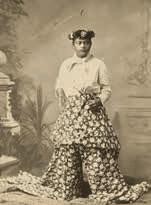
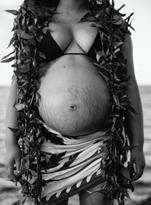
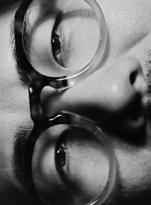
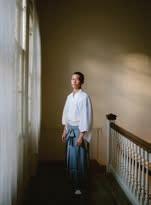
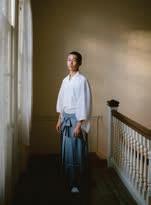
TABLE OF CONTENTS | ONLINE | FLUXHAWAII.COM
12 | FLUXHAWAII.COM NO. 45 2023 KĀ‘EO KALAPANA, AND WĀHINE SURFING. AND PĀ‘Ū RIDERS. The CURRENT of HAWAI‘I NO. 45 2023 The CURRENT of HAWAI‘I $14.95 US $14.95 CAN NO. 45 2023 IZON, KALEINOHEA CLEGHORN, LANAKILA MANGAUIL, AND MELEANA MOKAUEAISLAND, KALAPANA, AND WĀHINE SURFING. EMILY MAY JAMPEL, AND OBON AUNTY NANI, The CURRENT of HAWAI‘I $14.95 US $14.95 CAN FLUXHAWAII.COM NO. 45 F/W 2023 ART DESIGN: SHINGO YAMAZAKI, MEGAN KAMALEI KAKIMOTO, AND GOOD LAMP CO. CULTURE: KĀ‘EO IZON, KALEINOHEA CLEGHORN, LANAKILA MANGAUIL, AND MELEANA MOKAUEA ISLAND, KALAPANA, AND WĀHINE SURFING. LIVING WELL: JOHNSON HOUSE AND EMILY MAY JAMPEL, AND OBON DANCES. STYLE: AUNTY NANI, AND PĀ‘Ū RIDERS. PORTFOLIO: $14.95 US $14.95 CAN The CURRENT of HAWAI‘I SHINGO YAMAZAKI, MEGAN KAMALEI KAKIMOTO, AND IZON, KALEINOHEA CLEGHORN, LANAKILA MANGAUIL, AND MELEANA MOKAUEAISLAND, KALAPANA, AND WĀHINE SURFING. EMILY MAY JAMPEL, AND OBON DANCES. STYLE: AUNTY NANI, AND PĀ‘Ū RIDERS. PORTFOLIO: NANI WELCH KELI‘IHO‘OMALU. POETRY: KRISTINE PONTECHA. FLUXHAWAII.COM NO. 45 F/W 2023 The CURRENT of HAWAI‘I
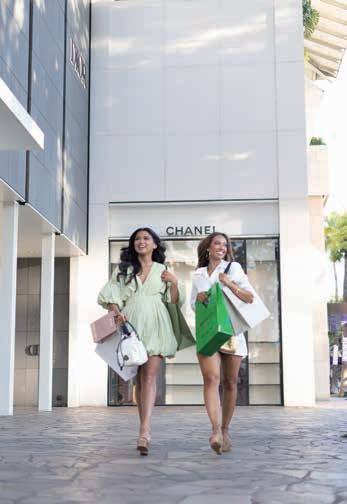
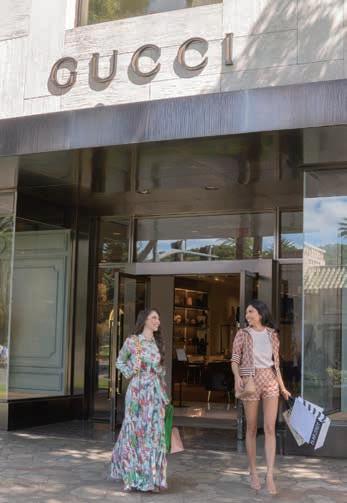

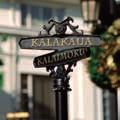
MASTHEAD
PUBLISHER
Jason Cutinella
EDITORIAL
Brian McManus
GLOBAL EDITORIAL DIRECTOR
Lauren McNally
EDITORIAL DIRECTOR
Matthew Dekneef EDITOR IN CHIEF
EDITORIAL VIDEO DIRECTOR, HAWAI‘I
Eunica Escalante MANAGING EDITOR
Rae Sojot SENIOR EDITOR
N. Ha‘alilio Solomon ‘ŌLELO HAWAI‘I EDITOR
Taylor Niimoto MANAGING DESIGNER
Eleazar Herradura
Coby Shimabukuro-Sanchez DESIGNERS
John Hook
SENIOR PHOTOGRAPHER
Samantha Hook
PHOTOGRAPHY EDITOR
CONTRIBUTORS
C. Kawohikūkahi Adversalo
Alexis Cheung
N. Kamakaokalani Gallagher
Sonny Ganaden
Viola Gaskell
Nicole Naone
Mindy Pennybacker
Kristine Pontecha
Jasmine Reiko
Kylie Yamauchi
IMAGES
Ruben Carrillo
Mahina Choy-Ellis
Christa Funk
Viola Gaskell
Tahiti Kulia Huetter
Kā‘eo Izon
Nani Welch Keli‘iho‘omalu
Hiroko Letman
Brandyn Liu
Michelle Mishina
Sam Muller
Nicole Naone
Josiah Patterson
Meagan Suzuki
Michael Vossen
Shingo Yamazaki
CREATIVE SERVICES
Marc Graser VP GLOBAL BRAND STORYTELLING
Gerard Elmore VP FILM
Blake Abes
Romeo Lapitan
Erick Melanson FILMMAKERS
Jhante Iga VIDEO EDITOR
Kaitlyn Ledzian STUDIO DIRECTOR/ PRODUCER
Taylor Kondo PRODUCER
OPERATIONS
Joe V. Bock PARTNER/GENERAL MANAGER, HAWAI‘I
Kristine Pontecha CLIENT SERVICES DIRECTOR
Gary Payne VP ACCOUNTS RECEIVABLE
Sheri Salmon PEOPLE AND CREATIVE SERVICES DIRECTOR
Sabrine Rivera OPERATIONS DIRECTOR
Brigid Pittman
DIGITAL CONTENT & SOCIAL MEDIA MANAGER
Arriana Veloso
DIGITAL PRODUCTION DESIGNER
ADVERTISING
Mike Wiley VP SALES
Alejandro Moxey SENIOR DIRECTOR, SALES
Francine Beppu INTEGRATED MARKETING LEAD
Courtney Asato MARKETING & ADVERTISING EXECUTIVE
General Inquiries: contact@fluxhawaii.com
PUBLISHED BY: NMG Network
36 N. Hotel St., Ste. A Honolulu, HI 96817
©2023 NMG Network. Contents of FLUX Hawaii are protected by copyright and may not be reproduced without the expressed written consent of the publisher. FLUX Hawaii assumes no liability for products or services advertised herein. ISSN 2578-2053.
| FALL/WINTER 2023 | 14 | FLUXHAWAII.COM
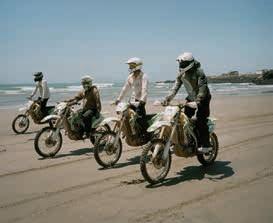
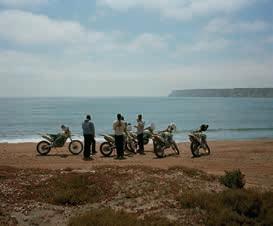

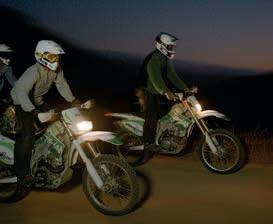
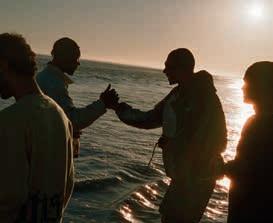
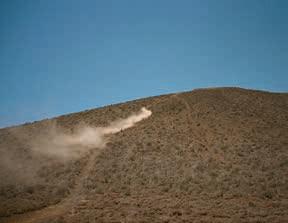
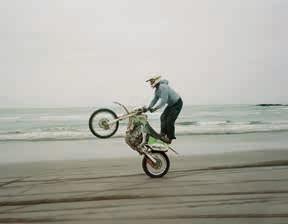
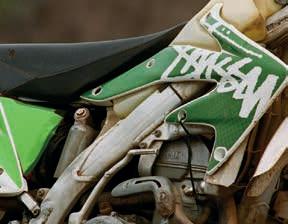
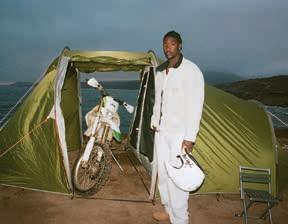
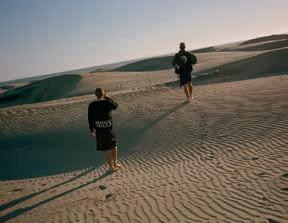
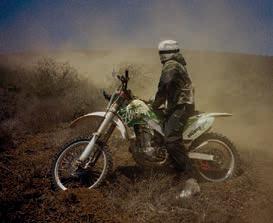
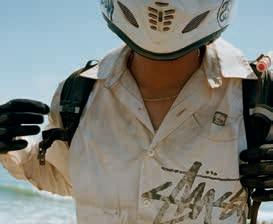
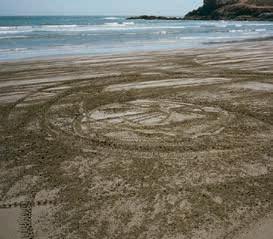
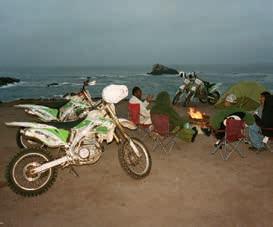
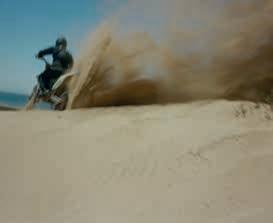
2023 |

C. Kawohikūkahi
Adversalo
No ka ʻāina e pā mai ana ka makani Hoʻeʻo, no ka ʻāina ʻo Moanalua kēia kanaka nei, ʻo Kawohikūkahi Adversalo. ʻO kāna hana nui ka ulana lau hala. Eia naʻe, ʻo kahi pahuhopu āna ka lilo ʻana i kumu ʻōlelo Hawaiʻi no kahi kula kiʻekiʻe. Ke hoʻokō ʻia nei nā kekelē lae pua he ʻelua ma lalo o ka Hālau ʻŌlelo Hawaiʻi ʻo Kawaihuelani a me ka Hālau ʻIke Hawaiʻi ʻo Kamakakūokalani ma ke Kulanui ʻo Hawaiʻi ma Mānoa. Ma hope, e holomua ana no ka palapala PostBaccalaureate ma lalo o ke Kula Hoʻonaʻauao ma ua kulanui nei. ʻO ka moʻolelo ʻo “Nā Kama a Ohiohikupua Lāua ʻo Lauhuki,” ma ka ʻaoʻao 32, no nā hui ulana lau hala ka mua loa āna i kākau ai no Flux Hawaiʻi. A he hoihoi ia hana ma muli o ko ia nei pilina ma ke ʻano he lālā o ia hui ulana. “He pono nō ke aʻo pū ʻana i ka ʻōlelo me ka moʻomeheu Hawaiʻi ʻoiai e aʻo ana i mea Hawaiʻi. Pēlā e maopopo leʻa ai a e lau aʻe ai ko kākou ʻike,” wahi a Adversalo i ʻōlelo ai.

Alexis Cheung
Alexis Cheung is a writer from O‘ahu currently living in New York City. Her journalism, interviews, and essays have been published in Vanity Fair, T: The New York Times Style Magazine, The New York Times, The Cut, The Sewanee Review and The Believer, among others. After graduating from Punahou School, she attended New York University and later obtained her MFA in Creative Nonfiction from Hunter College. For this issue, she profiled the Hawai‘i-born artist Shingo Yamazaki, page 20, and the Instagram account of @hirokolele which features a woman known as Aunty Nani, page 38. “Hawai‘i might be small, but there’s no shortage of talent in and coming from the islands,” she says. “Every time I report a story, I’m reminded of how its unique blend of so many communities from various countries cannot help but inspire creativity. It’s heartening to watch people perpetuate Hawai‘i’s history and culture through their chosen mediums, but in a way that complicates existing narratives and notions about the state, too.”
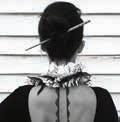
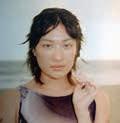
Jasmine Reiko
Nicole Naone is a Kanaka Maoli, Korean cultural producer with practices spanning film, sculpture, and virtual reality. Naone’s cinematic credits include producing short film Lahaina Noon and the multi-award winning scripted feature Waikiki As a writer-director she created the short film installations Mauna Fuji (2014), Kalaoke o Mākua (2019), and PIKO: Virtual Reality (2021). Naone has contributed her mastery of visual communication to spaces of Native Hawaiian resistance, including the fight to protect Maunakea and the repatriation of ʻiwi kūpuna. Naone moderated a conversation for this issue on the relevance of oli in contemporary society. “Spending time with Lanakila and Kaleinohea is always a blast. My cheeks and abs hurt from laughing,” Naone says of her time with the two Hawaiʻi Island cultural practitioners, on page 52. “They makawalu it in a super cool way. More than anything they’re good fun, and make me excited for the future while giggling through the present.”
Descended from grandparents born in Kaua‘i and O‘ahu, Jasmine Reiko is a fourth-generation writer and painter with roots in Pālolo and Kaimukī. Raised with a little sister, the two explored abandoned houses full of termites, the tops of hills, and dry, forested deadends in a neighborhood full of children from varying multigenerational households who all told very different stories and who all collectively avoided Waiʻalae Avenue because it was “too city.” Finding resonance in the quiet and slow, Reiko corresponds conversations that honor their own contours, ground place, and extend identity out through in. Concerned with beauty and shape through storytelling, Reiko engages personal and broader myths with dreams and hypotheticals, exploring the layers of truths already present. For this issue, she profiles the photographer Nani Welch Keliʻihoʻomalu, on page 92. “Engaging acts of compassion and gratitude through art with one’s culture is essential to perpetuating community,” Reiko says, “something Nani does by taking photos of the changing while keeping past and present in mind.”
CONTRIBUTORS | FALL/WINTER
Nicole Naone
16 | FLUXHAWAII.COM
KULEANA
‘Āina... it’s also the old word for ‘ohana, for family. And that’s because it was recognized that the land is us.”
Kahealani Acosta BS, Tropical Plant & Soil Sciences, UH Mānoa, 2019 Current master’s student in Tropical Plant & Soil Sciences


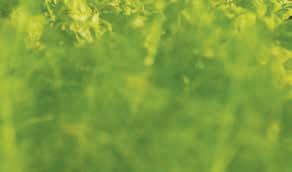



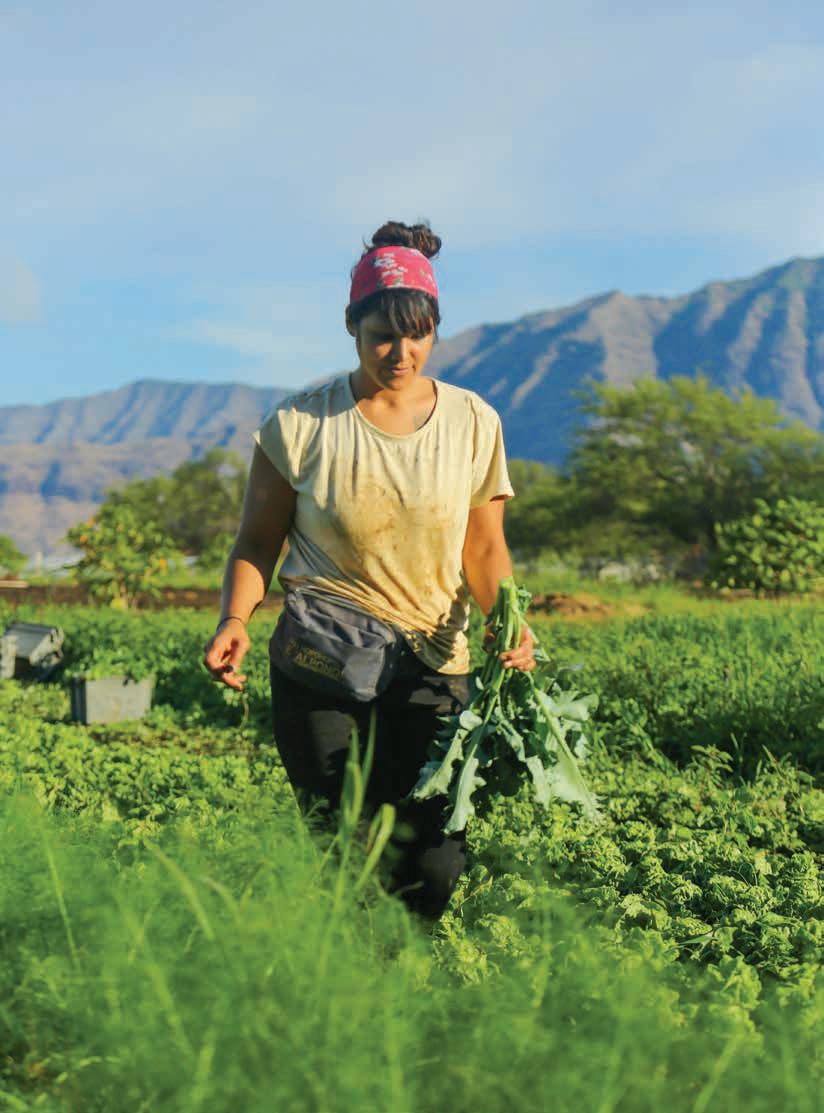
At the University of Hawai‘i at Mānoa, we help you develop a sense of purpose beyond yourself. Be among the innovators who are creating, rethinking and reinventing our world. Where will your learning take you?
MANOA.HAWAII.EDU The University of Hawai‘i at Mānoa is an equal opportunity, affirmative action institution.
n. right, privilege, concern, or responsibili
PICTURED: KAHEALANI AT MAʻO ORGANIC FARMS, WAIʻANAE, HAWAIʻI
“
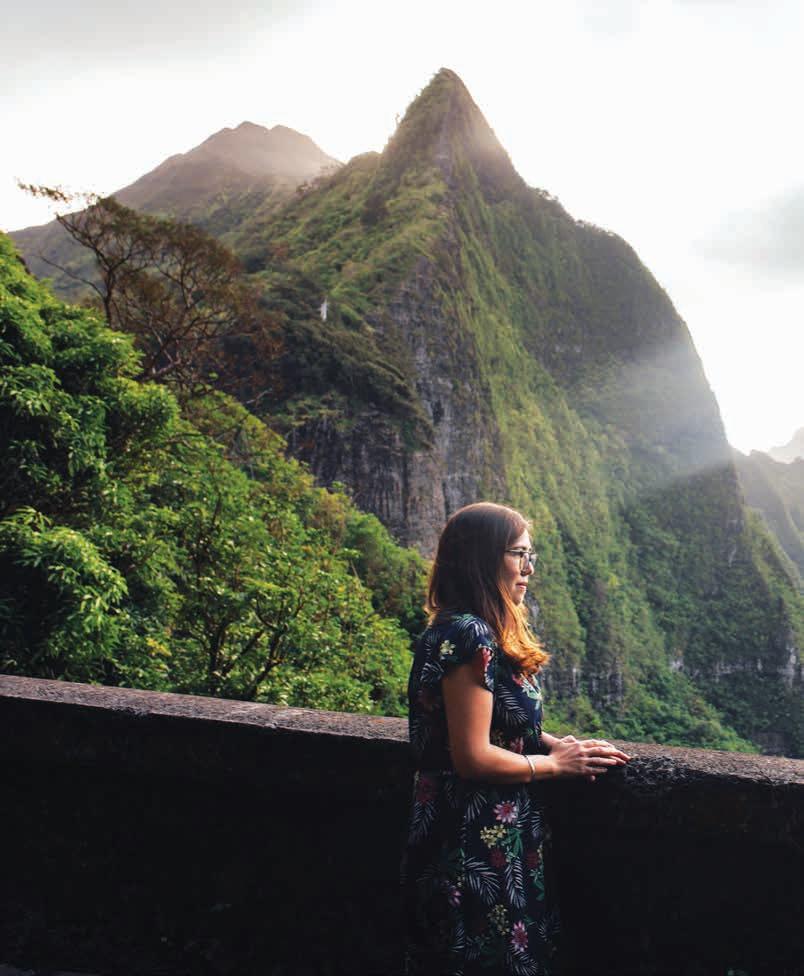 The author Megan Kamalei Kakimoto at Nu‘uanu Pali. Image by Meagan Suzuki.
The author Megan Kamalei Kakimoto at Nu‘uanu Pali. Image by Meagan Suzuki.
ARTS & CULTURE
“Akā nō na‘e, iā kākou, ‘o nā loina, nā hua‘ōlelo, ka ‘ike ku‘una, nā ka‘ao, a me ka lawena i loa‘a mai mai ke kumu mai a i ka haumāna aku, ‘o ia nō nā mea i Hawai‘i ai kā kākou nala ‘ana.”—Pueo Pata
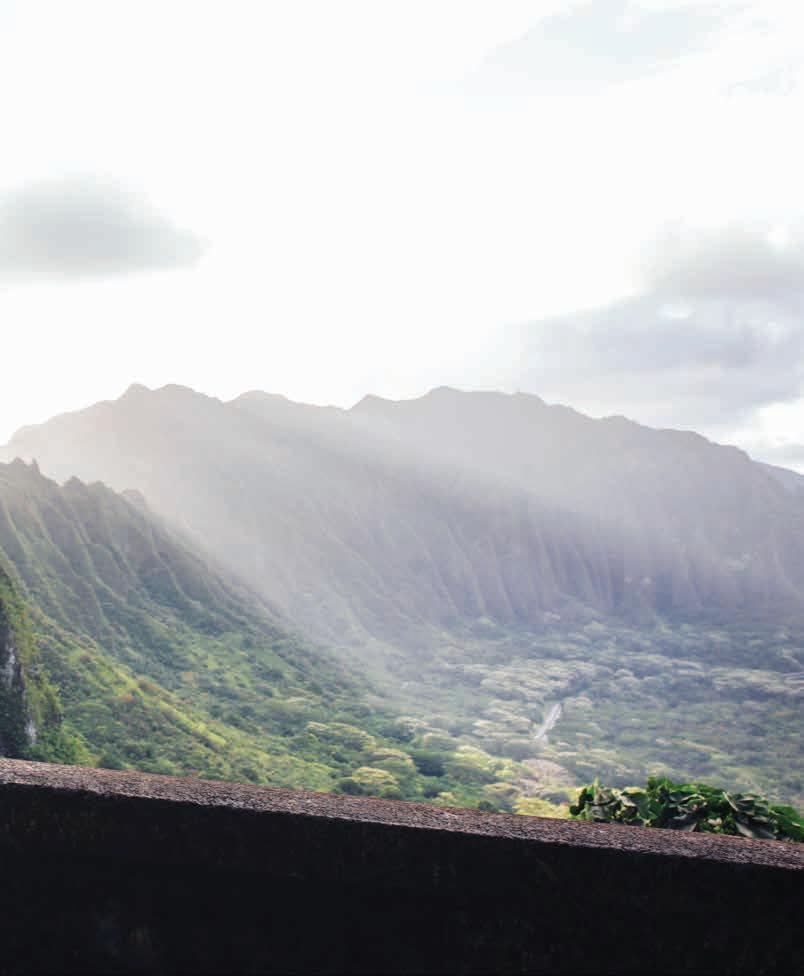
Layered Histories
The L.A.-based Shingo Yamazaki paints a multicultural Hawai‘i upbringing steeped in meditations on identity and memory.
TEXT BY ALEXIS CHEUNG
IMAGES BY SAM MULLER
A couple sits down to dinner. On the table there’s a Budweiser for him (bottled, not canned), a water for her (tap, not bottled), and a plate and two bowls between them. The booth behind them is cherry red and the walls are covered in wallpaper patterned with anthuriums.
The painting, Remember to Forget, by Honolulu-born artist Shingo Yamazaki captures an intimate moment, only there’s a scrim separating we, the onlookers, and the two eaters in the frame. Translucent yet opaque brush strokes cover the entire canvas, obscuring certain details, which makes the act of gazing feel like spying on someone through a dirty window pane.
“I call them interjections,” says Yamazaki, whose portraits explore the nuances of identity, multiculturalism, home, and belonging. The technique is actually called “glazing,” where transparent oil paints are painstakingly layered to create a full image, and they’re a consistent presence in Yamazaki’s work for their ability “to simultaneously allow and deny access.”
In Transient Veil, a straightforward portrait of a man — the same one at the dinner table: aged, handsome, wearing wire-rimmed glasses — is interrupted by what appears to be a hanging aloha shirt, unbuttoned and forest green with pink and yellow plumeria. It partially obscures his face from his forehead to nose.
“I was really thinking about how we self identify, or personhood, and how those interactions create relation to reality and psychological space,” Yamazaki explains of his fondness for glazing. His late grandmother lived with dementia and the method worked as a metaphor for
FLUX PHILES | PAINTING | 20 | FLUXHAWAII.COM

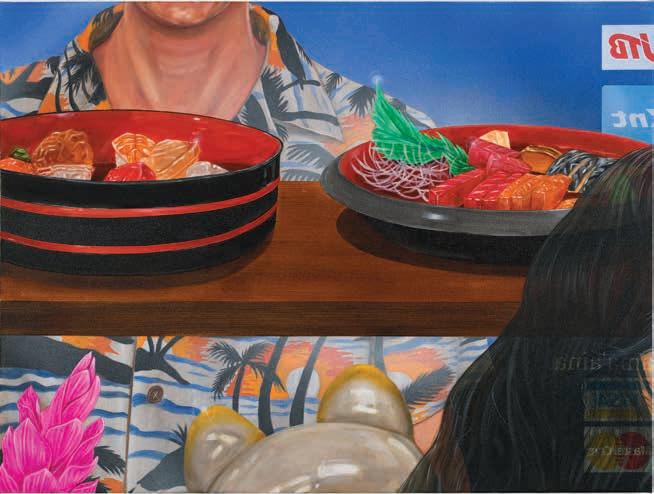
memory and the self. By precisely controlling the distance between his viewers and his subjects, often his family members or friends and inspired by old photographs, Yamazaki can spotlight or shroud each figure, creating presence or absence, and “instill a sense of in-betweenness at the same time.”
This “in-betweenness” could be spatial too. In In Transit, a young boy sits with his mother in a minivan as a gate rises, about to enter a parking garage; in Beyond the Pacific, his grandparents are seen behind a pellucid door that’s ajar. These interstitial themes extend to cultural representations as well. As a Japanese Korean born and raised in Hawai‘i, Yamazaki is acutely aware of both the hybridity and intersectionality of his own body and the islands’ melting pot society, which is why in his art, “I try to embed different iconographies and cues from my upbringing,” he says.
Across his oeuvre, there are recurring motifs. Hawai‘i’s flora — spindly
anthuriums, scaly ginger, elongated bird of paradise — are often composed in ikebana arrangements as a nod to his family who practices the artform. Local clothing from vivid aloha shirts to slouchy T&C tees adorn the subjects. Island foods like portable Spam musubi and glistening chirashi bowls also appear.
“When I paint, I can embed different things within the work in a really subtle way where they’re coexisting,” says Yamazaki. Remnants of Nostalgia shows a figure from the thighs down, wearing purple shorts and Nike socks tucked into Locals rubber slippers, intimating a crossover between Hawai‘i, Japanese, and American style.
The idea of coexistence became central to Yamazaki’s paintings after moving from O‘ahu to Los Angeles in 2018. Despite the large Asian population in California, he found the communities were often isolated. Asian restaurants were clustered in Koreatown or Japantown or
Shingo Yamazaki uses “glazing,” a technique where transparent oil paints are layered to create a full image. “I call them interjections,” he says. Above, Outside Looking In. Previous page, Intersections of a Wandering Mind , all oil and acrylic on canvas.
22 | FLUXHAWAII.COM
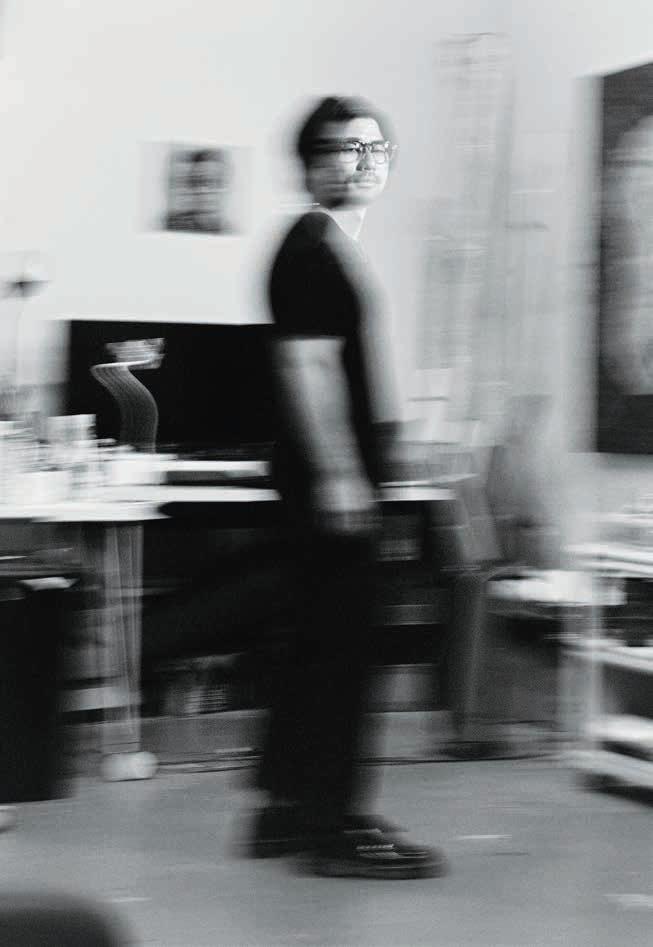
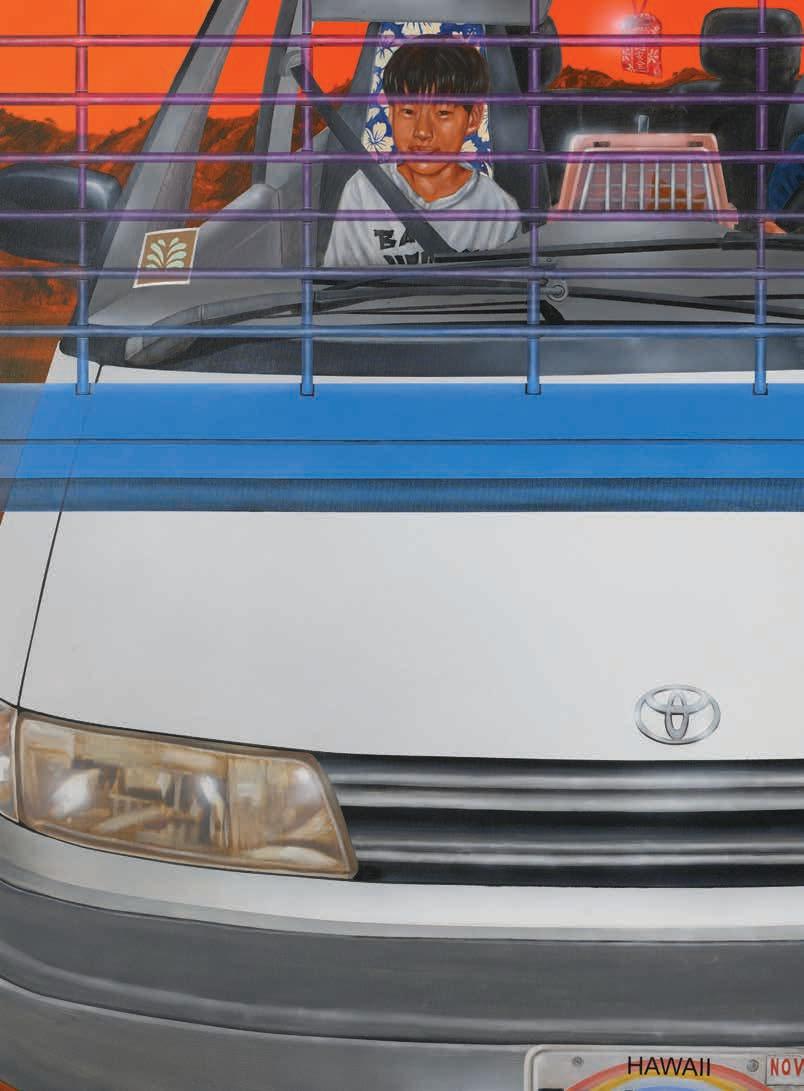
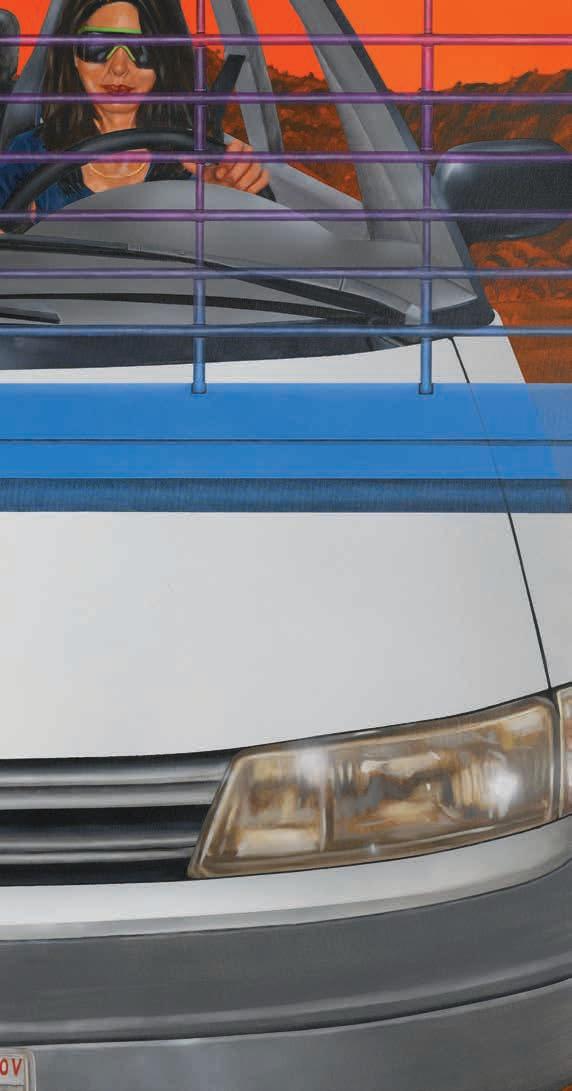 In Transit , oil and acrylic on canvas.
In Transit , oil and acrylic on canvas.
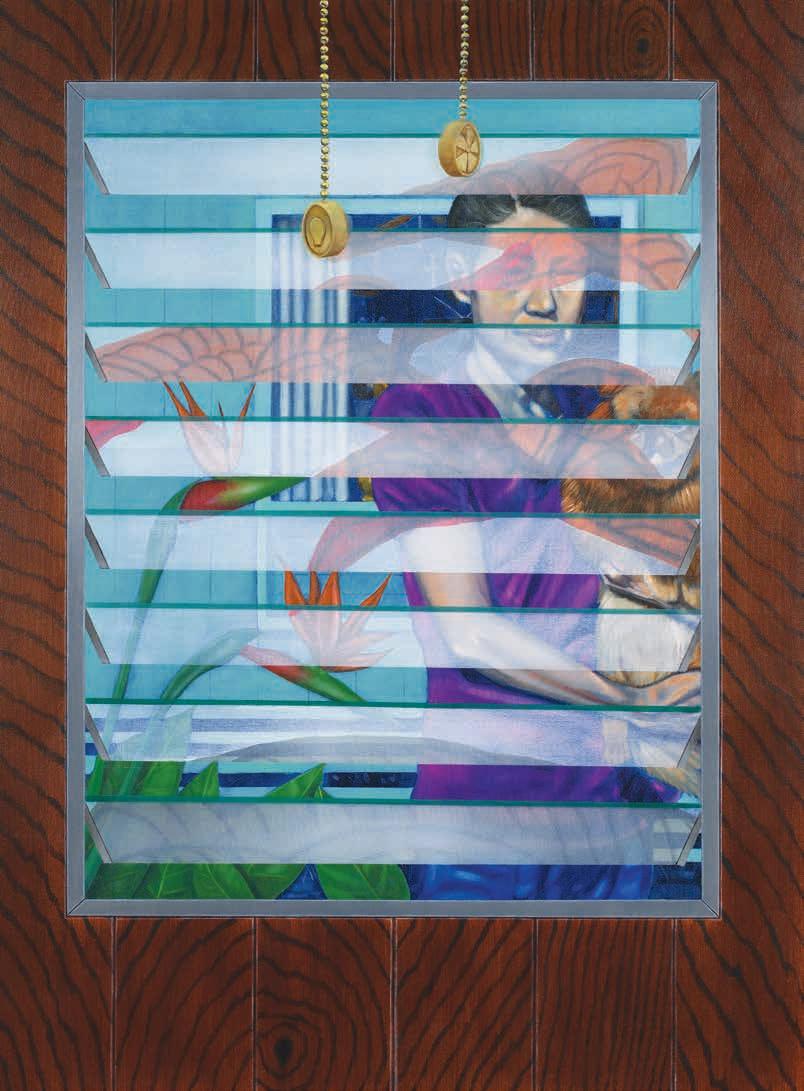
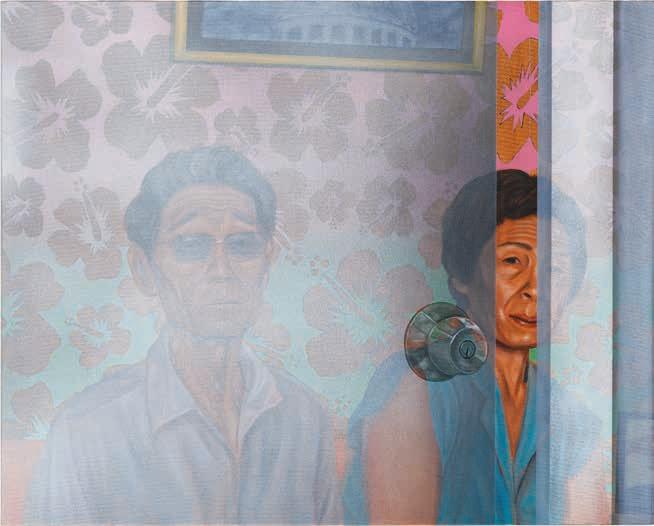 Above, Beyond the Pacific . Opposite page, Looking Glass , oil and acrylic on canvas.
Above, Beyond the Pacific . Opposite page, Looking Glass , oil and acrylic on canvas.
Chinatown. Items he’d find in any local Hawai‘i supermarket — sushi rice, fish sauce, kimchi — he’d have to purchase from an Asian-specific grocery store instead.
The differences in language (“soy sauce” instead of “shoyu”), driving (aggressive honking instead of throwing shakas), and mindset (individualism over community) became a clear contrast to Hawai‘i, prompting Yamazaki to think more deeply about how cultures come to exist and their histories. “It’s such a rich mixture, that you don’t even realize what it is,” he says of Hawai‘i. “If you’re eating a plate lunch,” a dish that originated on the plantations where Chinese, Japanese, Filipino, and Portuguese immigrants labored, “you’re not pointing out the origins of each item.”
Distance from home and the ability to paint during the pandemic (his day job as a flight attendant for Hawaiian Airlines was paused during lockdown) gave Yamazaki the space to create a coexistence of identities, cultures, and personhood on the canvas. The work “speaks to a broader conversation on identity and being very specific and accurate about trying to depict those complexities,” he says, “because historically certain kinds of identities were not typically addressed.”
Yamazaki speaks from personal history here. His mother, who is half Korean, partially grew up in Hiroshima, Japan.
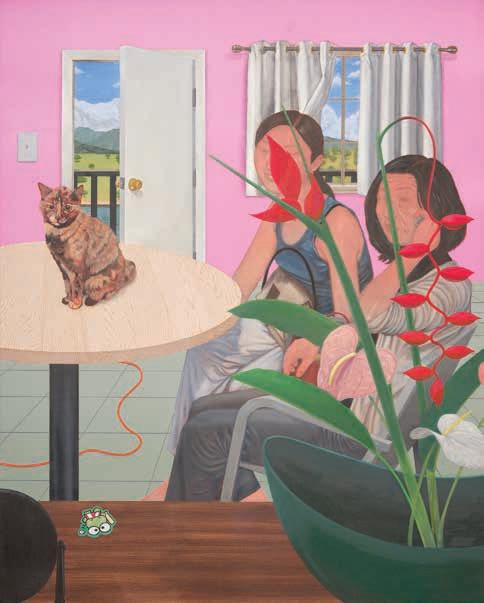
His maternal Korean grandfather, who had lived there for decades, experienced the atomic bombing in 1945. Japan was — and to some extent still remains — notoriously hostile to Koreans. As a result, Yamazaki, 38, didn’t learn he was also Korean until he was 17 years old.
“My mom doesn’t generally like talking about being Korean having grown up in Japan,” he explains. Yet the news wasn’t a
total shock. “I already had a feeling because my grandma had all this Korean paraphernalia around the house.”
Yamazaki understands that the immigrant’s refusal to talk about generational trauma doesn’t necessarily replace the underlying, unspoken knowledge their offspring possess.
Painting for him then is, as he puts it, an “uncovering process.” Interjections, with their ability to conceal
For Lack of Better Words , oil and acrylic on canvas. Across Yamazaki’s oeuvre, there are recurring motifs like tropical flora found in Hawai‘i, often presented in ikebana arrangements.
28 | FLUXHAWAII.COM
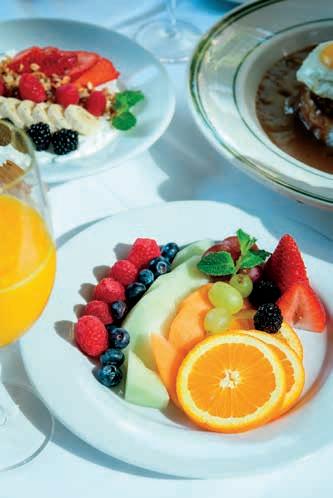
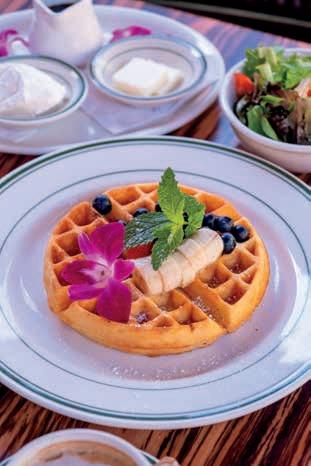
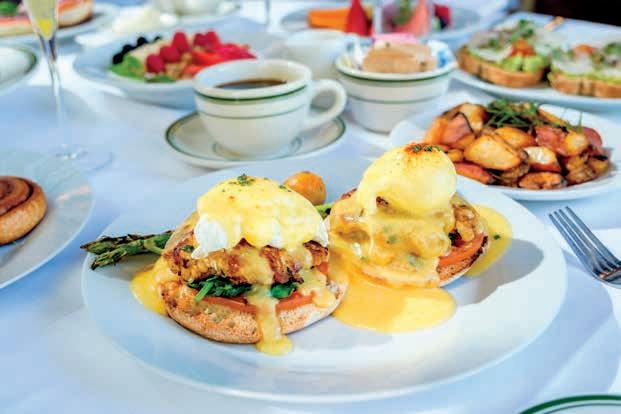
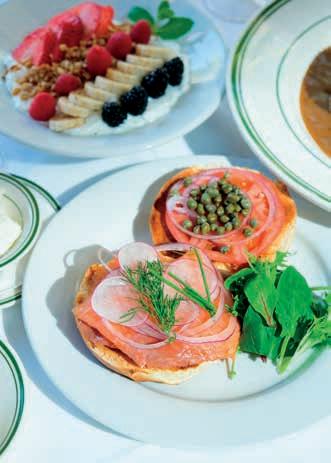

ELEVATE YOUR MORNING OPEN AT 7AM FOR BREAKFAST, LUNCH & DINNER - OUTDOOR DINING AVAILABLE ROYAL HAWAIIAN CENTER | VALIDATED PARKING | 808.922.3600 OR OPENTABLE.COM
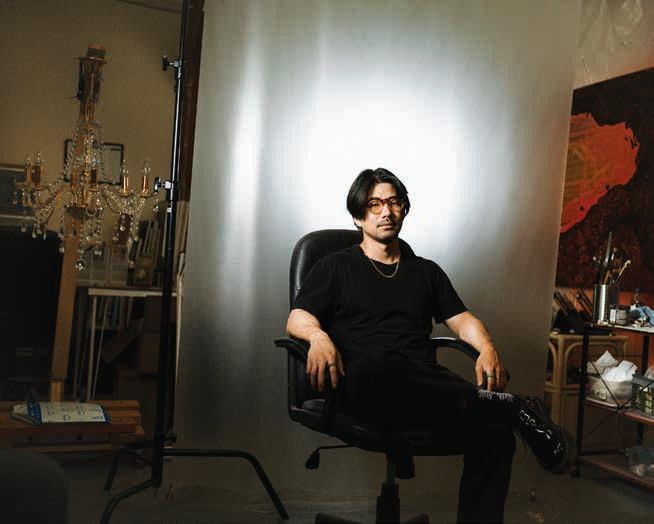
and reveal simultaneously, mirror the process Yamazaki continually finds himself undergoing with respect to his own identity, heritage, and family history. In preparation for several upcoming group shows and one solo show, he’s been “working with the idea of filling in the blanks as a way of trying to reconnect with this lack of generational knowledge.”
Lately, Yamazaki has been contemplating the history of objects and traditions, how certain ones have been adopted or changed from movement and migration. In his Boyle Heights studio now, there are hanafuda cards, the Japanese playing card game, and Pogs, the stack and slam game popularized on Maui by the passion fruit, orange, and guava juice manufacturer. Both are “originally from Japan but popularized in Hawai‘i and then the mainland, so they’ve gone through this
whole traveling and migration process,” he says. “That’s really applicable to how we self identify and shift, the way we live our lives and continue our paths.”
Yamazaki’s desire to fill in the blanks is personal but also universal. All the major characters in his work, which include his grandparents and family, classify as what the novelist Min Jin Lee has called “minor characters in history”: the everyday, ordinary people who are frequently underappreciated and overlooked, their stories left unrecorded.
“We cannot help but be interested in the stories of people that history pushes aside so thoughtlessly,” the author has said, which can explain the appeal of Yamazaki’s art. As viewers, we cannot help but admire the artist who places his family’s own, unknown histories front and center, deserving of the light to be seen.
His artwork “speaks to a broader conversation on identity and being very specific and accurate about trying to depict those complexities,” Yamazaki says.
Learn more about the artist and his work at shinyamazaki.com.
30 | FLUXHAWAII.COM
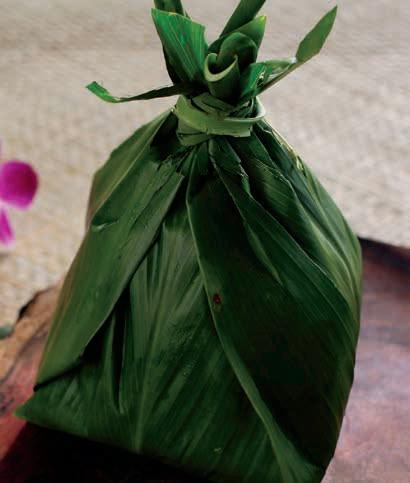
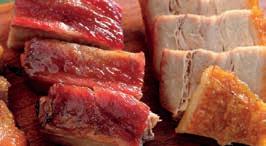
Opened as a small Liliha Street market by Wilfred and Charlotte Young, Young's Fish Market was originally what its name implies: a store that sold fish.
As time passed, they adapted the store to survive slow fishing seasons. Today, Young's Fish Market specializes in local staples and is known for their Laulau, Kalua Pig and Beef Stew.
Come visit us in Kapolei or Kalihi, and try it for yourself!
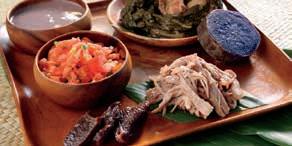
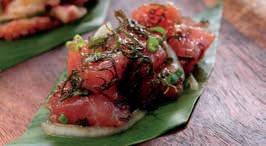
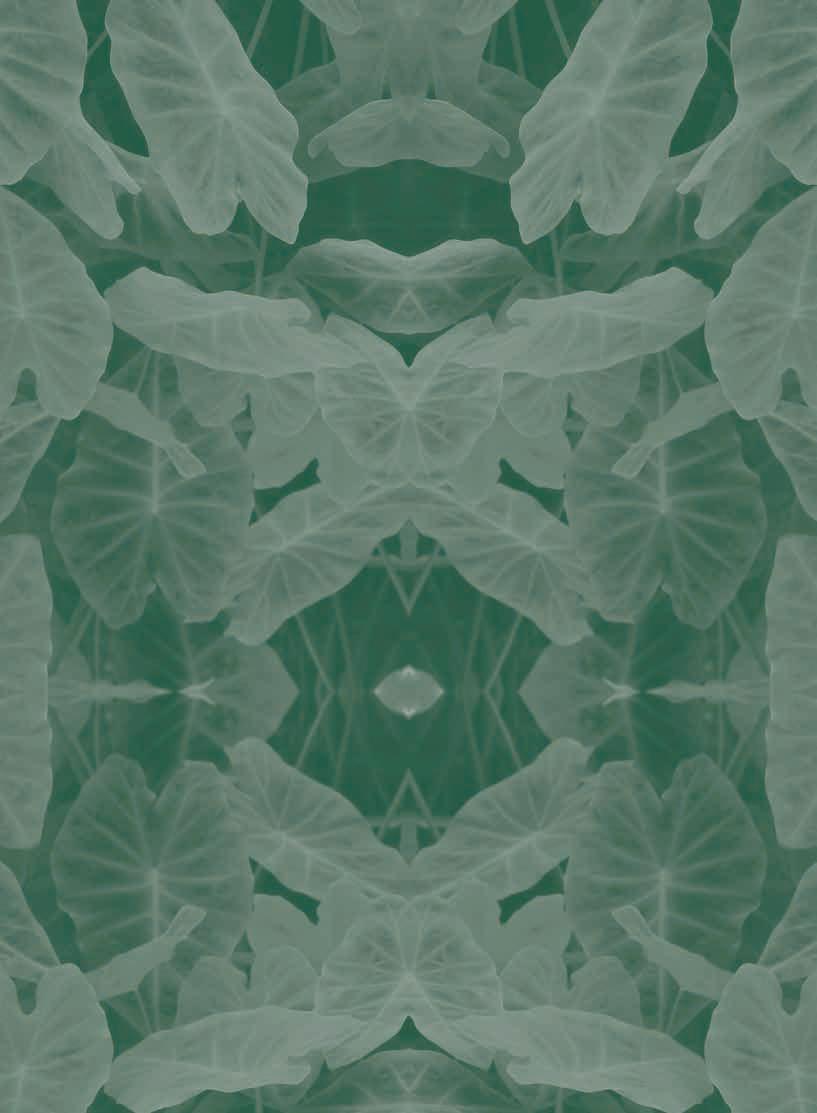
FLUX PHILES
| MAOLI |
Na Kama a Ohiohikupua Laua ‘o Lauhuki
Alaka‘i ‘ia a a‘o ‘ia nā hui ulana ‘o Hui ‘Ala Hīnano lāua ‘o Hui Waianuhea o Ka Pua Hala e Kā‘eo Izon i nui a‘e ai ko nā haumāna ‘ike ma ka ulana lau hala, ka ‘ike Hawai‘i, a me ka ‘ōlelo Hawai‘i.
KĀKAU ‘IA E C. KAWOHIKŪKAHI ADVERSALO
PA‘I KI‘I ‘IA NA MICHAEL VOSSEN
HO‘OPONOPONO ‘IA E N. HA‘ALILIO SOLOMON
Huki ʻia ka lau o ka hala a ulana mikioi ʻia e ka lima a lilo i mea paʻa e hoʻohana ʻia ai. He moena paha, he peʻahi paha, he pāpale paha a pēlā aku. Aia i ka mākaukau o ka lima. Nui nā hui e hoʻomau ana i ua hana noʻeau nei, ʻo ka ulana lau hala. Eia mai ʻelua o ia mau hui. Hoʻokumu ʻia ka Hui ʻAla Hīnano ma ka makahiki 2019 ma lalo o ke alakaʻi a me ke aʻo ʻana a ke kumu, ʻo Kāʻeo Izon, a me ka mālama pū ʻana a ke kahu, ʻo Pueo Pata. He hui ulana lau hala ia no nā kāne. Hoʻokumu ʻia nō hoʻi ka Hui Waianuhea o ka Pua Hala no nā wāhine i ka makahiki 2022. Ma ia poʻe hui ʻelua e mālama ʻia ai nā kama a Ohiohikupua lāua ʻo Lauhuki ma ka hoʻomau ʻana i ka ulana lau hala, me ka mālama pū ʻia hoʻi o ka ʻike a me ka ʻōlelo Hawaiʻi. Ua komo ʻo Kāʻeo i kēia hana ma kahi o ka makahiki 2010 ʻoiai ʻo ia e noho ana me kekahi o kāna kumu, ʻo Ipolani Vaughan. Ma kona hale, ua ʻike ʻia e ua Kāʻeo nei nā mea nani āna i ulana ai me ka lau hala. ʻO kāna noi akula nō ia i kāna kumu e ulana ʻia mai kekahi o ua mau mea kāhiko nāna. Eia kā, ʻo ka hōʻole maila nō ia me ka pane ʻana aʻe, “ʻO ia kou makemake, nāu e ulana nāu iho.” ʻO kā Kāʻeo ulana nō a kupu maila kekahi pilikia ma ka ulana ʻana i
maopopo ʻole ai ka hoʻoponopono kūpono ʻana iā lāua. Lawe ʻia kāna pūpū mauʻu i mua o ke kumu a Ipolani, ʻo Gladys Grace kona inoa. I nānā aku kāna hana i kā Kāʻeo mea i ulana ai, pane aʻela ka loea, “Maikaʻi kou lima. E ulana ʻoe.” Ua aʻo ʻia ʻo Kāʻeo e Ipolani Vaughan, Evva Lim, Suzi Swartman a me Margaret Lovett. No Pueo, ʻoiai ʻo ia e noho haumāna ana ma kona wā ʻōpio ma ka hālau hula a Nona Mahilani Kaluhiokalani, ua hoʻokuleana ʻia nā haumāna e hana lima i nā mea like ʻole no ke kūʻai ʻana aku ma ka wā Kalikimaka. Pēlā ʻo ia i komo mua ai i ka nala lau hala a no laila, ʻo Nona a me nā kūpuna o kāna hālau nō kāna poʻe kumu nala mua. Ma ia manawa, ʻaʻole i makemake iki ʻia ka nala e Pueo. I ka makahiki 2016, ua paipai ʻia ʻo ia e nala i peʻahi. Eia kā, he maʻalahi, ʻaʻohe hemahema o ka lima. I ka makahiki 2017, noi akula ʻo ia iā Kāʻeo e aʻo mai i ka nala maka liʻi. He nui loa kona aloha i ka nala. ʻO kona lilo aʻela nō ia, ʻo ia ka haumāna mua a Kāʻeo. Eia nō ma lalo ke ʻano i nīnauele ʻia ai ʻo Kāʻeo lāua ʻo Pueo e pili ana i nā hui ulana, ʻo ka Hui ʻAla Hīnano me ka Hui Waianuhea o ka Pua Hala.
32 | FLUXHAWAII.COM
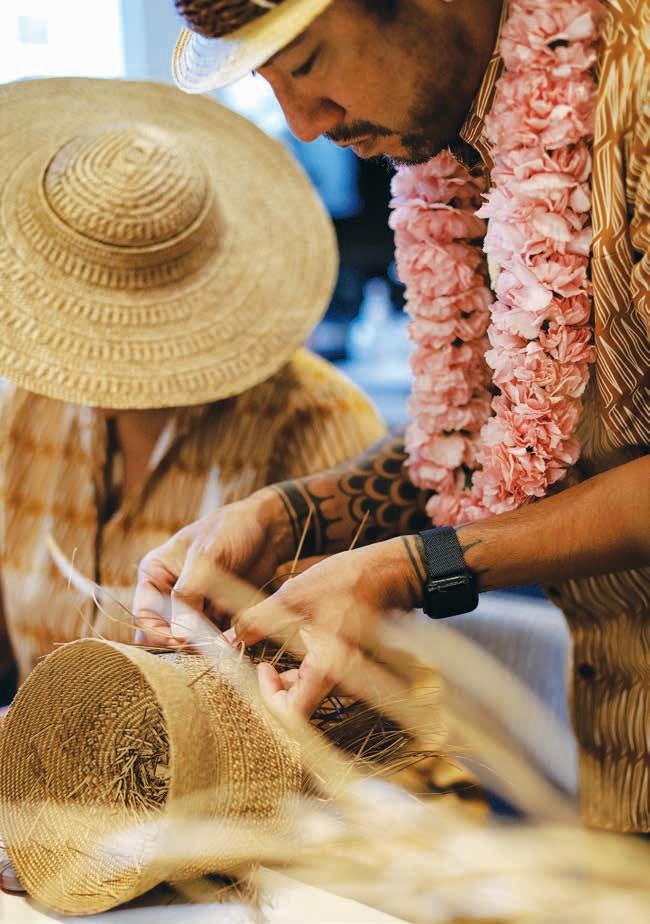
33
C. KAWOHIKŪKAHI ADVERSALO Aloha mai e Kāʻeo ʻolua ʻo Pueo. No ke aha i hoʻomaka ʻia ai ka Hui ʻAla Hīnano?
KĀ‘EO IZON ʻO ke kumu i hoʻokumu ʻia ai ka hui, ʻo ke noi ʻana a kekahi hoa i ke aʻo ʻana i kāna keikikāne. He ʻumikūmākahi ona makahiki ma ia wā a ʻaʻole au i aʻo mua i nā keiki a kānalua nō kēia. Ua hele maila ia keiki a kāhāhā wau i kona ʻeleu.
KA ʻOkoʻa ke ʻano o ke aʻo a nā kumu ulana, ʻokoʻa nō hoʻi kāu, e Kāʻeo. E wehewehe mai i ke ʻano o ke aʻo ʻia ʻana o ko kāu poʻe hui.
KI ʻO kekahi mea, ke aʻo ʻia kekahi maka, kekahi piko paha a huikau paha ka haumāna, ʻaʻole i hāʻawi wale ʻia ka pane. Hāpai ʻia nā nīnau ma mua ona e hōʻeuʻeu iā ia a kūkākūkā māua ā maopopo. Aia a maopopo, nāna nō e wehewehe aku i kekahi haumāna a paʻa ka manaʻo iā ia.
PUEO PATA ʻO ka ʻōlelo noʻeau ʻo: Paʻa ka waha, nānā ka maka, hana ka lima. He mea nui ia ma nā hui. Eia kā, ʻaʻole nō ʻo Kāʻeo e kāohi iki mai iā mākou ke kupu kekahi poʻe nīnau. Paipai nui ʻia nā nīnau. Eia hoʻi, aia a hemahema a hewa paha ka hana, hōʻole mai paha ʻo Kāʻeo a hoʻolale ʻia ka wehe aku a hana hou. Aia a kūpono, mea mai ʻo ia, "ʻĒ, ʻē, kēnā.” A, ʻo kekahi, nānā nui mākou i kona mau lima ma ka nala ʻana i mau laʻana no ka hana kūpono.
KA No kēia hui, he aʻo ʻia nō ka moʻolelo o ka hala, ua haku pū ʻia hoʻi he mau pule e Pueo. Pehea e kōkua ai ka ʻike o lākou i ke aʻo a me ka hoʻopaʻa ʻike ʻana o nā haumāna, a me ko lākou pilina me ia hana he ulana?
PP No ke kaʻao o Ohiohikupua i loaʻa iā Fornander, he waihona nō ia no ka ʻike o kēlā me kēia ʻano o ka pū hala, o ka lau hala, no ka hoʻomākaukau ʻana i nā lau, a he mau mea waiwai aku. No nā pule aʻu i haku ai, ua hoʻokomo wau i nā loina kūpono no ko ka Hui ʻAla Hīnano a me ko ka Hui Waianuhea o ka Pua Hala, a me ka moʻokūʻauhau o kā Kāʻeo mau kumu. Aia nō a hoʻopuka ʻia kēia mau pule, ua hoʻopili ʻia mai kēia mau mea o ke au i hala me mākou i kēia au e holo nei. Penei kekahi, ua nui loa nā lāhui e nala ana i ka lau hala a me nā ʻano mauʻu ʻē aʻe a puni ka honua. Ua like a like nā maka. Akā nō naʻe, iā kākou, ʻo nā loina, nā huaʻōlelo, ka ʻike kuʻuna, nā kaʻao, a me ka lawena i loaʻa mai mai ke kumu mai a i ka haumāna aku–ʻo ia nō nā mea i Hawaiʻi ai kā kākou nala ʻana. No laila, ʻo ia nō kekahi o nā mea aʻu i hoʻokomo ai i loko o kaʻu mau pule a mele.
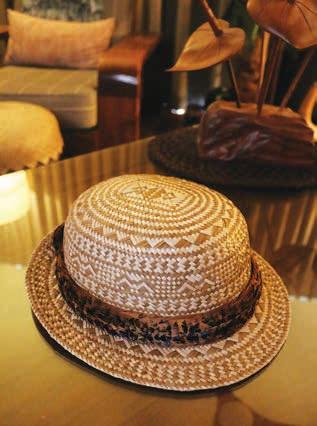
He pāpale nona ka maka manu o kū na Kā‘eo Izon. Ua haku ‘ia ua maka nei ma muli o ka lele ‘ana o ia po‘e manu maoli e ‘ike ‘ia ana ma waho o kona hale ku‘i i kēlā me kēia lā. Maluna, ki‘i ‘ia na Kā‘eo Izon. ‘Ākau, ki‘i ‘ia na Ruben Carrillo.
KA Ma nā hui, ʻaʻole no ke kumu hoʻokahi iho nō ke kuleana ʻo ka mālama ʻana i kēlā me kēia haumāna. Paipai ʻia nō naʻe ka mālama aku a mālama mai, ke kōkua aku a kōkua mai hoʻi o nā haumāna, me he ʻohana lā. No ke aha i lilo ai kēia ʻano he mea nui no ka hui, pehea hoʻi ia e kōkua ai i nā haumāna ma ko lākou ʻimi ʻike i ka ulana lau hala?
KI Ua hū ka nui o nā haumāna a hiki ʻole iaʻu ke kōkua iā lākou a pau ma ka manawa hoʻokahi. No laila, he kūpono ke kākoʻo a kōkua ʻana kekahi i kekahi. Pēlā nō e hoʻopaʻa ʻia ana nā mea a lākou i aʻo ai.
PP Ua kumu nō nā hui i ka pilina me ka manaʻo ʻo “Aloha kekahi i kekahi.” No ko mākou kaukaʻi nui ʻana kekahi i kekahi, ua ʻike mākou he ikaika ko laila. A, he ʻano laʻana kēia no ka pono o nā hana ma ka nala lau hala a no ka pono o ka nohona.
34 | FLUXHAWAII.COM
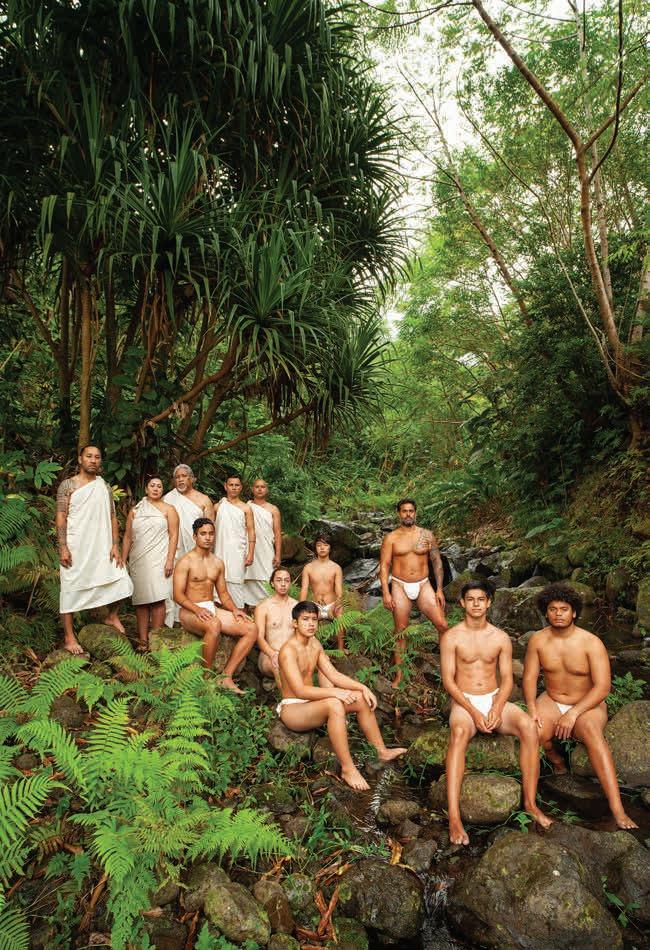
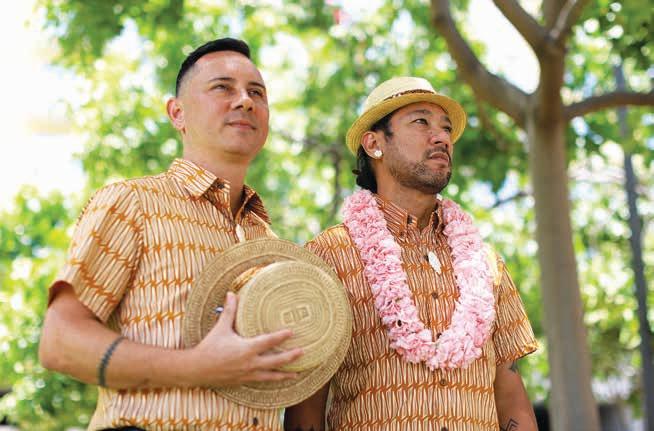
KA E Kāʻeo, kaulana loa nō ʻoe ma TikTok a me Instagram hoʻi. Ma nā mea āu e hōʻike ai ma luna o laila, he aha kāu mea e makemake nei e ʻike mai ka lehulehu?
KI Makemake nui ʻia nā mea like ʻole i ulana ʻia me ka lau hala. Hoʻokahi naʻe pilikia i ka poʻe o kēia wā, maopopo ʻole iā lākou ka nui o ka hana. ʻIke ʻia ka hopena wale nō. Ke ʻike ʻia ke kumukūʻai, namunamu kekahi, “He lau wale nō. ʻAʻole makepono. Pipiʻi.” He ʻoiaʻiʻo nō, he lau hala. Eia naʻe, pehea ka lima? He maiau? He hōlona? ʻO ia ka mea nui. ʻO ia ke kumu i hoʻokau ʻia ai nā wikiō ma laila, i hiki i ka lehulehu ke ʻike maka i ka hana nui o ka poʻe ulana a hiki ke mahalo i kēia hana lima noʻeau.
KA He aha kā ʻolua pahuhopu no ka poʻe haumāna ma kēia mua aku? Pehea hoʻi kā ʻolua makemake no ia loina
KI
he ulana lau hala, a no ka mau ʻana hoʻi o nā loina a kuanaʻike paha e aʻo ʻia nei ma nā hui?
E hoʻopākela, e hoʻokāʻoi, a e hoʻomau aku.
PP ʻO ka hoʻomau ʻana o nā haumāna me ka lokomaikaʻi nui i hoʻoili ʻia ma luna o mākou maiā Kāʻeo mai. E hoʻomau nō me ke aloha ʻana o kekahi i kekahi, a me ka ʻaui ʻole ʻana mai ke ala aku o ka hana kūpono.
Ho‘okumu ‘ia ka Hui ‘Ala Hīnano ma ka makahiki 2019 ma lalo o ke alaka‘i a me ke a‘o ‘ana a ke kumu, ‘o Kā‘eo Izon, a me ka mālama pū ‘ana a ke kahu, ‘o Pueo Pata. Ua komo ‘o Kā‘eo i kēia hana ma kahi o ka makahiki 2010 ‘oiai ‘o ia e noho ana me kekahi o kāna kumu, ‘o Ipolani Vaughan.
This story is from Flux Hawaii’s Hawaiianlanguage reporting series featuring articles conceived, commissioned, and produced all in ‘ōlelo Hawai‘i, in partnership with Kīnā‘ole Foundation. Visit fluxhawaii.com/ section/olelo-hawaii to read this story in English.
36 | FLUXHAWAII.COM
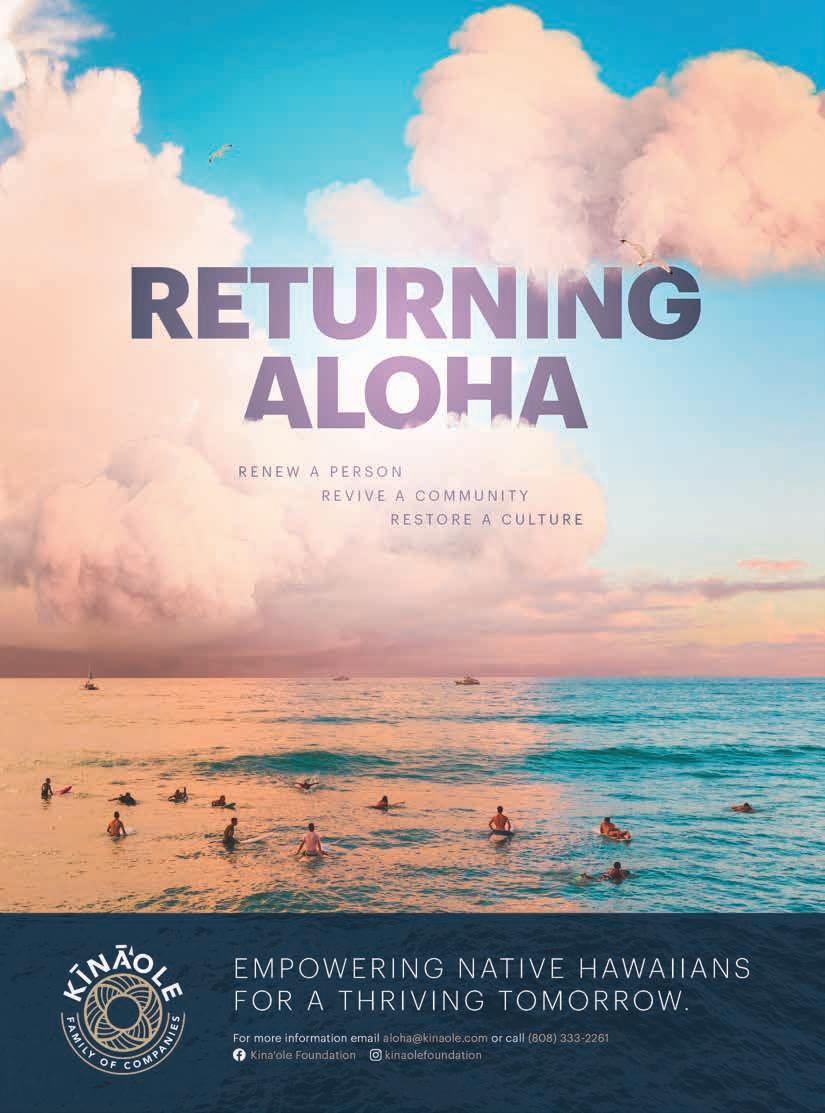
Nature’s Crown
The beauty and brio on display in a Kaua‘i aunty’s floral headpieces captivate social media.
TEXT
BY
ALEXIS CHEUNG
IMAGES BY HIROKO LETMAN
We never see her face, not really. The portraits are taken at elevated angles so we glimpse a corner of tanned forehead, the crinkle of under eye smile lines, an ear graced with a delicate hoop or pearl earring. If anything we see her profile at most, from the left side with its strong cheekbones. What’s always on view are the flowers, arranged artfully in her pulled back, silvering hair.
This is the Instagram account of @hirokolele. The woman in the photographs is known simply as Aunty Nani. We, the 14,300+ followers, understand this because the captions always follow the same convention: “Aunty Nani with…” insert whichever florals (with a hashtag) she happens to be peacocking that day, and there have been many since the first post of her in 2016.
The flowers themselves range from minimalist — a single-stem white lily as large as an open palm; a solo sherbet-colored hybrid hibiscus with ruffled petals tucked into a neat bun — to maximalist: tusk-like blue jade with tī leaves are pinned to stand upright, like a toothy crown; a Turks cap lei is folded over and flanked by a phalanx of carnations, chrysanthemums and ferns, like a blooming bonnet. Some arrangements aren’t even flowers. Scroll back to 2018. There’s a cluster of orange eggplant and fern dangling in her hair, a clutch of handmade coconut palm frond roses speared to touch edges so they look like a shield, or kauna‘oa, the stringy, yellow-orange endemic vine, coiled around her bun.
How did I find the account? A repost, probably, some time in 2022. Yet scrolling it from bed felt more like strolling through a botanical garden or national park: calming because the beauty of nature awes you at every turn. Her flowers, their design, were so beautiful. The feeling I had was distinctly different from most emotions the social media app inspires — covetousness, jealousy, insecurity, inattention — probably because it
38 | FLUXHAWAII.COM FLUX PHILES | STYLE |
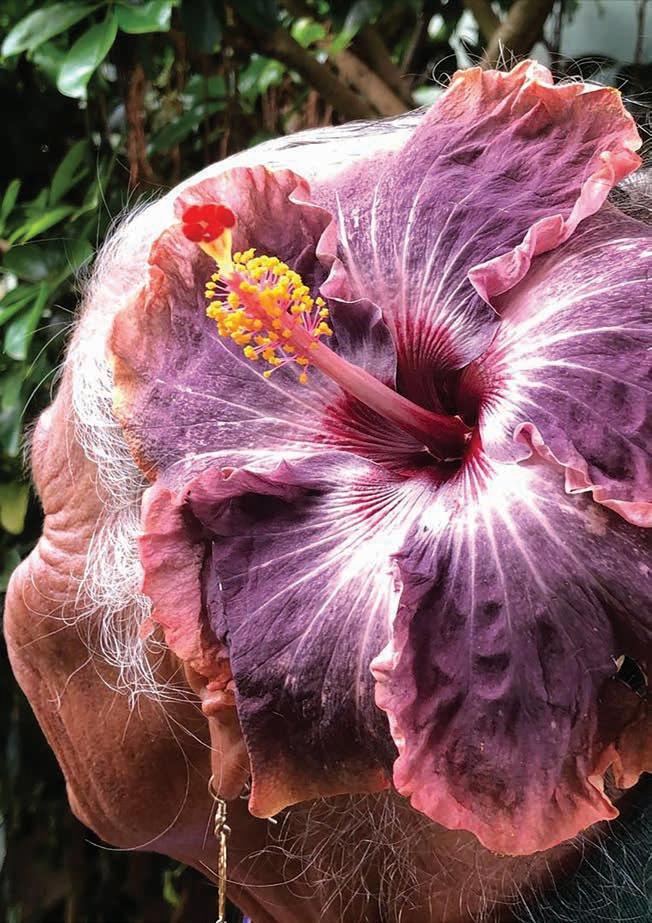
39

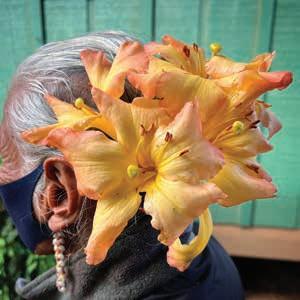
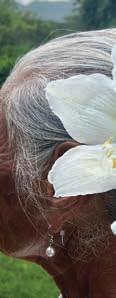
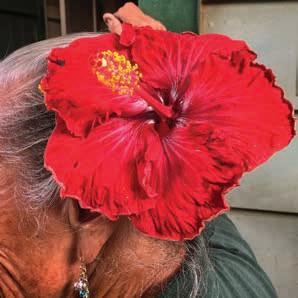
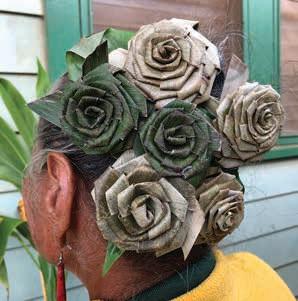
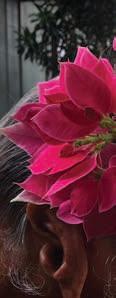
40 | FLUXHAWAII.COM
IMAGES COURTESY OF @HIROKOLELE
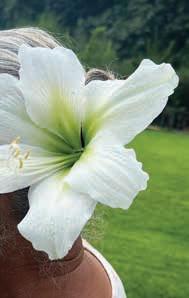
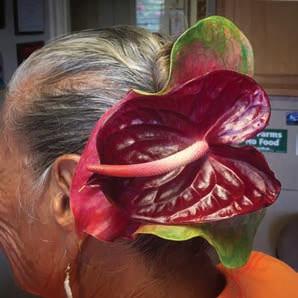
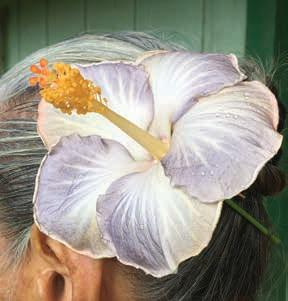
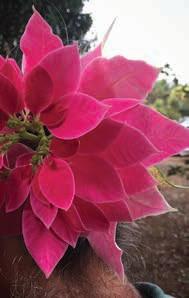
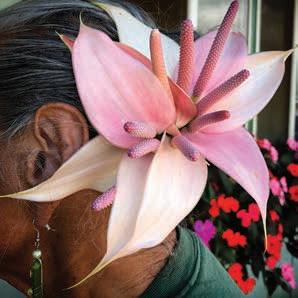
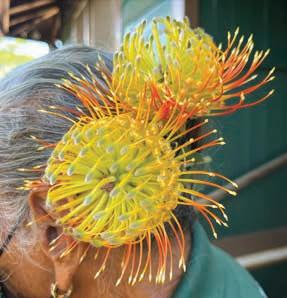
MINIMALIST TO MAXIMALIST
From anthuriums and lilies to blue jade and hibiscuses, Aunty Nani delights tens of thousands online with her bold and beautiful adornments.
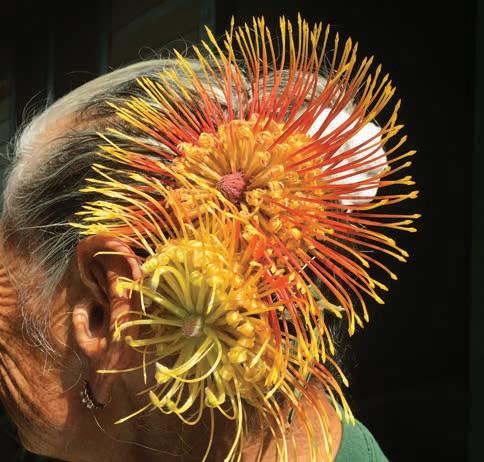
lacks the pretense and perfection that runs rampant across people’s grids.
“I just take the photo in the setting where I happen to run into Nani, even if it is in front of a parked car, outside of the restroom, next to a rubbish bin or by an old truck,” says Hiroko Letman, the woman behind the account, in an email. As a landscape architect on Kaua‘i, Letman was drawn to Aunty Nani for the same reasons tens of thousands on the internet are enamored with her now: for her bold, beautiful flowers. The two work together at a plant nursery on the island, and everyday, she would spot Aunty Nani sporting a new hairdo, ergo the impulse to document it.
Even more striking to Letman though was the confidence with which Aunty Nani, in her late eighties, styled herself. Originally from Japan, “we don’t have this custom to wear flowers in our hair every day. At first I thought this was something that young women do,” explains Letman. “But I saw Nani wearing these very large, gorgeous flowers so beautifully, it changed my
impressions about beauty and age. I realized it’s okay for older women to be very bold and expressive just like young women.”
Letman’s instinct was prescient given the “lei-naissance” of late. From lei and tastemaker Meleana Estes’ Lei Aloha recent book to Island Boy shop owner Andrew Mao’s statement necklace-like creations, lei are no longer viewed as celebratory tokens but everyday expressions of personal style and design sensibilities. Aunty Nani, with her singular styling, is the ultimate ambassador for taking the ancient tradition of adorning yourself with flowers — hers come from many places: her garden, the nursery, the sale section of the supermarket — and making it wholly your own.
Though we never see her face, Aunty Nani feels familiar, as if she could be your own tūtū or aunty or kumu or woman you see daily at the grocery store. She’s a grounding, assured presence, reminding us that beauty is ubiquitous and adornment available to everyone, if only we go outside and look.
The woman in the snapshots is known simply as Aunty Nani. Since 2016, a social media account broadcasts whichever flora her hair is adorned with that day.
Follow on Instagram at @hirokolele.
42 | FLUXHAWAII.COM
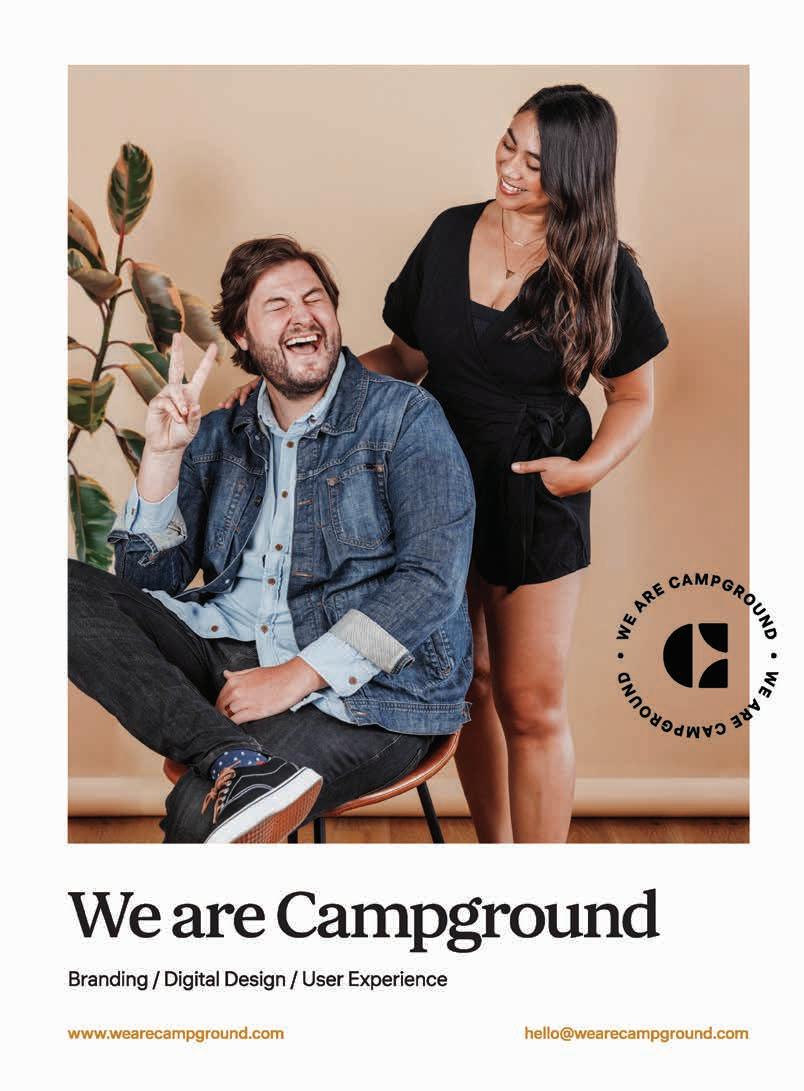
Sticky Obsessions
Megan Kamalei Kakimoto embraces the macabre and ghostly side of Hawai‘i in her debut short story collection.
TEXT AND
INTERVIEW
BY KYLIE YAMAUCHI
IMAGES BY MEAGAN SUZUKI
A thrilling examination of the psyches of Native Hawaiian women, Megan Kamalei Kakimoto’s debut collection of eleven short stories Every Drop is a Man’s Nightmare is as haunting and titillating as its title suggests. The Hawaiian Japanese writer from Honolulu muses on ancient moʻolelo and a tragic history of colonization and exploitation, in order to conjure a present-day Hawaiʻi where cunning menehune appear on one’s doorstep, military strikes shower the island of Kauaʻi, deadly night marchers are summoned through kapu words, and bringing pork down Old Pali Road has dire, atavistic consequences.
The collection drastically veers from popular literature about the islands, which tend to set their narratives against a soothing tropical background. Kakimoto, however, prioritizes penetrating the intimate lives and troubled minds of her characters as they contend with motherhood, lust, ambition, and grief. Kakimoto’s women aren’t mad, but they aren’t “all right” either. The stories that result are unsettling, touching, absurd, and humorous, an ode to the complexities of Hawaiian femininity.
Despite the book’s serious subject matter, Kakimoto herself is naturally lighthearted and joyful, eager to discuss her love of Hawaiʻi and the women she admires. The 30-year-old has had her stories published in Granta, Conjunctions, and Joyland; Every Drop has been reviewed by Publishers Weekly, selected by independent booksellers as an Indies Introduce title, and featured by Book Riot as an excellent short story collection by an Asian author. We sat down with Kakimoto to talk story about her women, the kuleana of writing about Hawaiʻi, and the drop that is every man’s nightmare.
KYLIE YAMAUCHI Let’s start with the story which lends its title to the entire collection. What led you to write about menstrual blood and Old Pali Road? How’d you even begin to bring them into conversation with each other?
MEGAN KAMALEI KAKIMOTO Blood captures the beauty and horror of the female body, and it’s always been something that I knew in all my stories I’d be interested in exploring. I get excited when I see other fiction that unabashedly celebrates menstruation and talks about it in a very casual way because it’s a part of normal life.
As for Old Pali Road, so many superstitions that I grew up being warned about and am still reminded of by my family figures into historic sites. The Pali is so rich in moʻolelo, like the familiar story of not traveling with pork in the car. The Pali was part of the trek that I would make as a kid from here in Makiki to Gram and Papa’s place in Waikāne Valley. No matter how often we went, my mom always brought that story up. It really stuck in my head.
I was interested in taking a sacred site, figuring it as a central place where there’s so much heat already in terms of its history and moʻolelo, and zeroing in on one story of a girl: Tracing her from the moment of her first maʻi in this monumental place and chronicling her life as she contends with what it is to be a woman and to have a physical body, and to be concerned with things like bleeding and weight. It felt like a great intersection to start that story.
KY Speaking of places, in the entire collection, there’s not a single image of Hawaiʻi as a paradise. The images that we’re so used to from tourist advertisements
44 | FLUXHAWAII.COM FLUX PHILES | LITERATURE |
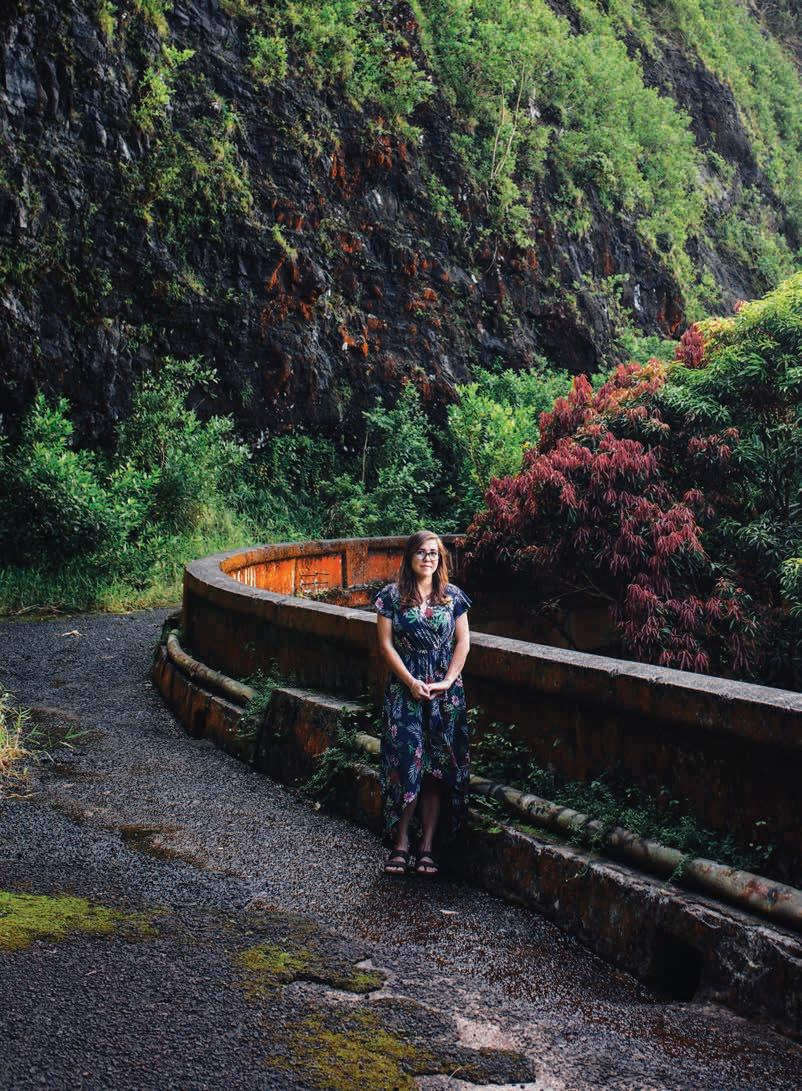
like white sand beaches, none are in your collection. In “Every Drop,” a lot of it takes place in private and grimy spaces. When it’s not in these spaces, it’s at Old Pali Road. What fascinated you about portraying this darker side of Hawaiʻi that people aren’t used to?
MKK A lot of that decision was subconscious. But maybe there was also my awareness of mainstream media’s depiction of Hawaiʻi. There’s, on the one hand, a real gut reaction of excitement that these [depictions] produce, from seeing your people and culture portrayed in art. But the consequence of our lack of representation in media is that when we are afforded entry and allowed to take up space, gratitude occludes the larger questions: Are these depictions respectful, are they authentic, are they thoughtful? A lot of times, contemporary portrayals of Hawaiʻi don’t let these questions enter into the conversation. With this collection, one of the biggest things I struggled with was fear. I resisted writing about Hawaiʻi for so long. I had this big fear of failing to do right by this place and the pressure of that silenced me. When I decided to lean in and force myself to write into that fear, that’s when these stories came alive and I was able to meet the women who charge through this collection. It didn’t become a question of whether or not to write about Hawaiʻi because at that point Hawaiʻi was inextricable from the characters. And these women don’t live in glamorized portrayals of Hawaiʻi. It was a pleasure to explore a very different side of Hawaiʻi that I hope is still recognizable to Native Hawaiians and people who live here as well.
KY It sounds like you felt a heavy kuleana when writing this book. That’s not just something that Native Hawaiian writers face but all writers of color share. You touch on this anxiety in the story of “Aiko, the Writer.” How there’s an expectation of writers of color to only write about their race and their own racial experience. As someone who works in publishing, I can say that’s how a lot of writers get pigeonholed. Do those concerns cross your mind ever?
MKK There’s this Carl Phillips quote I love so much pinned on my desk. He talks about how he writes from a place where his gender, race, and sexual identity are never outside of his consciousness but they’re not the forefront of his consciousness either. It’s about allowing space to explore other interests as well. I really love exploring women’s bodies, the violence that’s visited upon them, and the immense power of them. I’m also interested in questions of isolation and questions of belonging. A lot of these passions extend outside of Native Hawaiian identity. What I’ve come
to terms with is being okay with following whatever obsession is in front of me and not letting questions of readership or audience or representation enter into, at least, the first draft phase.
KY In the short story “Aiko the Writer” there’s that great quote from her tūtū about the white gaze: “There are ways to tell Hawaiian stories and ways to make Hawaiian stories vulnerable to the white hand. And you’ll need to be extremely careful with your choices.” I assumed this is directly applicable to your writing process. When does the white gaze come into play?
MKK I think it only comes into play in revisions, for me. I also don’t know if it’s helpful at all to think about. I’m often overcome with anxiety: Will white readers read this and pull from this only the negative? Will they think I’m depicting a particular character as a villain? I have to remind myself that I know what readers I want to be reaching and what readers are going to resonate with these stories. I also understand there are certain things out of my control, in terms of how some stories are read and interpreted, especially by people outside of my lived experience. Having to come to terms with that has been a bit of a process, but it’s been important to keeping my sanity [laughs].
KY I think you did a really good job in this book of not explaining too much to white readers.
MKK That’s good to know.
KY That you don’t define or italicize every Hawaiian word, that they’re spelled with ʻokina and kahakō makes a difference. What also struck me was how the women in this collection were far from perfect. Sadie is the first Kanaka woman that we meet and she’s not what we expect her to be. She’s sickly, kind of a pushover, silent. What went into the construction of this character and not someone who is more traditionally feminist, if that’s even the right word?
MKK I love a messy protagonist. Starting with her maʻi, the story tracks monumental moments in Sadie’s womanhood. These are also moments when anyone would be really vulnerable and probably making bad decisions. I appreciate fiction that affords women the space to make mistakes and be messy, while also being rebellious and strong. Sadie’s a really great example of a messy woman and a silent one, like you said. She has moments of silence that feel incredibly frustrating to me but also deeply human.
So much of the story for me was tracking Sadie’s relationship with her body, which then becomes her pregnant body, and then it becomes the body that has
46 | FLUXHAWAII.COM
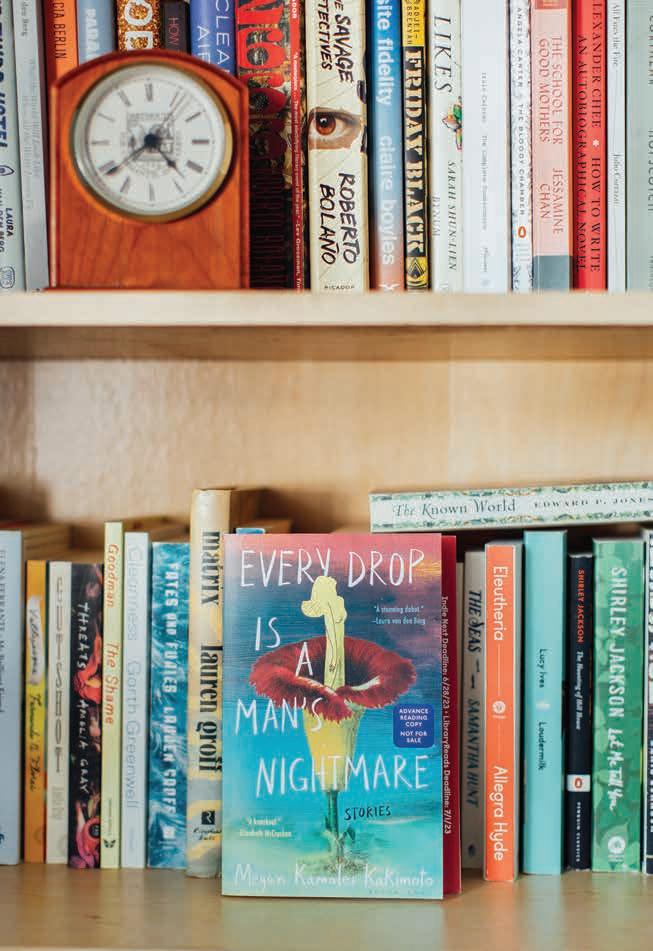
housed a baby and has lost a baby, simply by giving birth. I actually don’t know if she’s in a different place by the end of the story as she was in the beginning.
KY Just to be clear, what even happens in the end?
MKK [Laughs] It’s super ambiguous. I know it’s a weird, open-ended ending. I hope it feels like one of those endings where there’s a whole other life to be lived beyond where the story ends. I really don’t think there’s a wrong way to read it. One could wonder, Is it even a baby?
KY All the mothers in the book have really troubled or ambivalent relationships with their children. A question that I’m sure will upset some readers: How do you think motherhood factors into “madness,” or to put it less controversially, into a shared struggle?
MKK I am not a mother, so my perspective is going to be incredibly different. But I am a daughter and so much of my upbringing has been wonderfully influenced by my mom. But I have a lot of fear and anxiety of ever becoming a mom, because it feels like the most pivotal responsibility. Something that has drawn me to writing about motherhood has been investigating the different ways to be a mother and ways to care for a life. A lot of times, in my own experience as a non-mother, as a woman, there’s so much expected from me all of the time. I think it’s often hard to even conceive of what my life would look like with a child. It keeps me up at night sometimes. Some of my biggest obsessions are my biggest anxieties. So having the space on the page to explore what it means to be a mother is almost therapeutic. It doesn’t take away the anxiety, but it gives me an outlet to consider what being a mother even looks like.
KY I like the specificity to Hawaiian women, too. What makes the “madness” of Hawaiian women distinct?
MKK When conceiving of this book, I was interested in locating the intersection of Indigenous women’s bodies and the wounds of colonization. How do Native women respond to this violence and what is the horror that’s innate in possessing a body already rooted in a history of violence? Seeing these women in the collection react messily or horrifically was just as thrilling as when they chose camaraderie or compassion. Affording that range of responses was really important to me.
This interview has been edited for length and clarity.
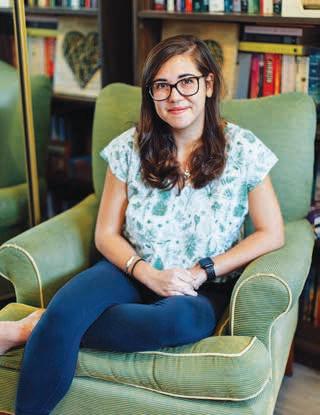
Kakimoto’s debut collection was released in August 2023. The stories that result are unsettling and touching, and an ode to the complexities of Hawaiian femininity.
MEGAN’S OWN OBSESSIONS
We asked the author what books, music, and snacks have sustained her recently during the writing process.
Monsters: A Fan’s Dilemma by Claire Dederer
The question of discomfort and of how to handle art made by monstrous individuals is one that’s constantly on my mind, and Dederer’s book-length negotiation with it speaks to all my interests.
Walking on Cowrie Shells by Nana Nkweti
What I consider a must-read collection. Truly impossible to finish it unchanged.
“Not” by Big Thief
Lately I’ve been listening to this song on repeat while writing fun flash pieces. I’m obsessed with the idea of an entire song made up of negations.
PopCorners, Kettle Corn flavor chips
I ordered these salty-and-sweet treats in bulk while working on revisions to the collection and novel-in-progress. If anyone deserves to be in their acknowledgements, it’s PopCorners.
48 | FLUXHAWAII.COM

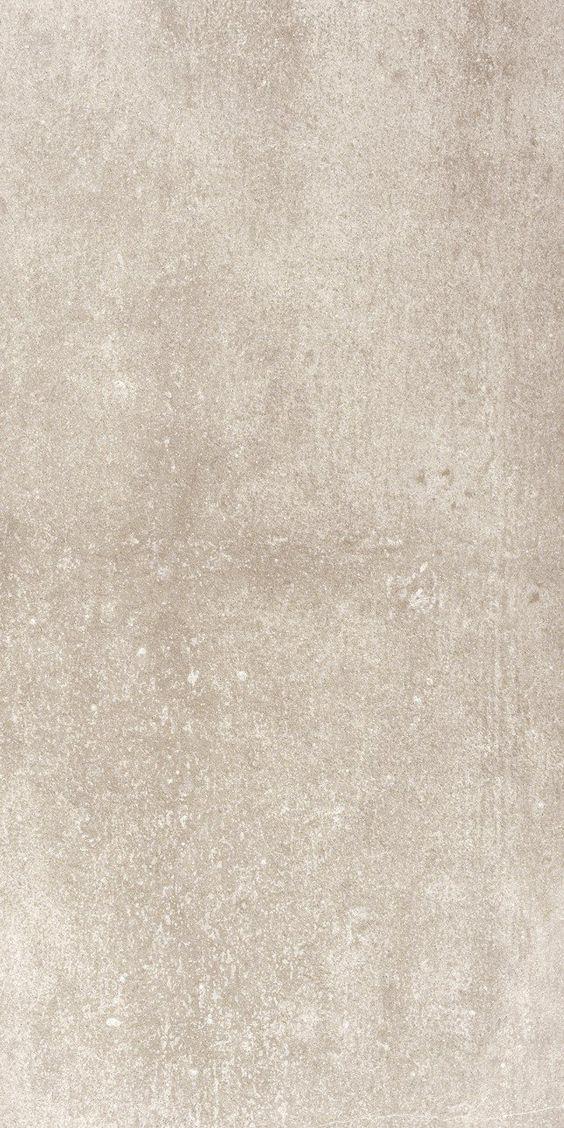
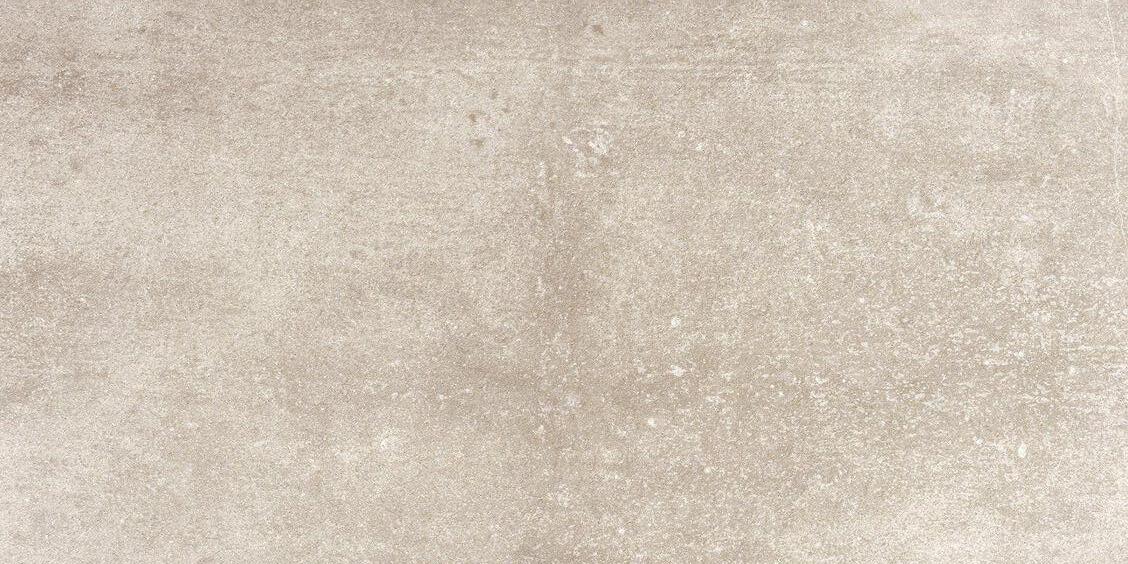
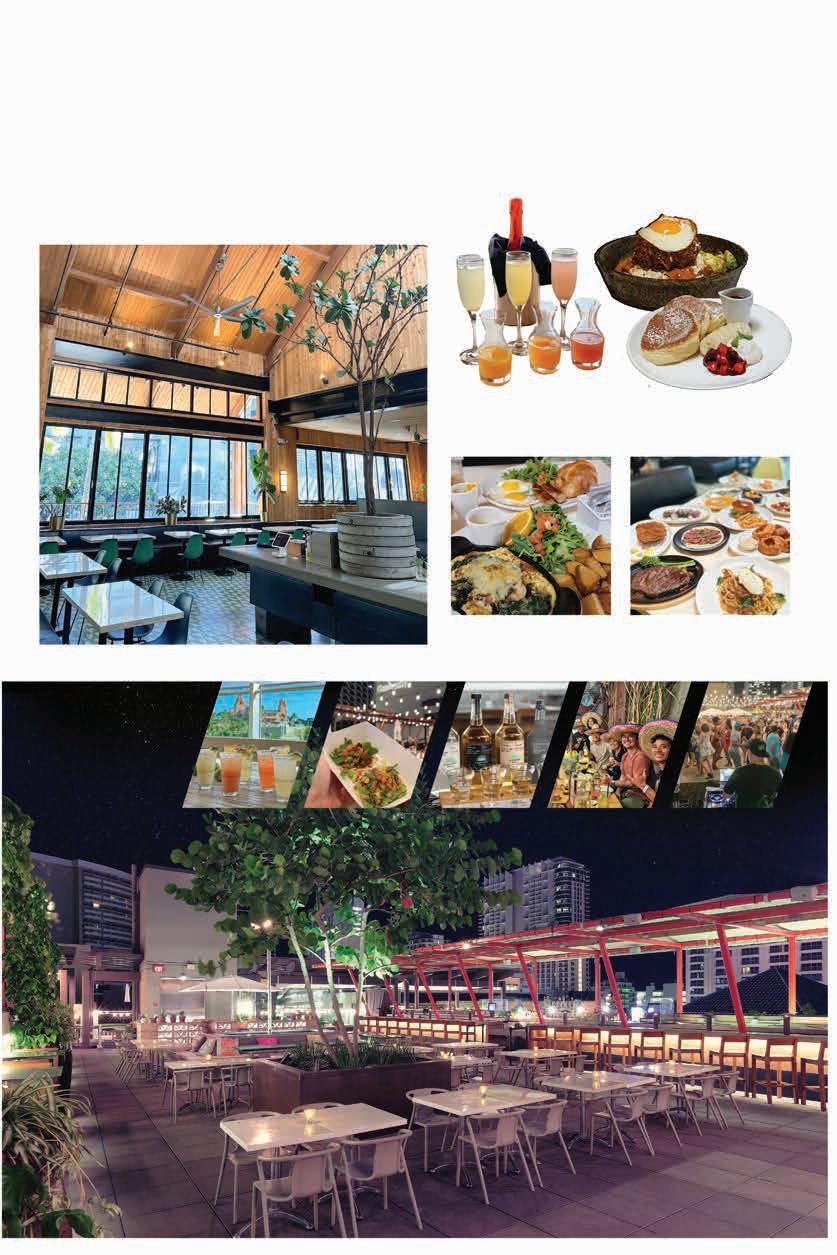
 Kalapana-Kapoho Road, Hawai‘i Island. Image by Nani Welch Keli‘iho‘omalu.
Kalapana-Kapoho Road, Hawai‘i Island. Image by Nani Welch Keli‘iho‘omalu.
FEATURES
“We want to continue this, our way of life. We want people to know about this place, to be educated about it, to see what should be preserved.”—Joni
Bagood
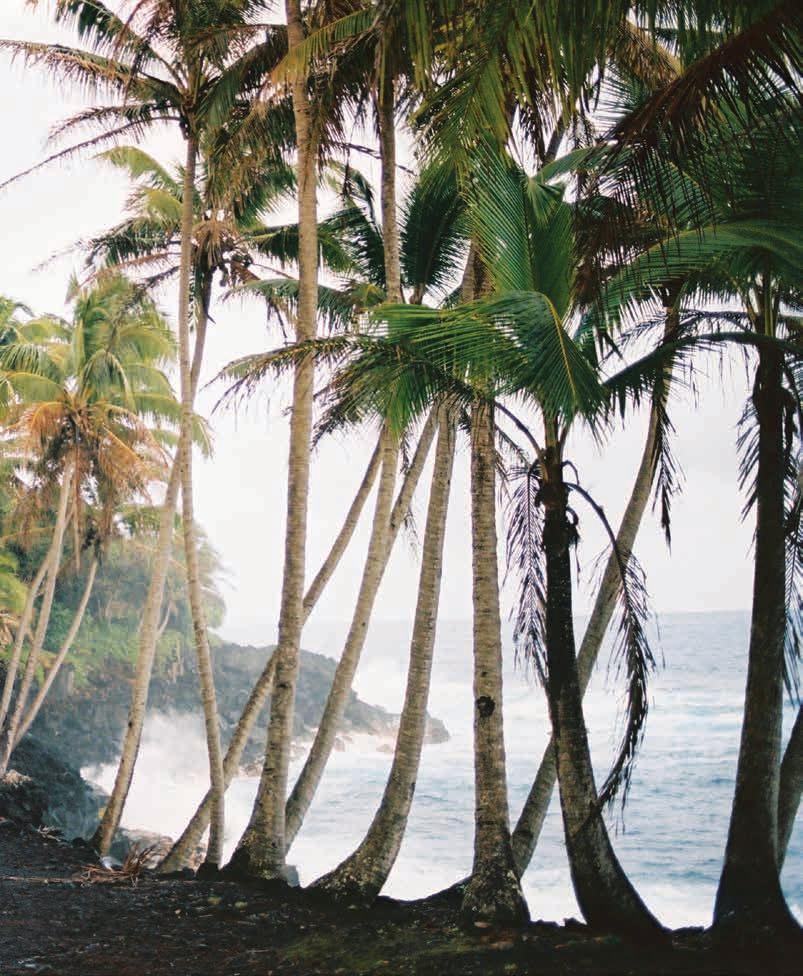
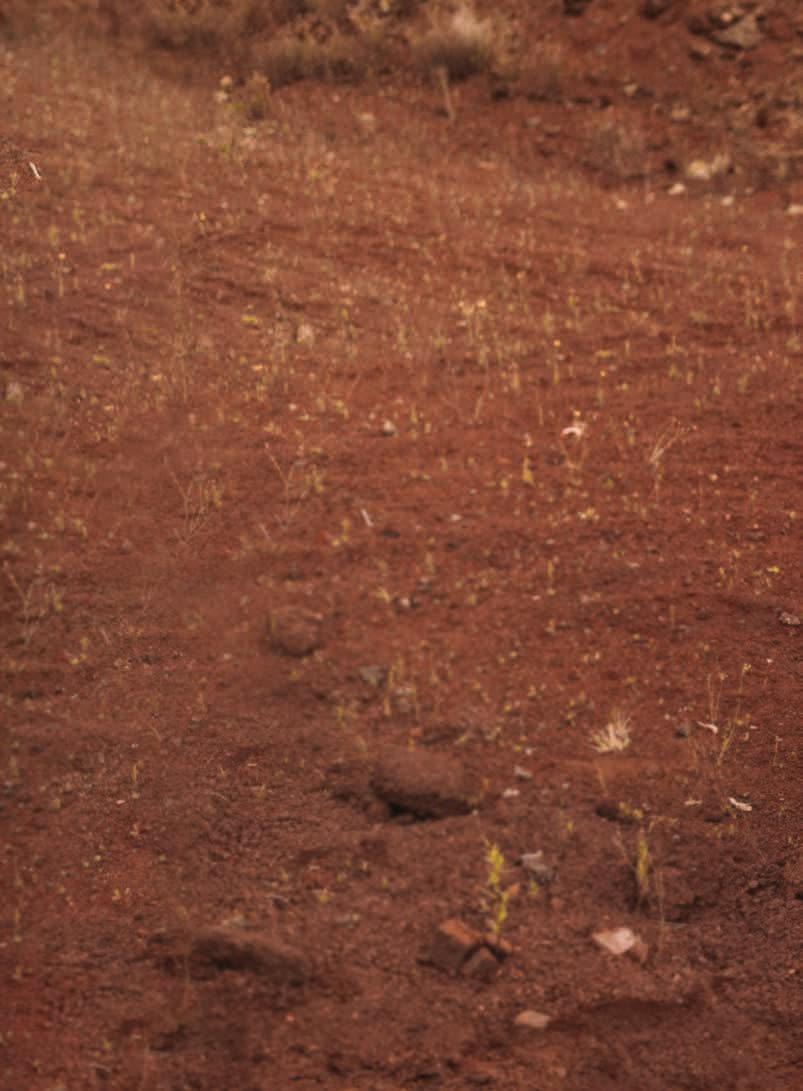
FLUX FEATURE
Ceremonial Shifts
For two Hawai‘i Island ceremonialists, re-indigenizing a people to their homeland begins with marking the seasonal transitions that Kānaka Maoli have ritualized for centuries.
TEXT BY NICOLE NAONE
IMAGES BY TAHITI KULIA HUETTER
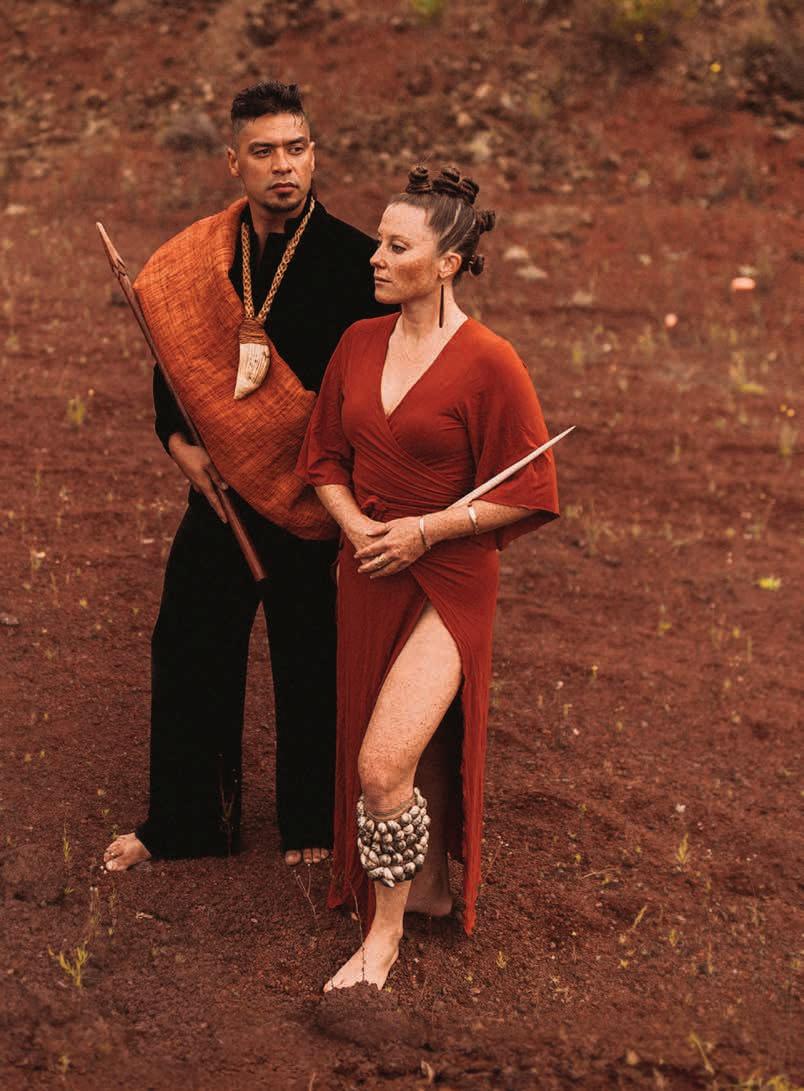
‘Ai kamumu kēkē, nakēkē pāhoehoe, kē” travels through the home, carried by the little bravado of four-year-old Uluao, as he assists his seven-year-old sister, Pilali, in retrieving paʻi ʻai from the kitchen counter. The gentle taps of Waimea rain on the kitchen windows harmonize with the earthly scents of ‘alaea and ‘a‘ali‘i, emanating from an artisanal salve simmering on the stove.
Kaleinohea Cleghorn, the children’s mother, gracefully navigates the space, exuding a profound serenity that belies her extensive training in hula, most recently with Hālau O Kekuhi. With over a decade of active participation in sacred ceremonies atop Maunakea, guided by the revered Pua Case, Kaleinohea’s presence as a prominent figure in the resurgence of Hawaiian indigeneity comes as no surprise. Drawing strength from her lineage, which features a trailblazing mother who was the first Native Hawaiian to achieve an MA in Hawaiian Archeology, and her ancestral connection to Princess Kaʻiulani Cleghorn, she emerges as a driving force in the reclamation of Hawaiian identity and connection to ‘āina. As she tends to Uluao and Pilali, and engages in conversation, her unwavering dedication to research and encyclopedic knowledge of Hawai‘i is both evident and mesmerizing. Kaleinohea’s words flow with a captivating calmness, conveying a profound depth of understanding. This quality, it becomes apparent, has been inherited by her remarkable children, as they absorb her wisdom and carry it forward with them.
The tranquility of this dreamy morning is jolted awake by the arrival of Lanakila Mangauil. True to form, Lanakila bursts through the front door, accompanied by nature itself — in this case, wind and rain. He enters with his bombastic voice, an espresso, and an energetic puppy named Luka, honored with a name inspired by the resilient and resolute protector, Princess Ruth Keʻelikōlani Keanolani Kanāhoahoa. Ordinarily, his audacious reputation as a disruptor instills fear in the hearts of those who cling tightly to the fruits of colonization, but here amongst family, it unleashes a heartwarming chaos. Through his mere presence, Lanakila defies the notion that disruption is a binary concept confined to the reductive realms of “good” or “bad.” Rather, he unveils its intrinsic importance to the realm of Hawaiian activism. Reared by ʻĀhualoa rain, Waipiʻo Valley wind, and the kumu who came before him, he is best known for his leadership in the protection of Maunakea.
In their respective artistic expressions and unwavering commitment to the pae ‘āina, Kaleinohea and Lanakila beckon us to embark on a transformative journey, where the boundaries of traditional ceremony, art, and activism converge seamlessly. Recently, the pair launched Kū Mai and Ha‘ialono, a duet of oli-centric workshops that are now entering their second year. Kū Mai explores the
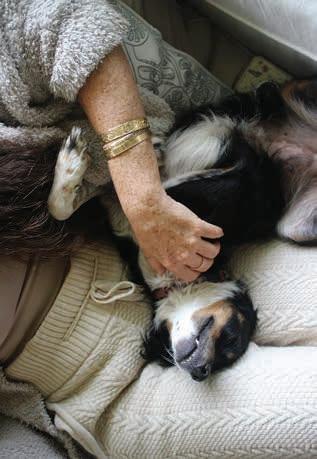
Lanakila Mangauil is executive director of HŌ‘Ā, a Native Hawaiian enrichment organization. Kaleinohea Cleghorn is the founder of E Ala Ea, a site-specific wellness brand. Images, above and opposite page, by Nicole Naone.
application of Kū during the Kū season, which is loosely considered to be during spring and summer; Haʻialono explores the application of Lono during the Lono season which falls loosely from the end of autumn through winter. Together, seated at the kitchen table, we nourish our bodies while recounting moments of the previous evening. Kū Haʻaheo, a hula drama performance by Kanu o Ka ʻĀina was the first in-person performance from the Hawaiian charter school since the Covid-19 pandemic in 2020. As music teacher for the school, Lanakila approaches education with the same hands-on dedication he devotes to activism and ʻāina. He allows no room for superfluous essays or dwelling within oppressive academic structures. Instead, these students were taught the history of their existence and the stories of their deities with a night that culminated in hula, oli, and mele.
As we all settle into our comfy chairs to discuss nation building, embodying culture, and the spiritual depths of Kū and Lono, Lanakila declares, “OK, we go talk story about our workshops.”
54 | FLUXHAWAII.COM
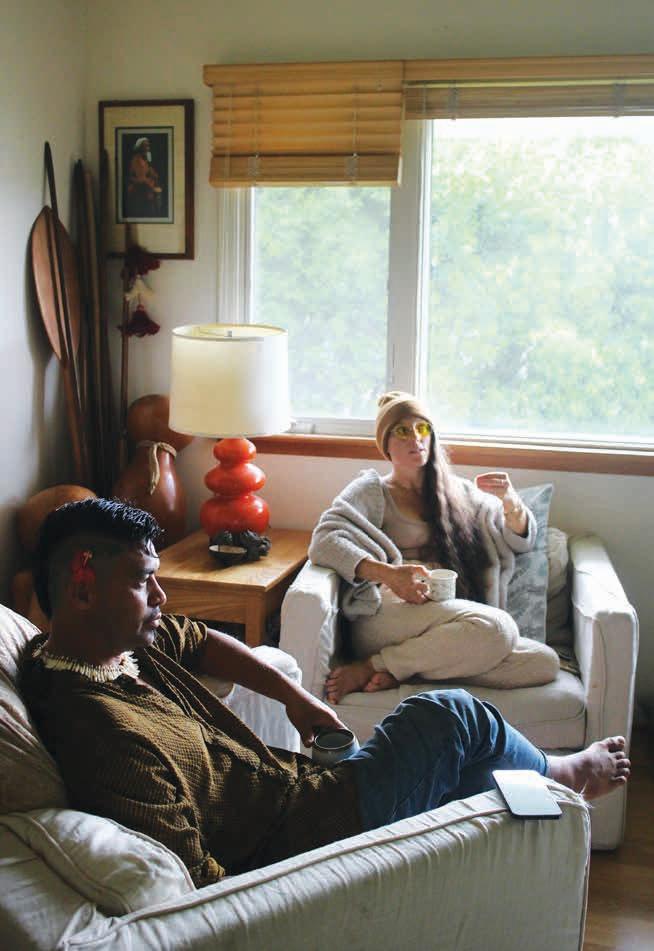
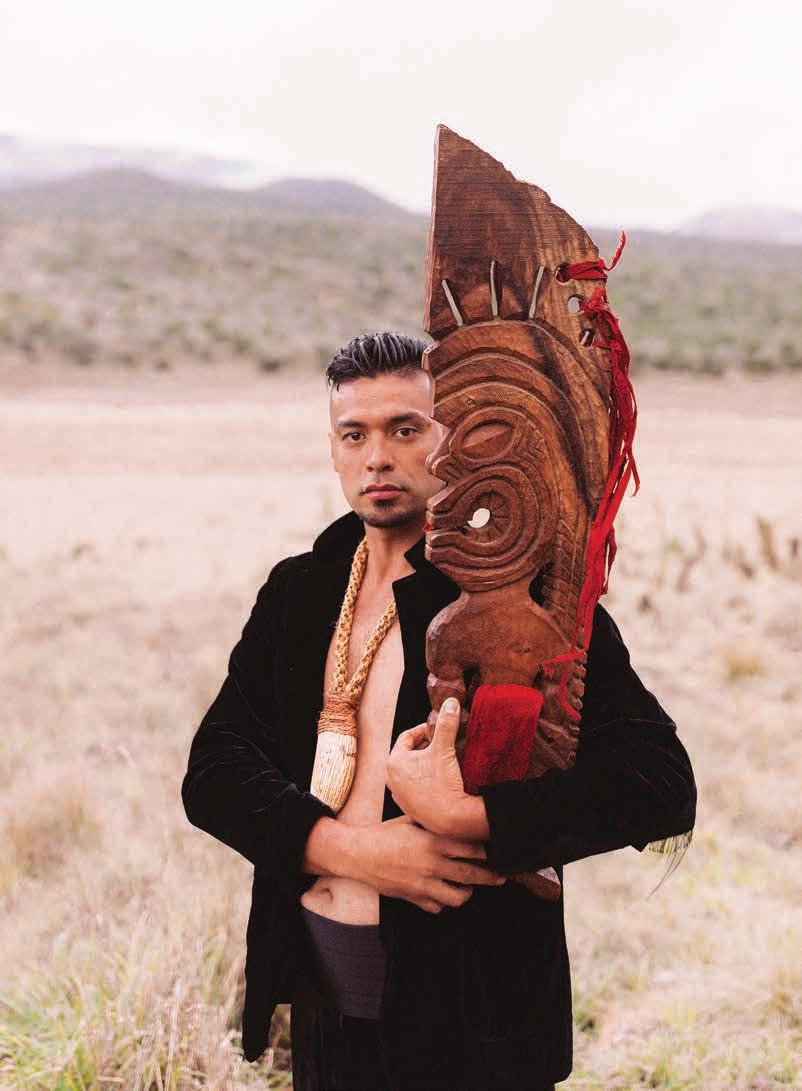
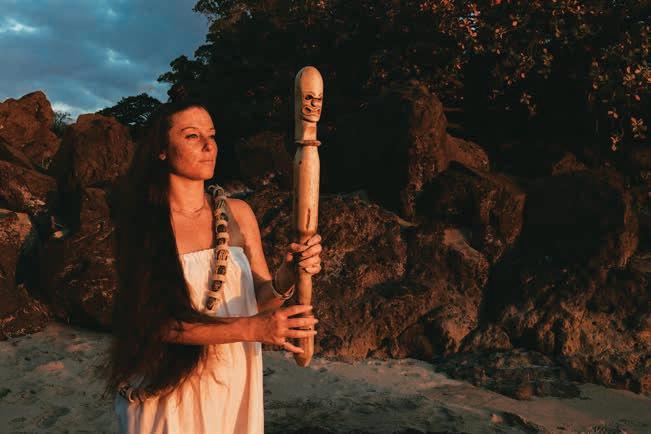
ON AKUA
LANAKILA MANGAUIL Pele, Kū, Kāne, Kanaloa, Lono: these are not “gods” as perceived from a Western space. They’re more like categories, processes, descriptions, archetypes. They’re not necessarily external spirits outside of us, but instead they are manifestations that we see within ourselves. That we can reflect with, to what we’re experiencing. They have and are specific functions. They are also elements. I look into ecological understanding of our environments because they’re intertwined with the historical documentation of our people. We are a key species to the environment because we don’t just see nature as resources. They are us. They are people, they’re family, they’re kūpuna. They’re akua.
KALEINOHEA CLEGHORN
My first experience in decolonizing a monotheistic perception of akua was from the Kanakaʻole family. They would use of both “Pele” as in Pelehonuamea (Pele of the red earth) or Peleʻaihonua (Pele who devours the earth), as well as “the pele,” lower case “p,” as in volcanism as a whole, general lava, magma. So many thousands of years we’ve been in this relationship and have built this love. This love has created a poetry that kūpuna in every culture all over the world can recognize and speak. I see our myth as a poetic understanding of ecology. It’s all poetry, but it’s also science — it’s both.
ON LONO AND KŪ
KC We’re currently in a collective exploration of Kū and Lono. Today, we talk so much about how to create a sovereign nation. In order to have a sovereign nation the individuals have to be free. Kū and Lono become a path toward that individual responsibility and individual sovereignty. It’s about inspiring the individual to be in the right relationship with themselves, to
be in the right relationship with ʻāina, and to be in the right relationship with others.
Hāwane [Rios, daughter of Pua Case] and I for many years traveled to Kahoʻolawe together and participated in Lonoikamakahiki ceremony. A lot of what I know of Lono comes from that — a sisterhood which comes from Aunty Pua Case’s teachings, which is not only her lineage but her dream. Her audacity to be so loving and her ability to listen and trust what she hears, you can see it in the way that their whole family speaks, the way they show up in space. There’s a gentleness to it. There’s a grace to it. There’s such a powerful balance of the Kū and the Lono.
LM As Lono is having time to reflect and always looking back into the internal reflection, Kū is self discipline, self regulation — disciplining oneself to discipline oneself. The Kū and the Lono are the internal and external. The Lono, the balance from within to connect with a depth of understanding and listening and feeling. The Kū is keeping order and function with everything around you.
Kū has to do with human societal structures. This includes politics, governance, farming practices, fishing practices, etcetera. Kū is the one who upholds kapu. Nation building and defending is a kūleana of Kū. Yet there is only one iteration of Kū that has been popularized: war. Kū as in Kūkaʻilimoku was called upon by Kamehameha The Great to unite the Hawaiian Islands. It is no wonder then that the colonizers of Hawaiʻi put a very targeted effort to demonize Kū. Separating us from our concepts of empowerment, taking action, holding firm, and organizing.
KC When you really dig deep into researching Kū, there are so many facets beyond “God of War.” Kū, as in Kūkauakahi, who defended and protected the makaʻāinana, the
common farmers, from overbearing aliʻi, or chiefs. Kū is the one who connects, the one who protects, the one who actualizes, the one who manifests, the one that follows through and gets it done. Kū is the energetics of the body that makes a reality out of the dream. It is time we reframe the fear of Kū with function and approachability.
LM This kiʻi (he points to a carving of Kū used in ceremony during the Maunakea protest) was risen, stood up, and took action. We saw what happened within our lāhui, our nation, when calling for Kū. The utterance “Kū Kiaʻi Mauna” activated our entire nation for the betterment of keeping the stones of a mountain in place.
KC People rose to Kū. People Kū-ed. We saw the effects of Kū energy. “Kū Kiaʻi Mauna”: That’s Kū energy.
ON KŪ MAI AND HA‘IALONO WORKSHOPS
KC What we’re doing [with the Ku Mai and Haʻialono courses] is getting to the root not only of practice, but also the root of language, of loving and living our culture. What has become most relevant in our lives today is a need for pause. To listen, reflect, so that you can release some of what’s not serving you. Then you’re able to move into Kū season with a fresh skin and sharp manifestation. My intention when we first started this was to touch the Kānaka who don’t feel a belonging to any school, hālau, movement, or even the lāhui. The way in which our teaching is unconventional is intentional, so that we include those who have felt so displaced and feel comfortable enough to engage. There is a specific intention in the teaching. It is not for entertainment or for those curious about our culture. Participating in these courses is giving your consent to evolve these words
58 | FLUXHAWAII.COM
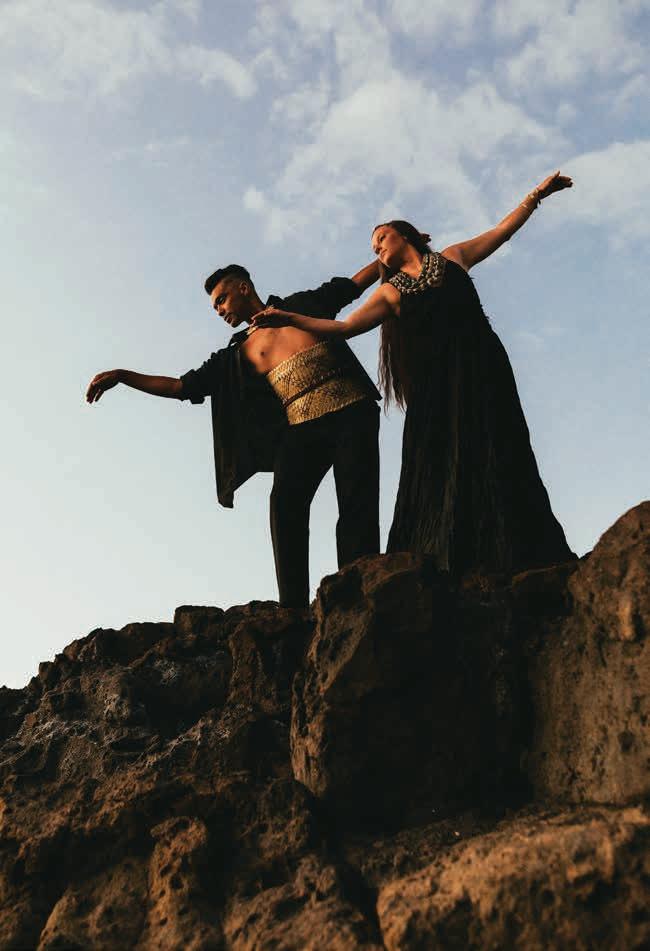
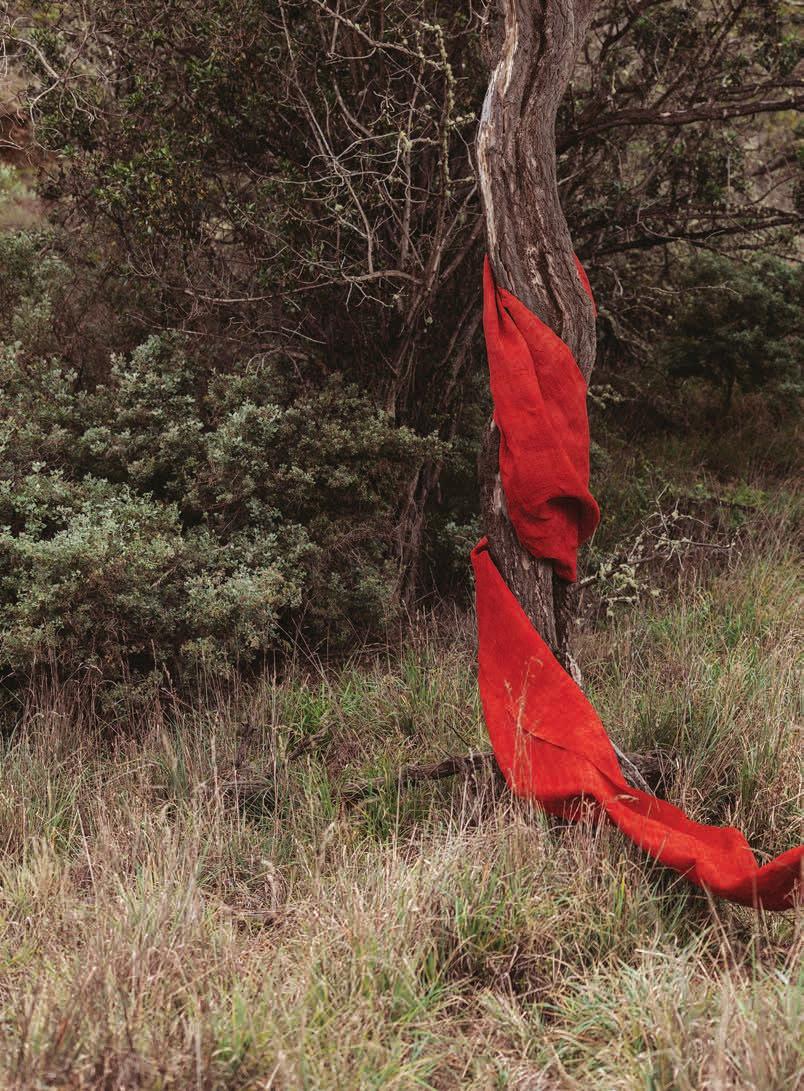
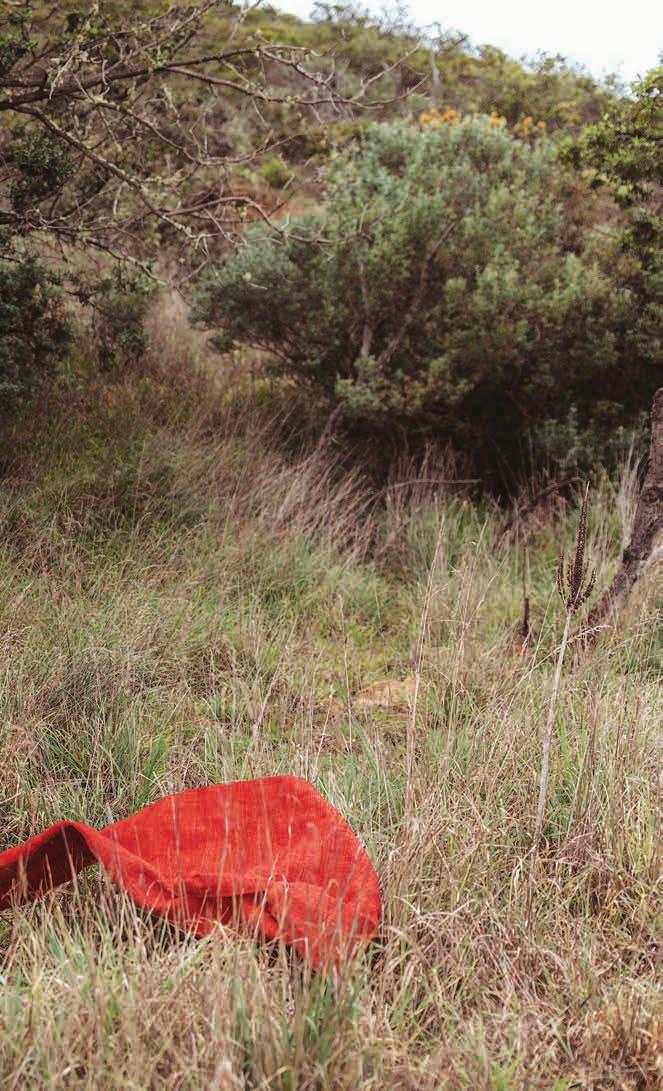
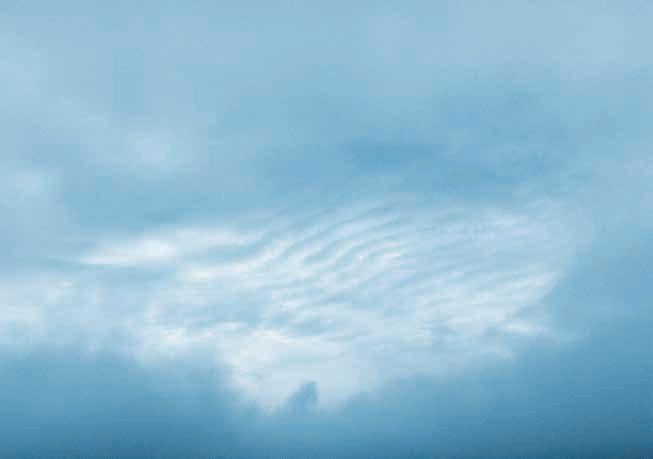
and feelings. You’re here to digest, integrate, and have them move with and live through you. This is so that your place and your soil and the leaves on your trees are changed because your frequency has shifted based on your attunement to the season you’re in. Acknowledging and participating in the changing of season. The reestablishment of the Kānaka into the environment by resurrecting an active role in the shift of season. That comes by way of ceremony, consciousness, chant. It comes from how I walk and speak and listen to the environment.
LM We’re teaching this because we want to see some returned results. Not necessary for us, but we want to see something sparked from this.
KC The baseline of our curriculum is inspired by our Kumu Kekuhi Kanakaʻole herself because it’s so fun and playful. And that’s why we have
chant as the curriculum because it gets you out of your head. It gets you in your body. And we give the deepest, darkest Pelehonua ʻAikamumu chants, and then we bust out in laughter and it’s the highest feeling you ever had. I want every Kānaka to feel that. We’ve learned that from these audacious families. The Kanakaʻoles, the Pua Cases, the Lims. It is important to note that of these ‘ohana, none of them have been displaced from their ʻāina. That’s why I believe they can embody so powerfully. How do you make a sorceress? Don’t remove her from her forest.
ON MODERN HAWAIIAN CEREMONIAL PRACTICE
LM I define indigeneity as peoples who are so of a place, that after so many centuries, they have achieved mutual symbiosis with said environment. They have become such
a unique key species to a place that we actually are essential to its existence. It really is about standing in a natural part of this world again. We’re part of this world, of this rain, wind, animals and plants. Being here, and not within the construct that we can only exist within the context of some colonial dogma, is the ecological balance of indigeneity. And yet, there’s so much of that feeling of “not being Hawaiian enough” or “I don’t know, so I shouldn’t participate” in our community.
KC We are not artifacts. Pick up your body and move. Listen, touch, and taste and feel. How do you reindigenize a people to their place? Discernment is so important. There are aspects of colonization that we have dubbed Hawaiian. It is so dangerous.
LM The condemnation of leaning into the new comes from fear and the pain
62 | FLUXHAWAII.COM
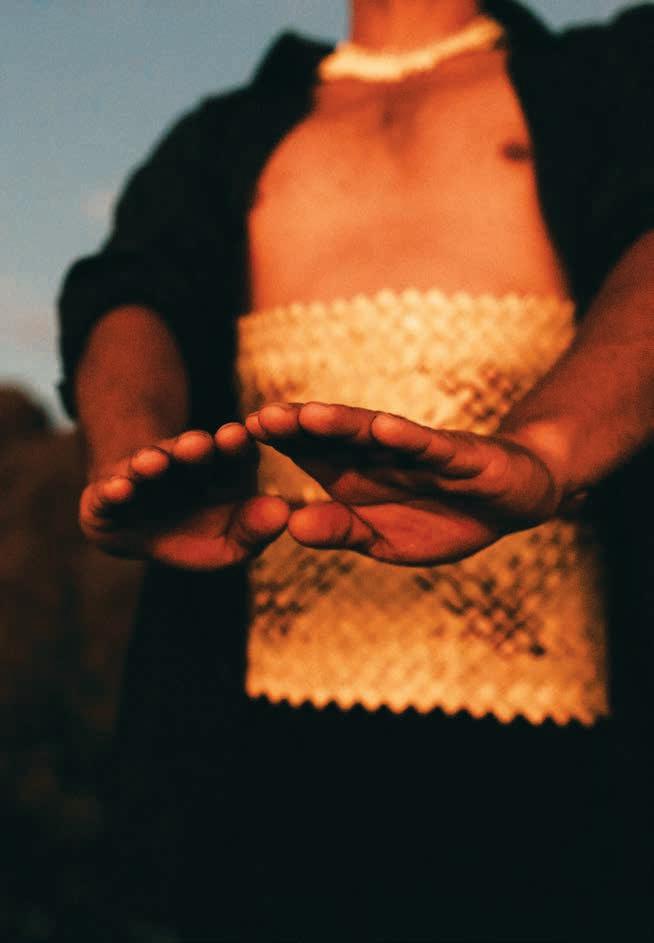
of loss. As a people we really did lose so much, and thus we desperately cling to what little specific texts still exist. However, these texts only give us tiny glimpses of what once was. We must hoʻāla hou. We resurrect these things the best that we can. We have to keep it rolling. You don’t have to be an expert to take the first step.
KC Our kūpuna slowly over the generations have simplified what was so complex. We’re anchored in this knowledge, understanding, relationship, and every year our modern ceremonial practice is going to be a little different.
LM It better be! If not, what is this? I hope that we’ve grown. Back in 2014, ʻAha Pule ʻĀina Holo [a six-day-straight run around the circumference of Hawaiʻi Island ushering in Lono season] began as a prayer for the health of the land. When I first brought the medicine of ceremonial running here from the Pitt Rivers tribe, it was through this process that Kekuhi and Taupōuri Tangarō taught me to hoʻohawaiʻi, to make it Hawaiian. Since its inception, this ceremony has done amazing work in changing lives and igniting our people. That is the actual measurement of ritual and the only reason I’ve continued to conduct ceremonies like ʻAha Pule ʻĀina Holo or Wehe Kū.
KC Why would we not continue to evolve it in wider ways to touch and activate even more of our people so it doesn’t become static? That is what we are doing with Kū Mai and Haʻialono.
knowledge that no scholarly article can fully embody and the complementary natures between these two luminaries generates something greater than the sum of their individual parts. Their voices resound like echoes of our forebears. Their dances breathe life into our cultural resilience and ignite the brilliance of our artistic spirit. Through every melodic note and rhythmic movement, they manifest a profound veneration for our Hawaiian heritage and the power of community.
Enraptured by the Kū Haʻaheo performance from the evening prior, I beheld a remarkable sight: children, who were as young as five years old, fervently chanting words that once resided solely within the domain of impassioned activists. The realization that this next generation possesses a normalization — an intimate familiarity — with these profound concepts, akin to the very breath that sustains them, stirred an indescribable surge of emotion. The scene served as a poignant reminder that activism transcends the boundaries of protest lines, permeating the very fabric of our community on multiple levels.
In Kaleinohea and Lanakila, we bear witness to a convergence of two ceremonialists from diverse backgrounds, illuminating the multifaceted nature of Hawaiian identity. They share ancestral
As the grand crescendo of their voices reverberated through the hallowed space, the entire school convened upon the stage, uniting their voices in a harmonious symphony of “Hawaiʻi Aloha.” Generations intertwined, as elders and youngsters alike rose from their seats to join the students in song. In that sacred moment, the division between performer and spectator dissolved, replaced by an overwhelming sense of unity. Kaleinohea swayed gracefully alongside her two children, while Lanakila harmonized with his devoted students. Past, present, and future converged, in a profound intergenerational symbiosis. Enveloped by the gentle caress of Waimea rain, we nurtured the seeds that would carry forth our ancestral wisdom for generations yet to come.
“We are not artifacts. Pick up your body and move. Listen, touch, and taste and feel. How do you re-indigenize a people to their place?”
—Kaleinohea Cleghorn
The two ceremonialists stand firm on the sacred ‘āina of Hawai‘i Island.
64 | FLUXHAWAII.COM
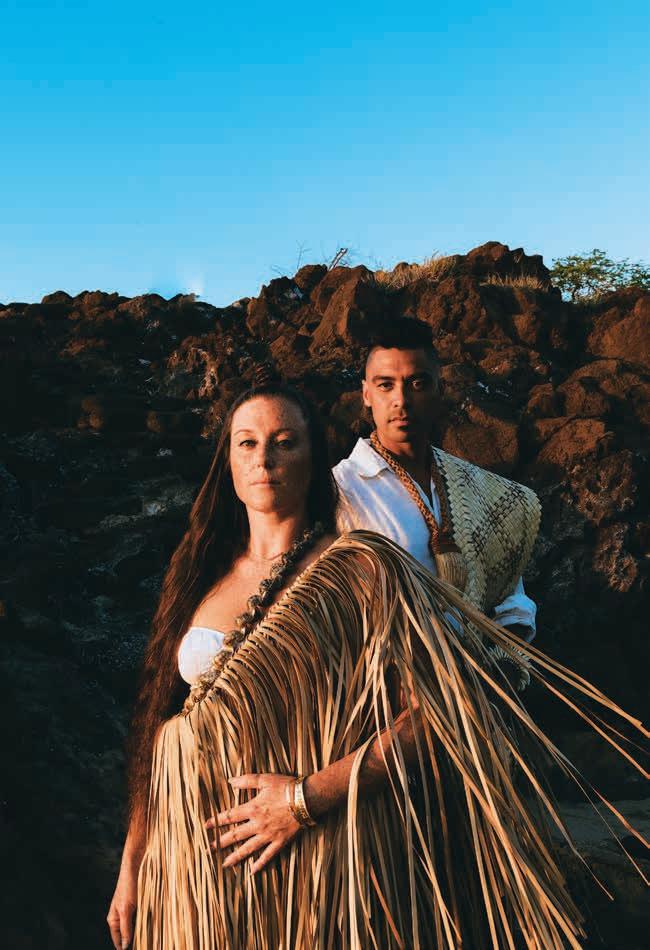
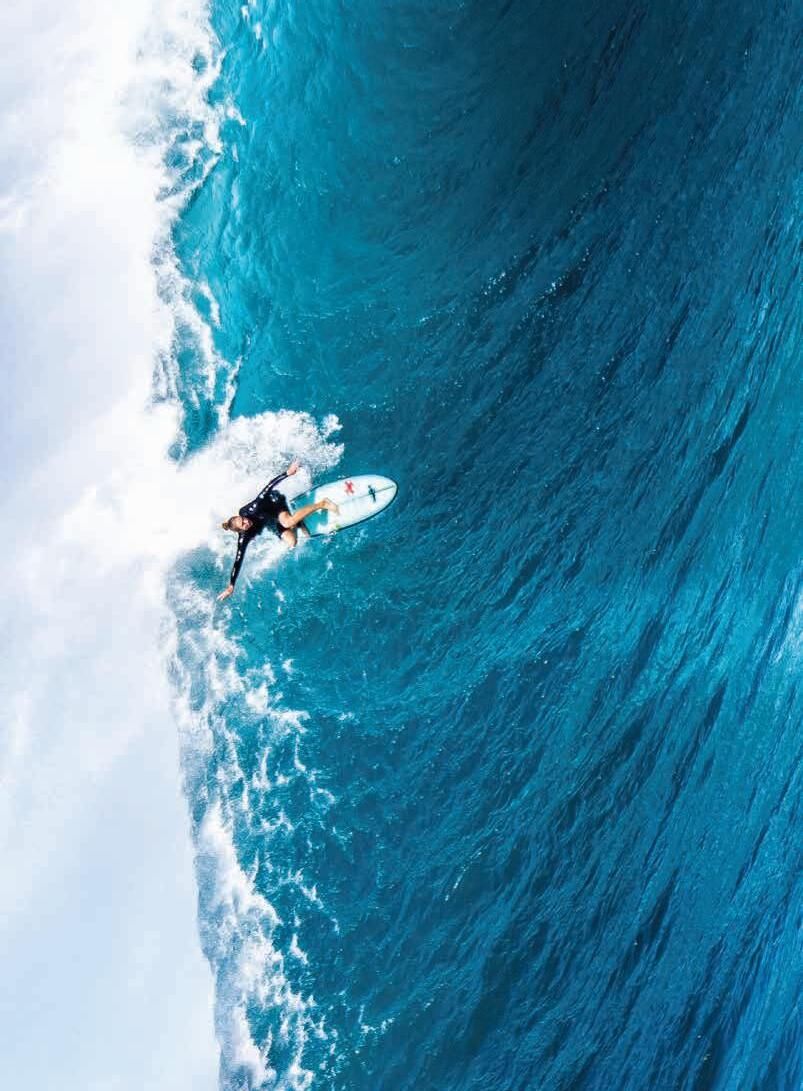
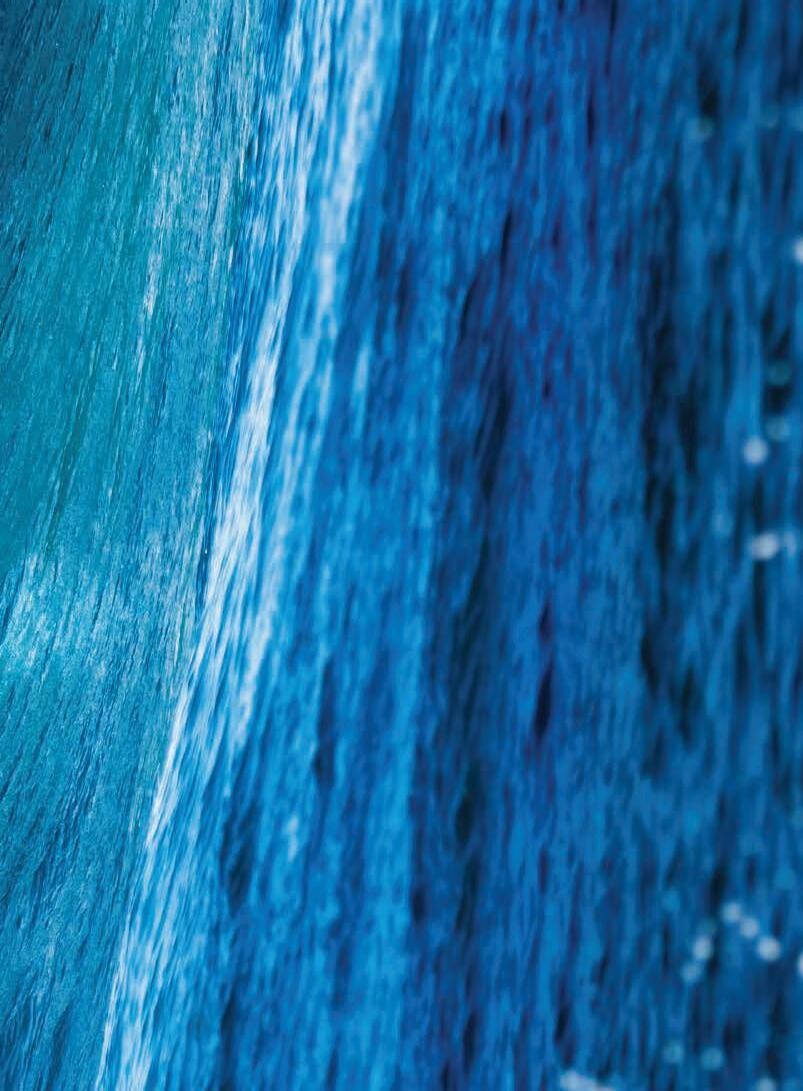
Over the last few years, waves of change have rocked the surfing world, especially for Hawai‘i and women athletes.
TEXT BY MINDY PENNYBACKER
She
FLUX FEATURE
IMAGES BY CHRISTA FUNK
Go
Born and raised in the ahupua‘a of Waikīkī, near the fabled shoreline once graced by the beach homes of Hawaiian chiefs, I took up surfing in the late 1960s as a young teen and have been obsessed with it ever since. If I’d had any real athletic talent, not been so averse to cold water that I quit my Northern California college surf club, and been able to find work in Hawai‘i instead of having to move to New York City, I could easily have become my family’s worst nightmare: a surf bum.
After all, I went surfing in a Kamehameha Day swell the morning of my wedding, and got back so late, I walked down the aisle with dripping hair. While living for decades in NYC, writing and editing for a living, I swam in city pools to stay in shape for the two weeks a year my husband, Don Wallace, our son, Rory, and I spent visiting family on O‘ahu. Sometimes we’d arrive at the end of a big swell and leave just as a new one was rolling in for me to gaze upon with frustration as our airplane dipped a wing towards Diamond Head for a farewell look.
Although we lived in Lower Manhattan without a car, once in a while our uptown writer friend William Finnegan, author of Barbarian Days: A Surfing Life, would load our boards and fins into his station wagon and drive to Long Island, where we’d tackle the dirty gray waves breaking off the rock groins of Long Beach, or the clean, turquoise cylinders rolling over the sandbars of East Hampton and Montauk. A couple times, Don and I even took the subway to the crowded Rockaways.
I was never as obsessed with surf as Bill, who chased big waves from Fiji to Madeira. But when I met him for the first time (he and Don had been classmates at U.C. Santa Cruz), I learned we shared surfing origins. Bill had, for a time in his teens, lived in my Honolulu neighborhood and surfed the same stretch of breaks: Suis, Graveyards, Radicals, The Winch, Ricebowls, Tongg’s. Although we had
somehow never met at the time, he had known and surfed with my friends and mentors, the boys of the Tongg’s Gang.
During the ‘60s, I would hear about Hawai‘i female surfers who were competing on the nascent amateur and professional circuits of the time, but we never saw them surfing in magazines or films. In 1963, Californian Linda Benson was the first woman to appear on a surf magazine cover, but it didn’t show Benson riding a wave. It’s a portrait shot of the petite but powerful blonde, her hair in a Jean Seberg pixie cut, holding her board as she stands on land.
As a teenager, I assumed that surfing, like most other sports and professions, had always been maledominated. I was hopeful that, as the feminist movement gained momentum and won demands for equal opportunity, there would soon be as many women surfing as men. I was wrong.
After more than 30 years on the continent, I moved home to Hawai‘i in 2009, and for the first time since high school, I have the joy of surfing yearround without sadly counting the days left in my visit every time an outwardbound jet flies overhead. I began writing a newspaper column on surfing, which grew into my book, Surfing Sisterhood Hawai‘i: Women Reclaiming the Waves. I have been happy to see more females in the lineup than when I was a girl, but alarmed to witness far more overt, gender-based intimidation and insulting, dismissive behavior from males. A booming sport since the mid-20th century, surfing, even in its everyday, supposedly “fun” form, has gotten exponentially more crowded and competitive, which stokes some men’s frustration and aggression.
Worldwide, as of 2016, there were an estimated 33 million surfers, with males outnumbering females by 4-1, according to the International Surfing Association. But in Hawai‘i, the average ratio that I and other women observe is more like 8-1. Meanwhile, competitive surfing allots places to half as many female as male contestants, from
amateur keiki events to the elite big wave and world championship pro tours. Only surfing’s Olympic debut in the 2020 Tokyo Summer Games, where Hawai‘i’s Carissa Kainani Moore won gold — has fielded equal numbers of women and men.
Hawai‘i’s women surfers are reclaiming our traditional rights in the waves and shredding chauvinist myths that we can’t execute advanced maneuvers, such as getting tubed or exploding into the air above the tops of the waves or ride big waves, as well as men. “When I was a little girl, I was told that women can’t surf,” said Keala Kennelly, the first woman to win the open-gender, Pure Scot Barrel of the Year Big-Wave Award, in 2016, “and I was told this about getting barreled, surfing big waves, surfing Pipeline, paddling in at Jaws, and the list goes on.”
Over the last few years, waves of change have rocked the surfing world, especially for Hawai‘i and women athletes. In response to women surfers’ demands for equal opportunity, the World Surf League began paying equal prize money to women and men in 2019; and, following passage of a “surf equity bill” by the Honolulu City Council in 2020, the city’s Department of Parks and Recreation is revising its permitting rules for surf meets at O‘ahu beach parks, adding gender equity as a criterion. In 2022, the World Surf League Championship Tour began fielding men’s and women’s events at the same venues, including O‘ahu’s Pipeline and Sunset Beach. Last January, women competed for the first time, alongside the men, in the 37 years of the Eddie Aikau Big-Wave Invitational at Waimea Bay.
This article is excerpted from Surfing Sisterhood Hawai‘i: Wahine Reclaiming the Waves by Mindy Pennybacker, published by Mutual Publishing. Pennybacker is a surf columnist for the Honolulu Star-Advertiser and former editor of The Honolulu Weekly.
68 | FLUXHAWAII.COM
OPENING SPREAD: RED BULL CONTENT POOL
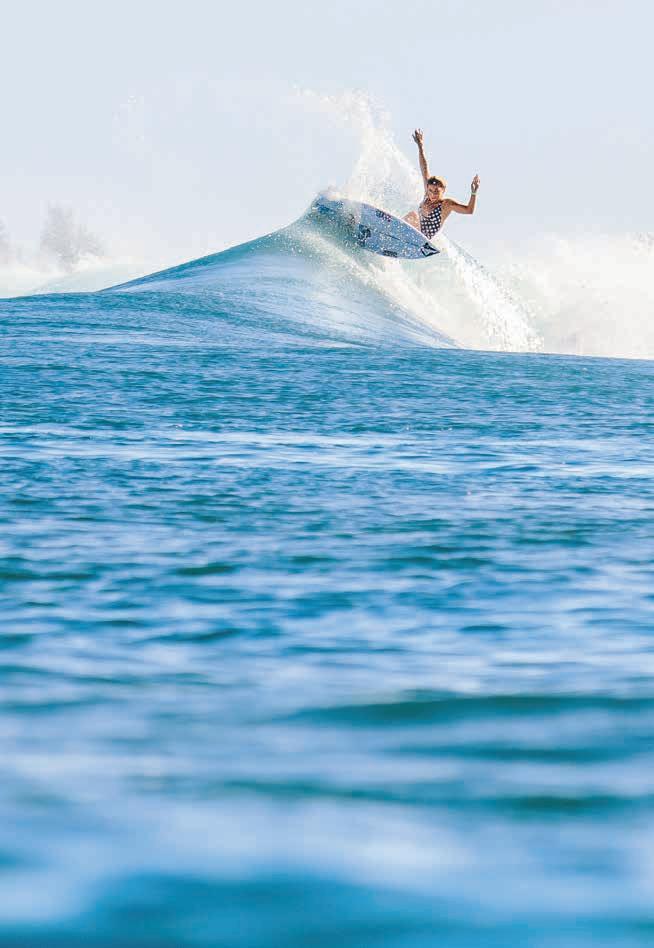
Women recreational surfers are also fast overcoming the discrimination that has held us back since Westerners invaded the islands, decimating the original population with introduced disease; illegally overthrowing and annexing the sovereign Hawaiian nation; causing impoverishment and starvation through the taking of lands and fishing rights; and suppressing the language and traditional practices, including surfing, which Protestant missionaries tried to ban. For more than 50 years, since the Hawaiian Renaissance of the 1960s and ‘70s, Native Hawaiians have been working to revive, restore, and steward their history, culture, health, prosperity, lands, and natural resources — and women surfers have been reclaiming the waves.
In Hawaiian history, legends, and 19th-century newspapers, women not only surfed in great numbers, but often ruled the waves. Although they weren’t allowed to eat with men and faced other gender-based restrictions under the traditional kapu system, when they got out in the ocean, Hawaiian women were free.
“The entire female population of Kealakekua plunged entirely naked into the waves” atop six- to eight-feet-long pointed boards and rode “upon the foaming crest of the surges,” writes Theodore-Adolphe Barrot in his Visit of the French Sloop of War Bonite, to the Sandwich Islands, in 1836. “Women not only surfed, but surfed as well as men,” or better, according to Hawaiian waterman and historian John Clark in Hawaiian Surfing: Traditions from the Past.
Clark cites a newspaper account of a Kamehameha Day surf contest at Lahaina, Maui, on June 11, 1887, in which a man named Poepoe was favored to win. His wife Nakookoo also competed. As her husband rides a wave, Nakookoo “shoots like a flying fish through the whitening foam, jostles the champion on his wonted plank of victory, and came in foremost amid the outcries of a delighted multitude glad that the woman had won.” The writer added that Nakookoo, while still beautiful, was not in her first youth, so it’s also a win against ageism. “As far as I know, this is the first description in English of a surfing contest, and it was won by a woman,” Clark told me. He points out that women also got barrelled, as observed by Barrot: “The least movement of their body gave to the plank the desired direction, and disappearing for a moment in the midst of the breakers, [the women] very soon arose from the foam.” Clark calls this “the earliest description by a Westerner of tube-riding, the radical maneuver that is commonly assumed to be a 20th-century invention.”
Many of the most famous surfers in Hawaiian legend and history were female, starting with volcano goddess Pele and her sister Hi‘iaka, goddess of the hula, the traditional dance closely linked to surfing. Many Hawai‘i women today practice both.
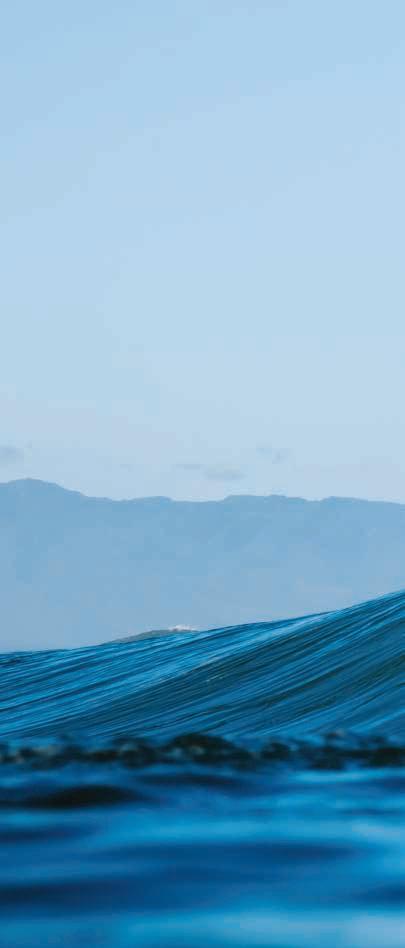
70 | FLUXHAWAII.COM
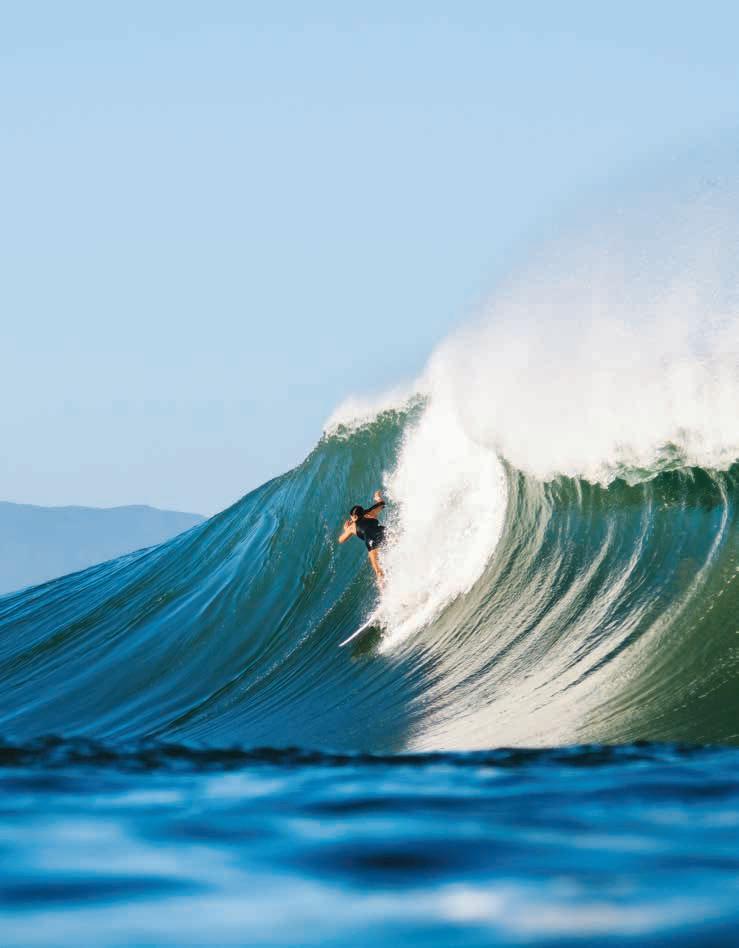
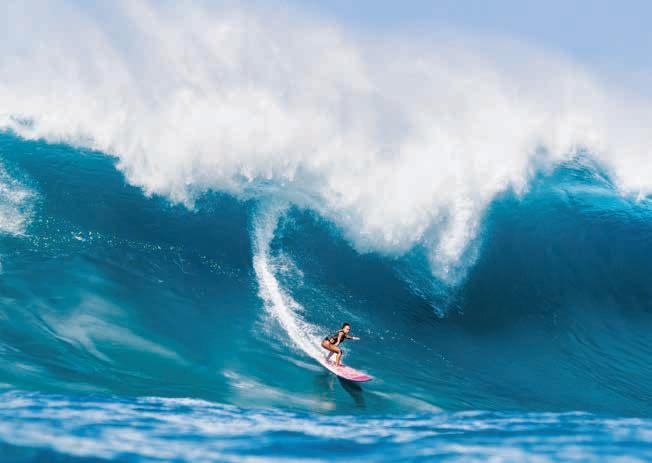
“We know from mo‘olelo and history that Hawaiian women surfed,” says U‘ilani Macabio, a Hawaiian cultural adviser from Hawai‘i Island. Macabio grew up hearing stories about Queen Ka‘ahumanu, the favored wife of King Kamehameha, surfing Maliu in Kalaoa and the heavy waves at Lighthouse in Kohala. Ka‘ahumanu was the daughter of another famous surfer, the Maui chiefess Nāmāhana, “reckoned one of the most expert at that diversion,” according to Peter Puget, a lieutenant who sailed aboard the Discovery circa 1795.
“My favorite story is of Kelea, the surfing princess goddess from Maui, the best ocean woman ever,” Macabio says. Kelea lived near the Hāna sea, writes Samuel Mānaiakalani Kamakau, who set down her legend in 1865. “Surfing was her greatest pleasure,” Kamakau writes. “She enjoyed surfing so much that at night she dwelt upon the morrow’s surfing and awakened to the murmuring of the sea to take up her board. The early morning, too, was delightful because of its coolness, and so she might go at dawn.”
I found it both thrilling and reassuring to read that this heroine of old Hawai‘i preferred glassy, windless conditions and did the occasional dawn patrol session, just like me. These details humanized and enlivened the past with a sense that Hawai‘i’s people and waves haven’t changed much, despite all the upheavals and loss they have suffered. Reading Kamakau, I could imagine that Kelea and I might one day find ourselves riding the same wave through time. The story and the way Kamakau wrote it confirmed my long-held feeling that riding a wave serves up a slice of eternity.
Famous for her beauty and he‘e nalu skills, Kelea was kidnapped by an O‘ahu chief named Lo-Lale, of Līhu‘e, an inland district on that island. She lived with him in the highlands for a decade, bearing three children and never once getting down to the ocean. Finally, she asked his permission to visit the nearest seashore in ‘Ewa. He agreed, guessing he might never see her again. His guess was correct. From ‘Ewa, Kelea kept following the shoreline east to Waikīkī,
During the ‘60s, I would hear about Hawai‘i female surfers competing on the amateur and professional circuits, but we never saw them surfing in magazines or films.
“Women not only surfed, but surfed as well as men,” or better, according to John Clark in Hawaiian Surfing: Traditions from the Past
72 | FLUXHAWAII.COM
ABOVE: RED BULL CONTENT POOL
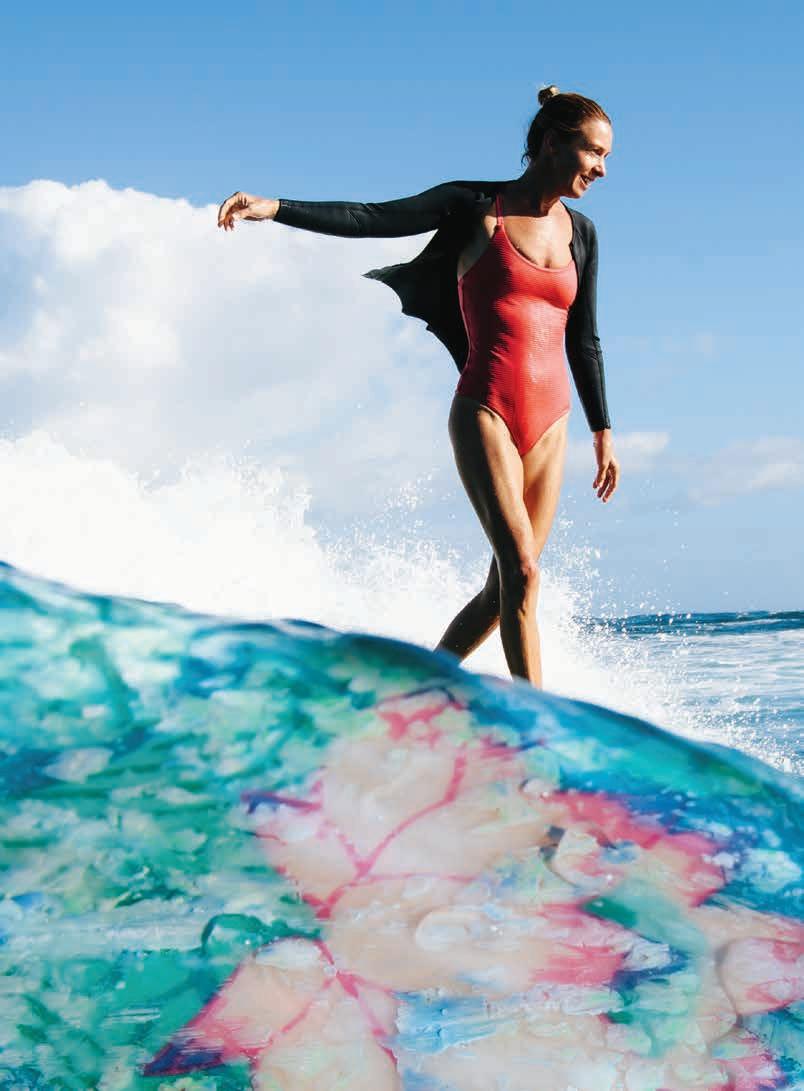
and when she arrived and saw the chiefs surfing its perfect waves, she asked to borrow a board, “and perhaps because she was so beautiful a woman, someone gave her one.”
Like a pilgrim entering a sacred place, she rubbed the red dirt of ‘Ewa from her feet at the water’s edge before she entered the sea, dipped herself in it before getting on the board, and paddled out to the break where she sat a courteous space apart from the local surfers and waited for the fourth wave. While riding, “she showed herself unsurpassed in skill and grace” and all the people “burst out in cheering.”
The ali‘i nui of Waikīkī, the high chief Kalamakua, ran down to the water’s edge to greet her, took her off to his kapu place, and they were married.
Kelea’s surfing is a proud part of the heritage all island daughters share. She’s an inspiration to us all, that inner voice who sets us free from the nagging ties of duty to fling care to the winds and just go for it when the surf is good.
Another legendary Hawaiian surfer was the namesake of the sea of Māmala, the great bay whose waters stretch from Lēʻahi through Waikīkī to Honolulu Harbor. Author William Westervelt wrote of her in his 1913 “A Surfing Legend.” “Very skillfully she danced on the roughest waves. The surf in which she most delighted rose far out in the rough sea, where the winds blew strong and white-caps were on waves which rolled in rough disorder into the bay of Kou [Honolulu].”
Surfing mele and chants were dedicated to Hawaiian royalty, including the Kingdom of Hawai‘i’s last monarch, Queen Lili‘uokalani, born Lydia Lili‘u Loloku Walania Wewehi Kamaka‘eha in 1838. She fought to restore the integrity of the constitutional monarchy after American residents in the kingdom forced her late brother, King Kalākaua, to sign the 1887 Constitution of the Hawaiian Kingdom, notoriously known as the “Bayonet Constitution” by where an armed militia was used to obtain
his signature and prevented Native Hawaiians from voting, placing his government under their control. When Lili‘uokalani gained power, however, she dismissed her brother’s “reform cabinet” and rewrote the constitution. She also wrote many songs, most famously “Aloha ‘Oe” and “Ke Aloha O Ka Haku (Queen’s Prayer).” “Halehale Ke Aloha,” a surfing chant composed in her honor, celebrates how “Kamaka‘eha on the crest, Rides the surf to shore,” writes John Clark, who notes a parallel meaning of the lyrics describes the queen as both the foundation and top of the state, providing guidance and stability. She only reigned for three years, however, before her government was illegally overthrown at gunpoint by the Americans in 1893.
The Waikīkī surfbreak Queen’s is named for Lili‘uokalani, who is believed to have written her song “Ahe Lau Makani” (“the soft, gentle breeze”) at Hamohamo, her cottage on the beach. In 1896, her niece and heir to the throne, Princess Victoria Kawēkiu Lunalilo Kalaninuiahilapalapa Ka‘iulani Cleghorn, traveled to Washington, D.C. with her aunt and met with President Grover Cleveland, petitioning but ultimately unable to prevent the illegal annexation of Hawai‘i by the U.S. in 1898.
Raised in Waikīkī at her family’s estate, ‘Āinahau, Ka‘iulani loved to swim and surf; one of her surfboards, a slender alaia model made of koa, seven-foot, four-inches long, is in the collection of the Bishop Museum. The princess also loved to surf in outrigger canoe, and in June 1898, following a beach luncheon, travel writer Burton Holmes found himself riding waves with Ka‘iulani in a canoe surf session off Waikīkī. As the boat raced shoreward at 30 miles per hour, Holmes recounted, “There before me is the Princess Kaiulani, her faced aglow with excitement, shouting and paddling frantically, her eyes flashing with the wild pleasure of it all.”
Less than a year later, in March 1899, Ka‘iulani fell ill after being caught in a rainstorm while riding horseback in the mountains of Hawai‘i Island, and died soon after at age 24. One of the many kanikau, or lamentations, written for her evokes the surf site Kalehuawehe as “a poetic symbol of great loss.”
Kalehuawehe, then, is at once the happy place where a surfer lost his lehua lei to a wahine, and the sorrowful place where the loss of Kai‘ulani, who shone in the waves of Waikīkī and white lehua lei, will always be deeply felt. But her joyful presence, too, can be felt in the waves, as evoked in the mele “Lei No Kai‘ulani,” just as the rediscovery of this surfing lineage the ancient tales, the storied history from Kelea to Kennelly, from Māmala to Moore — reaffirms women’s presence in the ocean today.
As longboarder Jenny Van Gieson told me, “I feel when I’m surfing, I’m surfing with Aunty Rell, and other uncles and aunties I’ve lost.” Mentored as a child by Rell Sunn, the late, beloved Mākaha surfer, lifeguard, and children’s advocate, “When my life gets super hectic, the ocean is the place I go to for release, to feel that connection with the past,” she said.
In the surf, like the queens and commoners of old, we can escape gender-based restrictions and celebrate who we are, and who we are becoming.
The kai is the first playground for Hawai‘i’s children.
“We were all little girls, always going to the beach, playing around while my father fished, and then we started using boards, working with the waves,” remembers Macabio, who started surfing at Pohoiki First Bay in sixth grade. “Pretty much we’d just go, learn on our own, a sink or swim sorta deal. You had to watch out — if you didn’t pay attention, the current would push you and you wouldn’t realize until
74 | FLUXHAWAII.COM
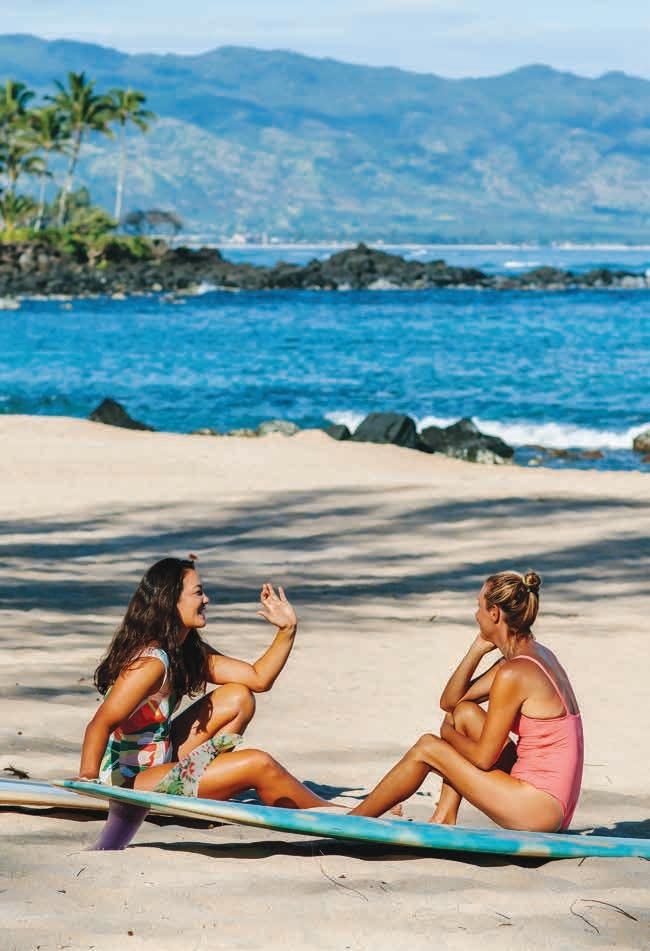
it was too late, and you’d end up on the rocks with wana all over your body,” she laughed. “The fun thing about surfing,” she said, “is it is truly the Hawaiian rollercoaster ride. It’s, like, addicting.”
A longtime neighbor of mine, an older man who doesn’t surf, observes that when men paddle out to Tongg’s or Suis they look grim, as if psyching themselves up for battle. Whereas women look happy and lighthearted, as if they’re going out to play. He adds he sees women mostly paddling out alone, whereas men go out in a posse of bros, or brahs.
Why the difference? he asked.
It’s because a woman’s life, like surfing, is a balancing act. We tend to go out alone because there are fewer of us who surf with less time to meet up with friends. We have to seize the moment, often on the spot, grabbing a quick break from child, elder, and pet care, errands or homemaking duties. Surfing provides “a bit of meditation, takes me out of my zone of worry, all the things, schedules, that come with everyday life,” says Elizabeth Madin, a marine biologist and mother of three. “I’ve got to focus on waves, that’s it. I’m just glad to be out there, doesn’t matter if I get the best wave.”
Madin is also a founder of Surfing Moms, a group of women who organize babysitting for its members, taking turns watching everyone’s kids on the beach while the rest ride waves. In addition to getting moms in the water, the group builds a network of familiar faces. “When I’m alone, I feel I have to be expressionless, keep to myself,” Madin says. “When I’m out there with friends, I’m not as intimidated.”
“I think it’s changed for me throughout the years,” says Sally Lundburg, a Hawai‘i Island mother, filmmaker, farmer, and teacher. “Now, I’ll take any time I can get in the ocean. Swimming, bodysurfing, surfing, it really doesn’t matter. Just to reconnect with my body and with nature, I can feel renewed by going out on the worst days.”
Macabio, also a working mother of two, shares this sentiment. “Surfing feels liberating, like, ‘Oh, I’ve been holding my breath for so long and all of a sudden, I get to release it.’” With Lundburg, and other women, she surfed at Waipi‘o Valley until the county suddenly closed the only beach access road in February 2022. Public access has since been partially reopened, as the result of a lawsuit filed by Mālama I Ke Kai ‘o Waipi‘o, also known as MaKa, the community organization Macabio helped form.
For many island women, surfing is a way to perpetuate traditional Hawaiian values and restore one’s sense of self.
Karin Amimoto Ingersoll, author of Waves of Knowing: A Seaside Epistemology, writes, “It isn’t until I enter ke kai for he‘e nalu that I am able to connect with my Kanaka heritage.” For others, it’s a way to bond with loved ones. Many were taught by their fathers, some by their mothers.
And, there are so many more reasons. If you don’t surf, you can try it and add your own. But watch out: The first time you stand up on a board, borne swiftly along by a wave, you could become obsessed.
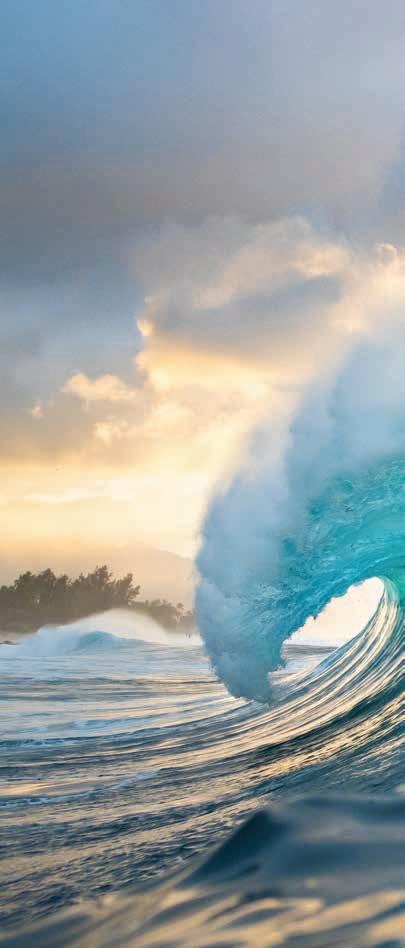
76 | FLUXHAWAII.COM

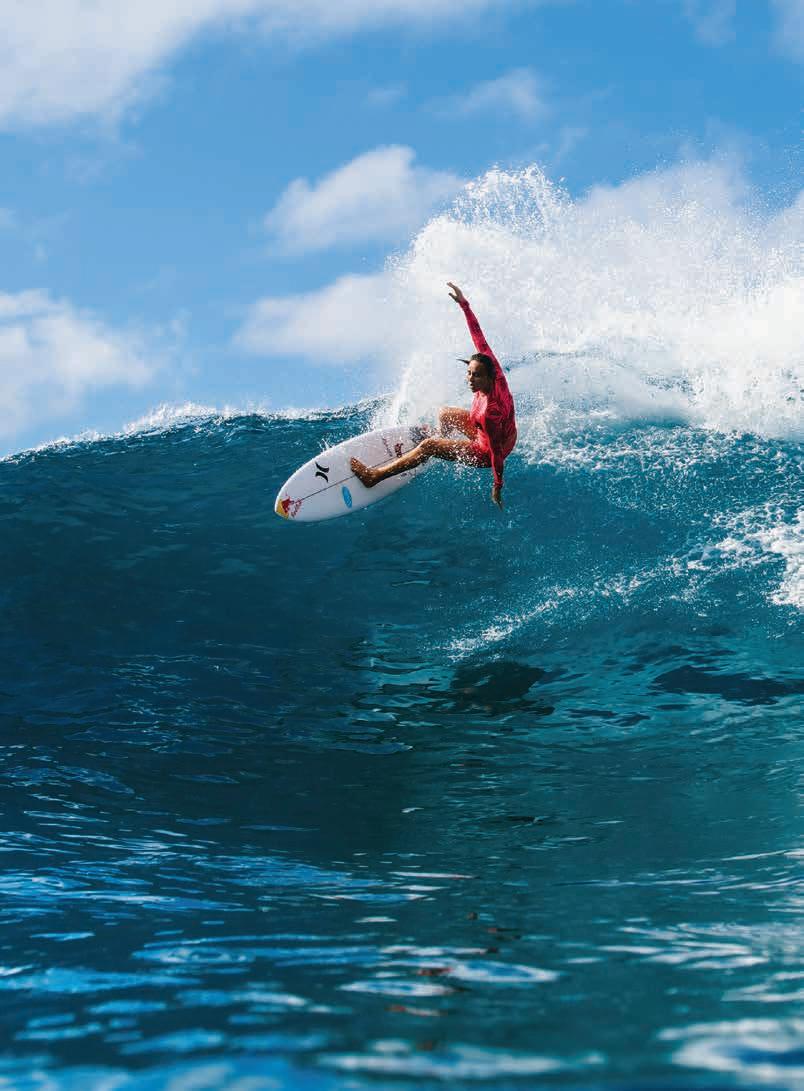
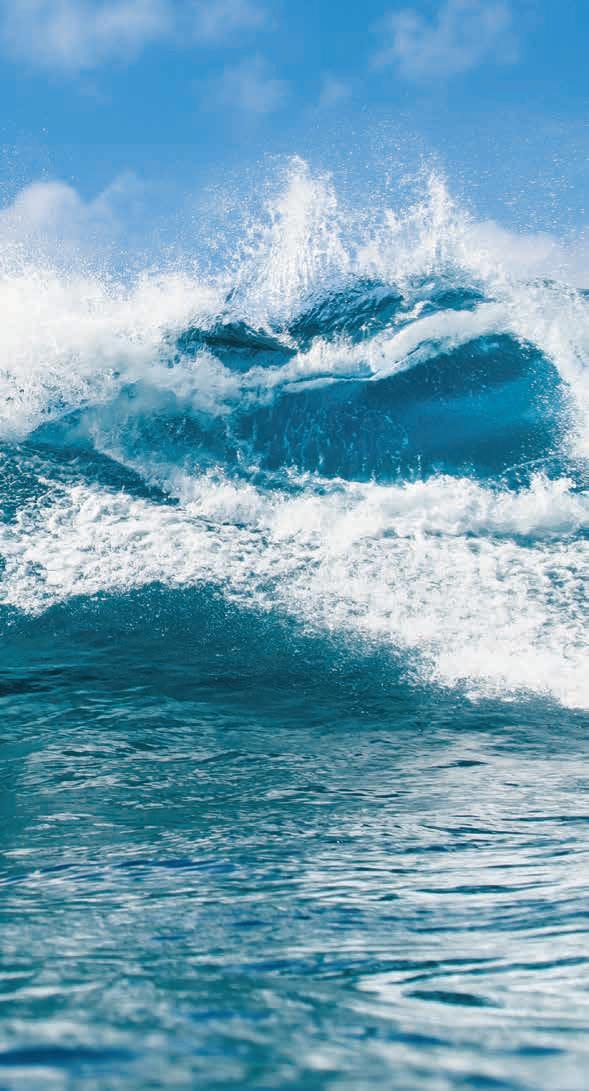
THE SURFERS
CARISSA MOORE, LEFT
PAIGE ALMS, OPENING SPREAD
COCO HO, P. 69
MALIA MANUEL, P. 71
MAKANI ADRIC, P. 72
CRYSTAL HOMCY, P. 73 & 75
ROSIE JAFFURS, P. 75
KEALA KENNELLY, P. 77
FLUX FEATURE
To Build After Fire
On Mokauea Island, the site of O‘ahu’s last traditional fishing village, families have fought for decades to preserve their traditional way of life.
TEXT BY SONNY GANADEN
BY JOSIAH PATTERSON
IMAGES
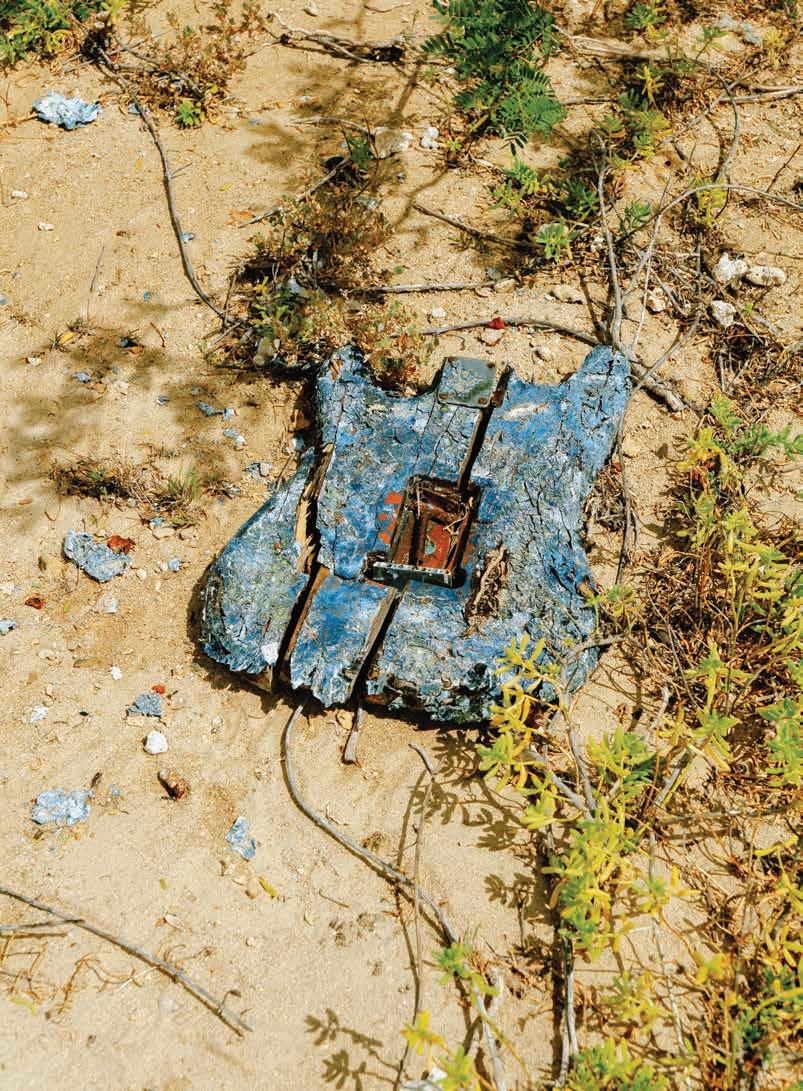
Alight summer rain falls on O‘ahu an hour after daybreak as BJ Bagood drives his boat the short distance from Ke‘ehi Harbor to his childhood home on Mokauea. As Mokauea is in the rain shadow of O‘ahu, the weather clears a few hundred yards out from his destination. Mauoli Ola, the traditional name for Sand Island, is in plain sight across the channel. Commercial jets and military aircraft occasionally roar overhead as they travel to and from neighboring Daniel K. Inouye International Airport and Hickam Air Force Base.
“The lease says Mokauea Island is 13.75 acres in diameter, but we aren’t real sure of the exact dimensions,” says BJ’s mother, Joni Bagood, who, along with her husband, Benjamin, is one of the last remaining full-time residents of the island. The salt air is unkind to structures here. BJ, a carpenter by trade, returns often to work on the family home, which sits on stilts overlooking the busy Kalihi Channel. That proximity to the sea—a life full of daily observations on the tides and weather and natural habitat—has made Joni protective of her home, and of the ecosystem that once provided thousands across O‘ahu’s south shore with an abundance of wild seafood.
The southern shore of Mokauea offers a glimpse of how the O‘ahu coastline once appeared: White sand gives way to a shallow, fringing reef that gently slopes nearly a kilometer out to sea before dropping off into deep blue water, teeming with life. But circumnavigate the island and you’ll find that the shallow reef is now populated by mangrove, which have become invasive across the archipelago. You might also notice the reef itself is displaced—it’s easy to distinguish signs of the dredging that gouged the seascape into odd angles.
It’s also easy to see why fishers have always found their way here. Small fish dart between pools in the low tide and become trapped a few hours a day; ula, the spiny lobster, and ula pāpapa, a slipper lobster, hide in the crevices, waiting until evening to venture out; limu of both endemic and invasive varieties populate the crumbly reef. Pedestals which overlook the shallow waters, both natural and built by fishers, offer excellent vantage for a throw net. At night, with a small torch, lobsters can be grabbed by hand. The reef muffles even the largest of swells, allowing for the berthing of canoes for deep-water fishing.
A century ago, there were several small, populated islands like Mokauea scattered along the south shore of O‘ahu near the mouth of Pu‘uloa, now known as Pearl Harbor. Over the years, the islands were dredged to create the naval base at Pearl Harbor, to construct a 12,000-foot offshore airport runway, and to establish harbors and seawalls along the coast from Pu‘uloa to famous Lē‘ahi (Diamond Head). The ribbon of reef that connected Mokauea Island to nearby Kahaka‘aulana and Mokuoeao islands was removed to create the Kalihi
82 | FLUXHAWAII.COM
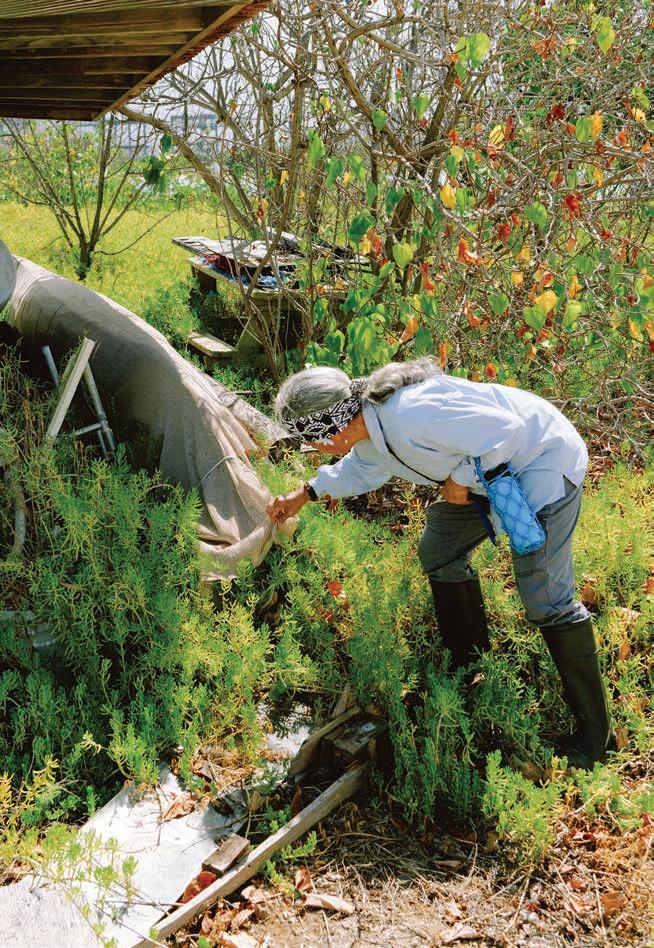
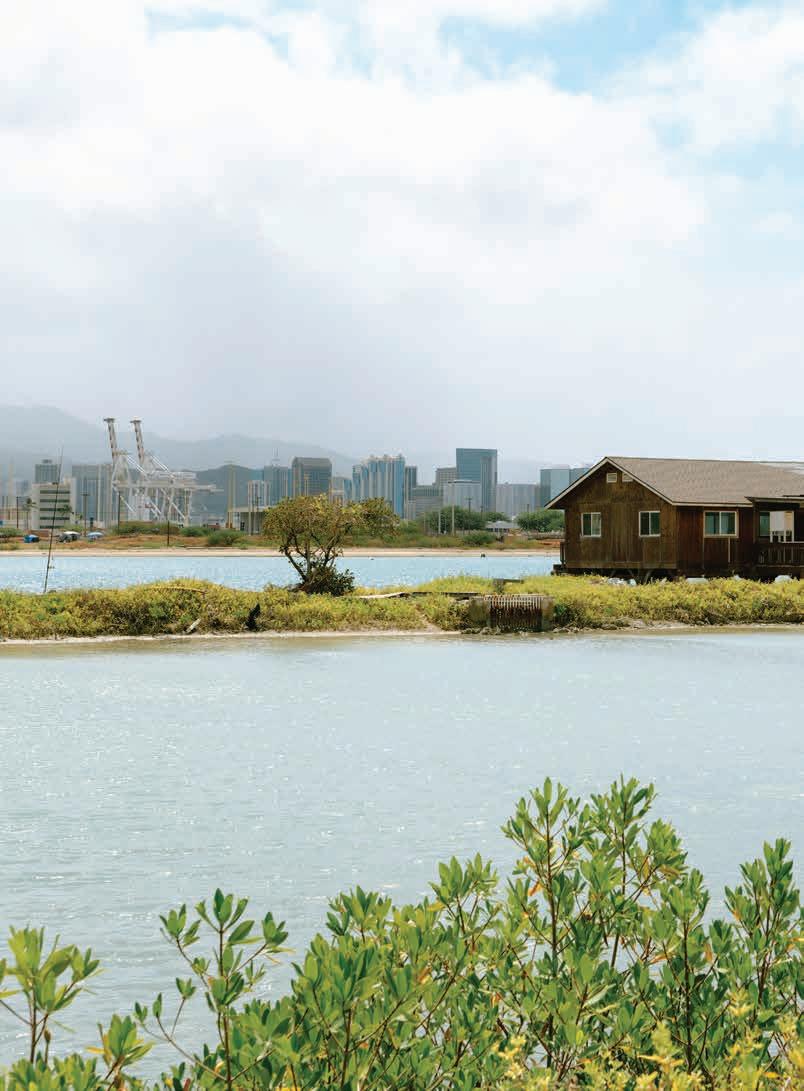

The story of Mokauea and the defiant community that still calls the island home offers a counter-narrative to what has been sold as American progress.
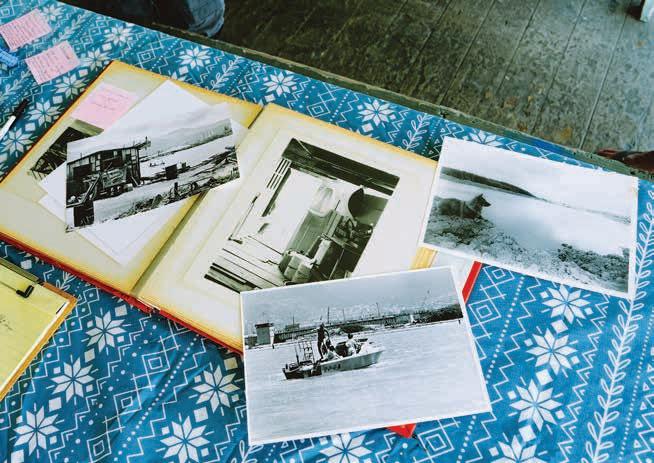
Channel, along which wind and current now push refuse from O‘ahu to Mokauea. On a journey around the island, I see the remains of a mattress, an electric guitar, and all forms of fishing gear. Though a short swim away from O‘ahu, Mokauea somehow feels a world away from what Joni calls “the mainland,” and the rubbish that accumulates on its shores is a constant reminder of O‘ahu’s ongoing industrialization.
The story of Mokauea Island and Mauoli Ola, and of the community that still calls Mokauea home, offers a counter-narrative to what has been sold as American progress. In the first part of the 20th century, Honolulu became the political and economic capital of first an American territory, then later an American state and the hub of American military in the Pacific. Throughout World War II, families were evicted from Mauoli Ola and its neighboring islands to allow for the dredging of a seaplane runway; after statehood in 1959, the new state government was determined to continue
developing the area and set out to evict the few families who resettled on the islands after the war.
The state made another attempt in 1972 to evict those still living on the islands — this time, to build an airport extension —and burned down five homes in 1975. “There was another fisherman, a friend of ours who lived at Mokuoeao, the island across the channel,” Joni remembers. “He said, ‘I built this house with my two hands. I can’t let them burn it down. I have to do it myself.’”
That night, news broke about the destruction on Mokauea and the arrests of protesters and fishers who refused to leave. “My husband is the last of that generation of fishermen,” Joni says, “but he doesn’t like to talk about it, unlike me.”
The state-sponsored arson triggered a public outcry, and John Kelly Jr., an activist and leader of the grassroots environmental group Save Our Surf, petitioned the governor to cease the evictions. Kelly noted that the U.S. Army Corps of Engineers dredged far deeper than they were supposed to, and that the
Resident families have fought for half a century to preserve their traditional way of life. However, uncertainty about their longterm leases loom.
BJ Bagood drives his boat the short distance from Ke‘ehi Harbor to his childhood home on Mokauea. Next page, Joni Bagood, BJ’s mother, is one of the last remaining fulltime residents of the island.
86 | FLUXHAWAII.COM
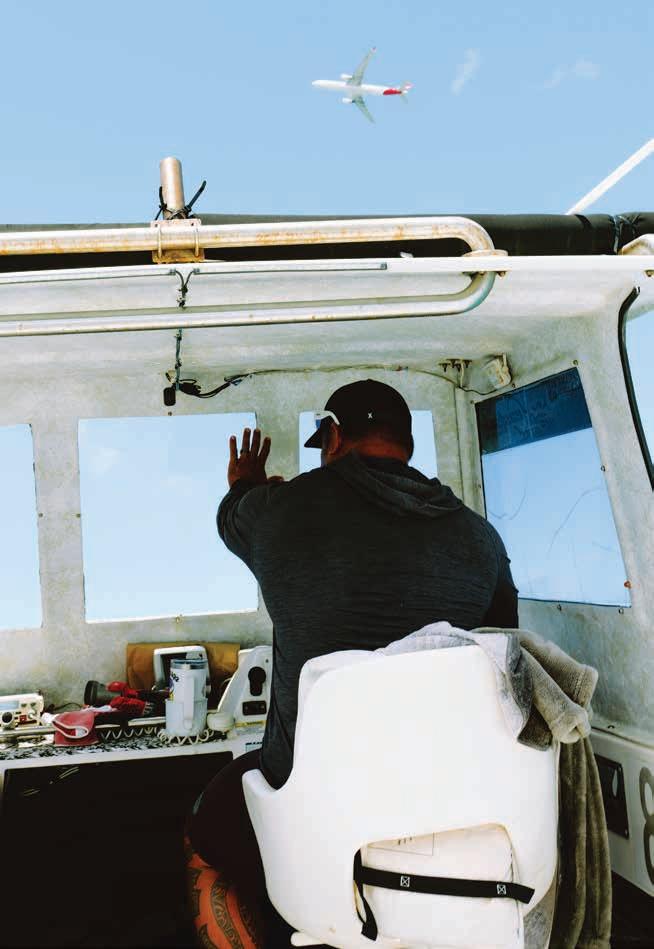

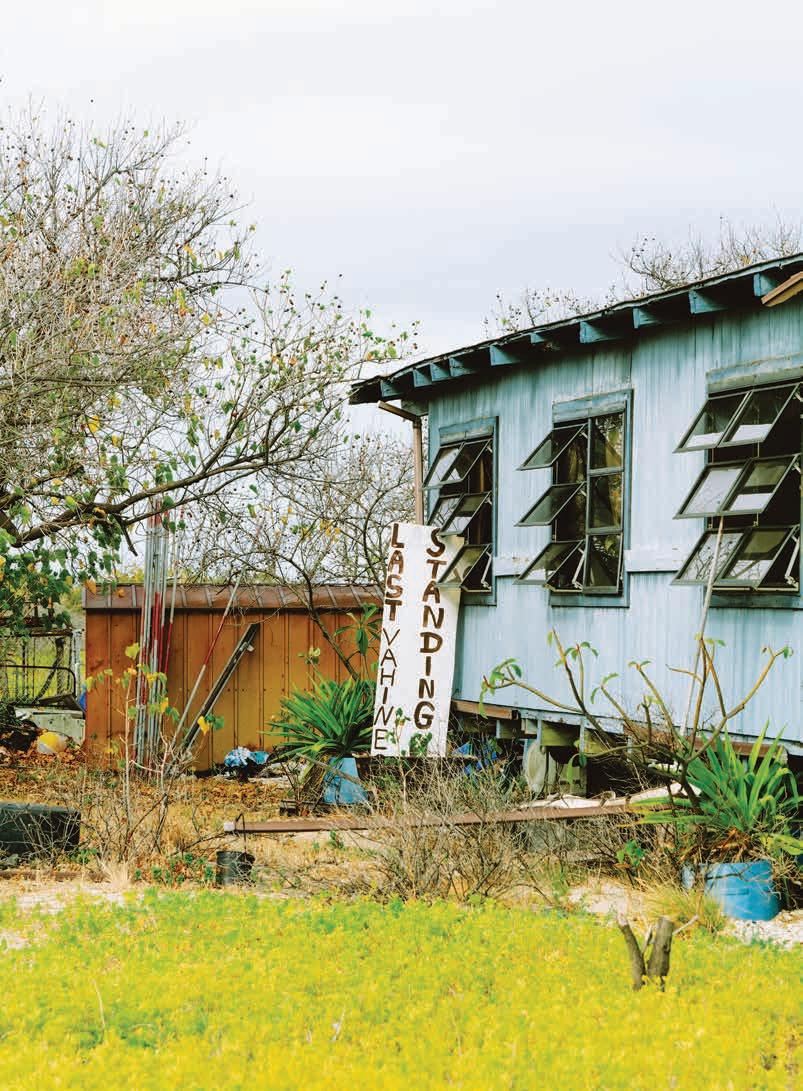
state had violated the 1970 Environmental Protection Act and new state law that protected Hawai‘i’s environment and culture.
“Fishing and agriculture were the primary occupations in pre-contact Hawai‘i, and all life depended on them,” reported a 1976 historical study produced by the state. “The fishing community lifestyle is nearly extinct today, with the exception of Mokauea Island off O‘ahu and Miloli‘i on the island of Hawai‘i … Because of the importance of fishing to Hawaiians, and due to the paucity of existing fishing communities, Mokauea Island is an area of important historic concern.” Two years later, the state Department of Land and Natural Resources granted leases to 14 families who lived in the village and established the Mokauea Fishermen’s Association to preserve the traditional way of life on the island. Later, an education center was built, and the Army Corps of Engineers, the University of Hawai‘i, and various nonprofit organizations have launched continuing efforts to preserve the culture and ecology of Mokauea.
“With the bad comes the good I guess,” BJ says, opening a photo album to reveal a series of monochrome photographs of the Bagood family. He and Joni reminisce over pictures of the village’s residents out fishing, children playing on the reef with the dog, and snapshots showing the silhouettes of carnival rides at the 50th State Fair, seen from across the channel when the fair was held on Sand Island. “I’m generation three of four that’s lived here,” BJ says. “I try to come once a week with my kids. Eventually, the plan is to move back.”
In 2043, the 65-year lease granted to the Bagoods and other families on Mokauea by the state will expire. “We want to continue this, our way of life,” Joni says. “We want people to know about this place, to be educated about it, to see what should be preserved.”
A century ago, there were several small, populated islands like Mokauea scattered along the south shore of O‘ahu near the mouth of Pu‘uloa. Over the years, the islands were dredged to create the naval base at Pearl Harbor, to construct a 12,000-foot offshore airport runway, and to establish harbors and seawalls along the southern coast.
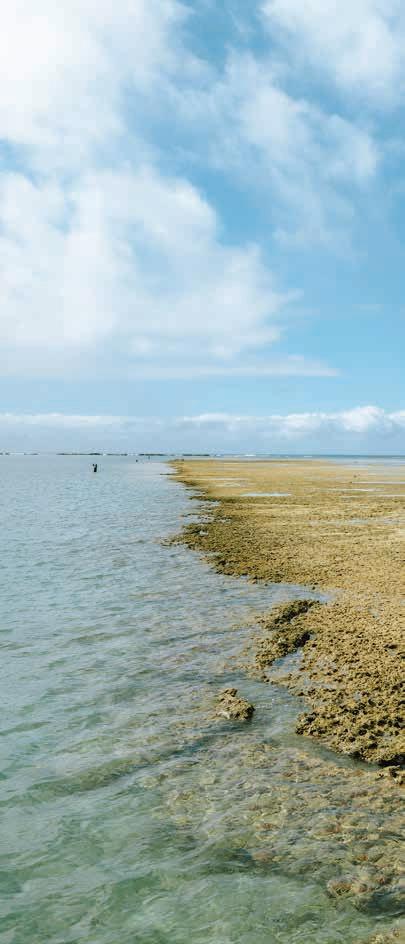
90 | FLUXHAWAII.COM
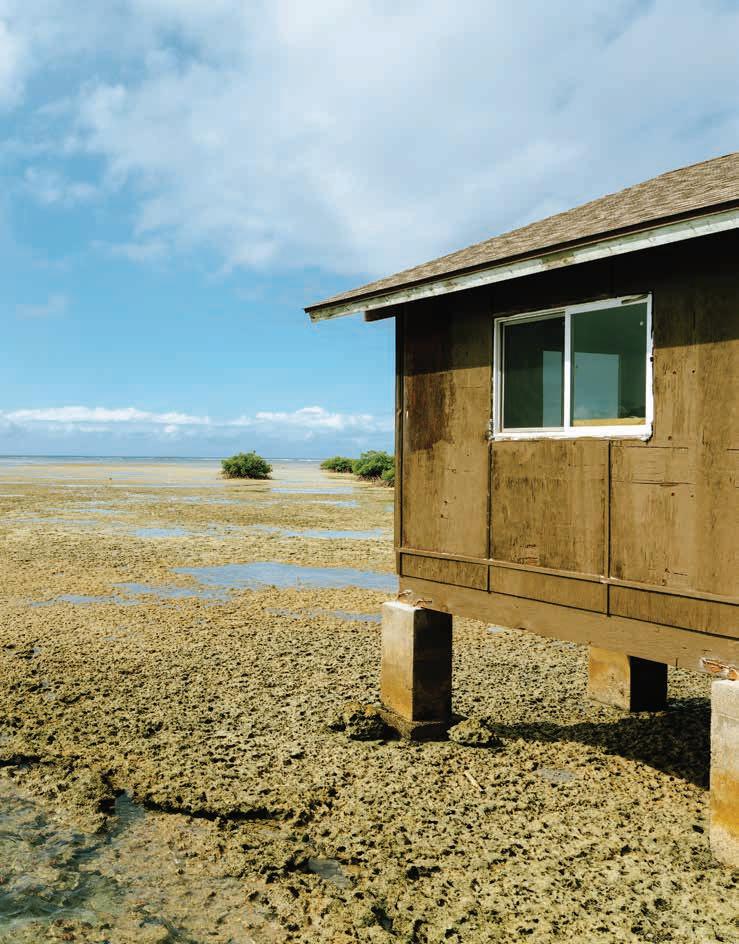
FLUX PORTFOLIO
At the End of the Road
Through analog and digital photography, Nani Welch Keli‘iho‘omalu recreates the layered histories that she finds herself placed within.
TEXT BY JASMINE REIKO
BY NANI WELCH KELI‘IHO‘OMALU
IMAGES
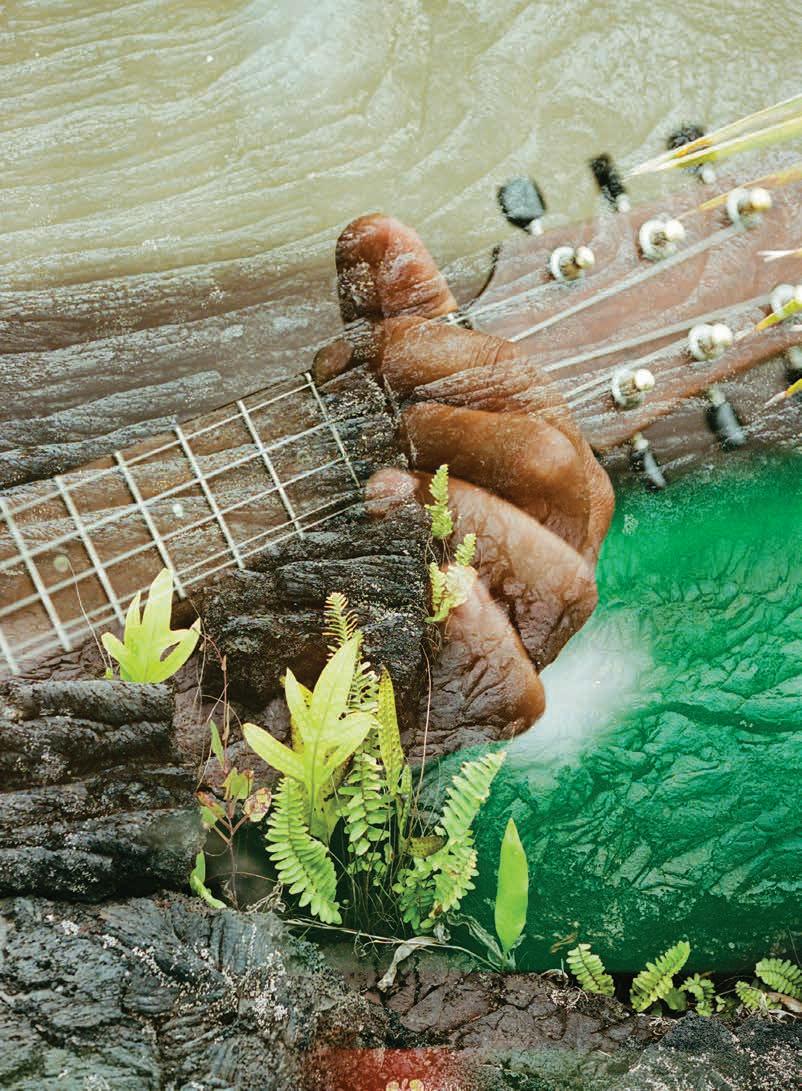
One opens oneself to a photograph. An unveiling of many, caught in between the shutter of a second. With reciprocity in mind, what does close intimacy look like within a changing place? In the context of justice, what does beauty look like? How does photography assist in revealing the histories and stories that allow a portrait to happen?
Beginning with one’s family, Nani Welch Keli‘iho‘omalu photographs her loved ones in the way they want to be seen. Hailing from a long Hawaiian lineage continuing on Kalapana, Hawai‘i Island, and with ties amongst the rest of the archipelago, Keli‘iho‘omalu grew up with grand family parties of over 200, singing and weaving with one another. She also grew up with family turning away from cameras armed by tourists who would accidentally roam onto their property, to seeing her cousin randomly on the Travel Channel while away for college. Photos were rare. People took photos, but it was rare to have photos that her family liked. This representation of Hawaiian families stood far away yet too close; perimeters blurred. Incorporating layers to produce images of a Hawaiian family right now: deep familial love is illustrious, combined, and full of story and essence.
Marked by a state highway sign signaling “End of Road” where Kaimū Bay diverted, the fast, late ’80s flow from Kīlauea covering its track in lava, Keli‘iho‘omalu’s family home there is one of a handful of houses that survived. The presence of loved ones connected with this home marks the scene of Keli‘iho‘omalu’s first personal photography showcase, Kalapana I Ka Wā Kahiko , in homage to the old days of Kalapana. On display in July 2023 at Kaiao Space, the Honolulu gallery by Sig Zane, the show was a vision shared with artist and cousin Nainoa Rosehill, communicating a life of a landscape where family is interwoven into the texture of memories and different storied places rich in mo‘olelo. Revealing history through photographs, video, paintings, and song, Keli‘ho‘omalu’s imagery alone redefines the idea of capturing into a culture of connection. Amidst the vast interconnectedness of the islands, she declares, “My aunty is your aunty.”
These personal ties to aunties, uncles, and cousins from all over are expressed along the gallery’s perimeter where every inch is connected by a loved one from their particular history throughout the islands: the keys of
“For
me, Kalapana is still old Hawai‘i. There are little pockets you can’t find anymore. This is what my family represents: We are Keli‘iho‘omalu and we come from a place that is untouched. Some keep traditions of old through hula, through fishing and farming; our family does it through mele and through the way that we live. Just being aloha.”—Nani Welch Keli‘iho‘omalu
a hala fruit brought by Aunty Lei Wann from Kaua‘i, are strewn about; lei and hīnano adorned the walls; Grandma “G-girl” Kawehilani Kalalau Keli‘iho‘omalu graced the air with her memory and mele as celebrated “Aloha Kaimu” lyrics written by her flashed in a video sung by her sons. Grandpa Robert “Uncle Robert” Po‘okapu Keli‘iho‘omalu’s pāpale flown in by Mom and Dad a couple of days before the opening; Pele’s Hair gathered in Mānoa by Nani and family to honor one of her dad’s late sibling’s favorites. He is not photographed but instead painted by Nainoa and placed at the end of the gallery to connect all siblings together.
Tangible and bound with care, Keli‘iho‘omalu organized Kalapana I Ka Wā Kahiko in honor of her family joined by Rosehill, incorporating corporeal, layered histories that segue within one another, stories about moving through time — a conversation between “ao”, the literal, and “pō”, the astral. Observing the tradition of storytelling, family, ‘āina, and lineage, Jasmine Reiko speaks with Nani Welch Keli‘iho‘omalu in exchange with Nainoa Rosehill for this photo essay, presenting Kalapana I Ka Wā Kahiko and other related works reflecting Keli‘iho‘omalu’s journey as a Hawaiian photographer who came back home.
94 | FLUXHAWAII.COM
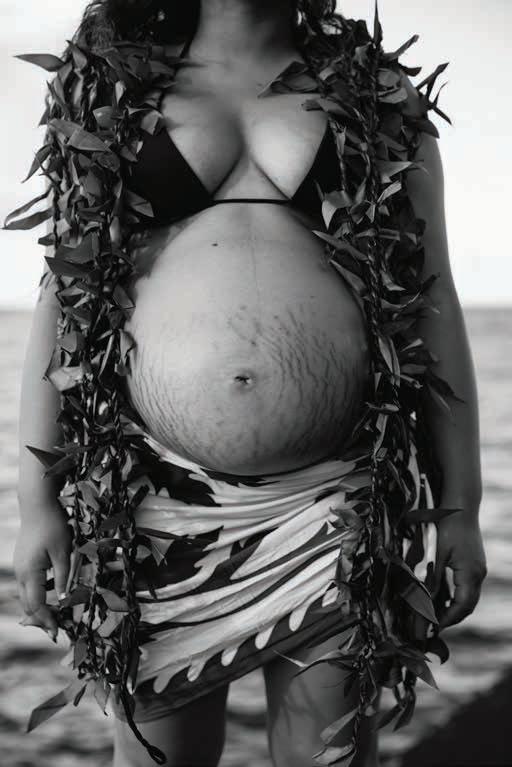
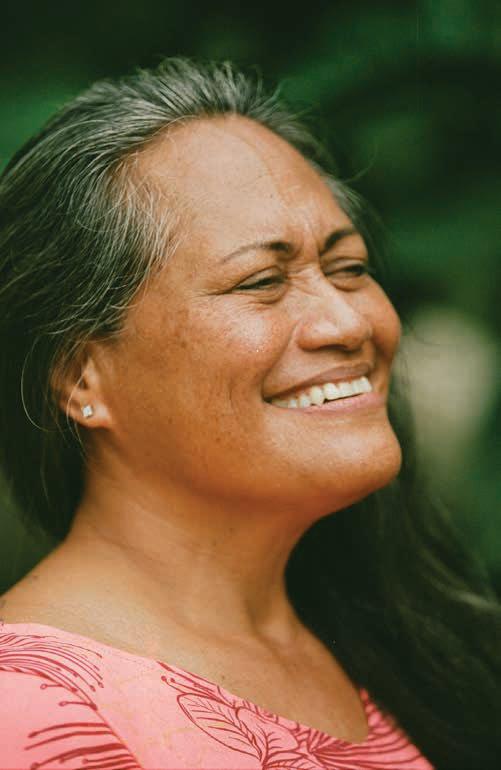
You graduated from Lewis & Clark College in Portland, Oregon in May 2018 with a degree in rhetoric and media studies. What has your timeline been like as far as moving away from Hawai‘i and pursuing photography when you returned?
NANI WELCH KELI‘IHO‘OMALU
Photography has been a very crucial way for me to connect to my culture. For me, growing up and being able to photograph and document my family was my way of connecting to my heritage and being a Hawaiian. Coming from Hawai’i and photographing Hawaiians was something that did not happen as much in our community. I think now in the last five to ten years there is so much more visibility of Hawaiians and so much more imagery of Hawaiians in the context of now. In the modern day.
96 | FLUXHAWAII.COM
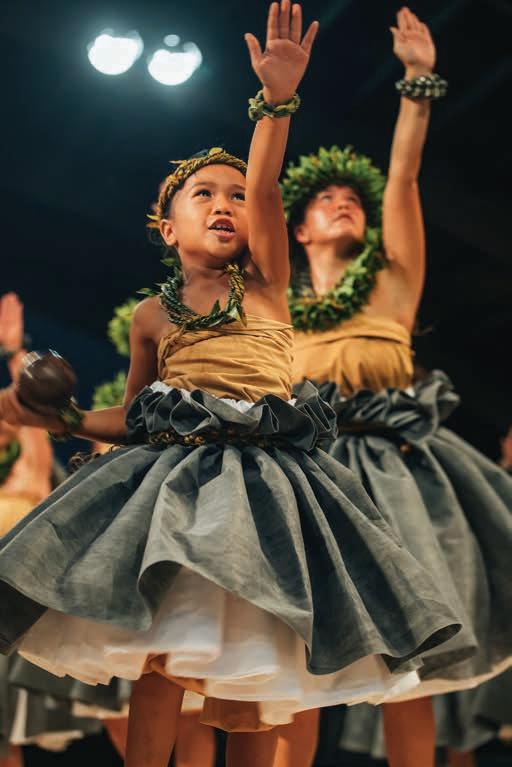
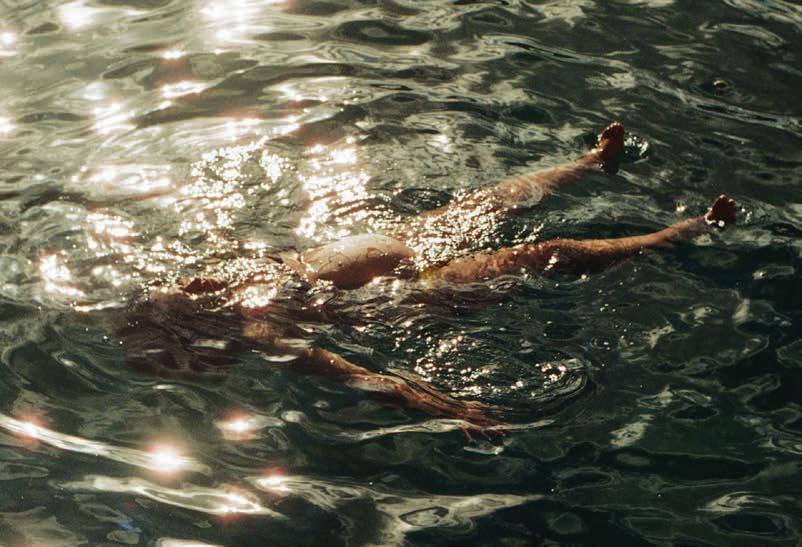
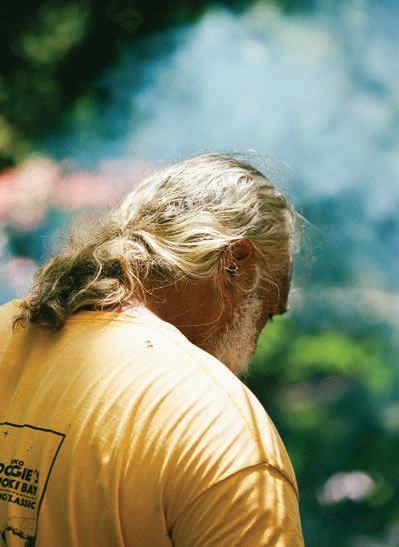
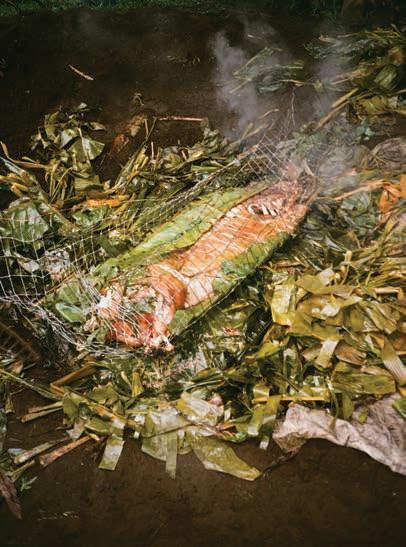
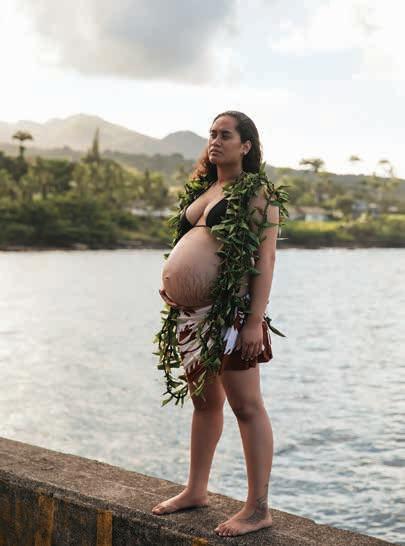
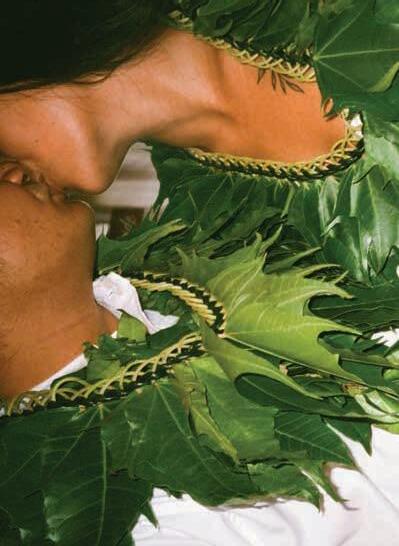
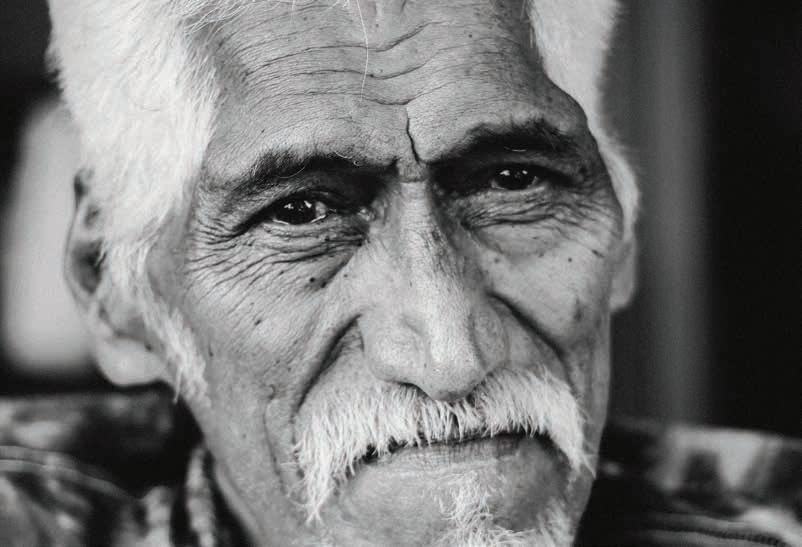
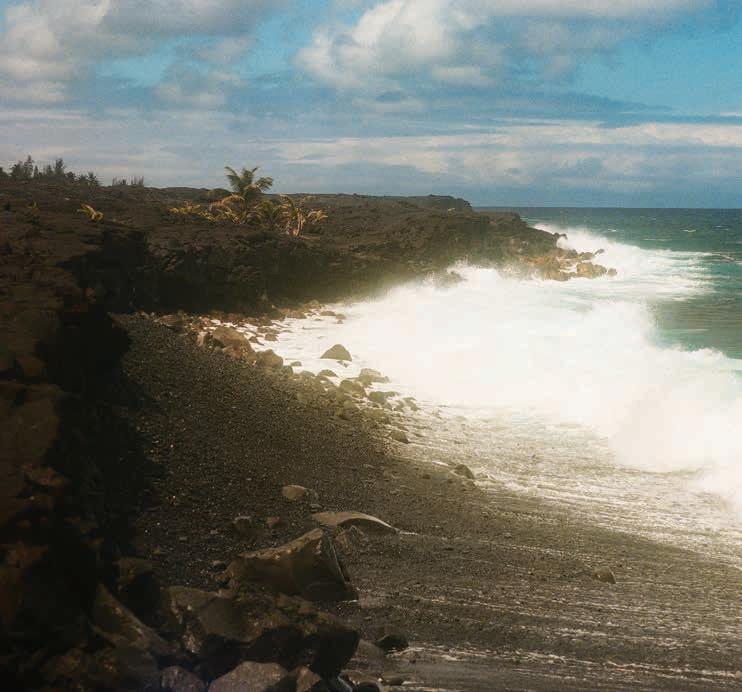
100 | FLUXHAWAII.COM
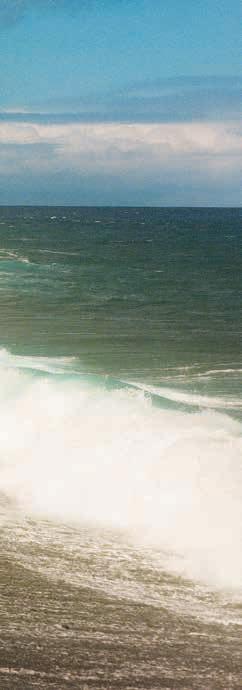
In Kalapana i Ka Wā Kahiko, memory and myth twist together, snatched by the ‘Āwili of Kaimū, fused within the forge of its seas. Ancient springs, bathed in shivering water, are blighted by the changing of the earth. The sound of thunder without rain; a vision of yellow foam gurgling out from the mouth of a cave. Materials clash and clamor, rupture and effuse; the song of Puna spills out from the womb of the earth. [Exhibition text by Nainoa Rosehill]
Can you tell me more about the exhibition text?
NAINOA ROSEHILL We wanted to craft something that both honored our work, our process, and our place, while also concealing the specific details that build the layers of sacred space. Honoring specific features by name, and our histories through allusion, felt like a natural way to bring them into O‘ahu while preserving their special qualities from being preyed on, in a cultural landscape where all that is “Hawaiian” is relegated to the decorative.

From one place, one can become many and honor all that has come before. What does place mean to you?
NR Being born and raised in a district where land is ephemeral, with many of the places that raised the last century of our family being buried in lava now today, place and our relationships to place become valuable resources. Places are more abstract at home, land can change radically in a matter of moments. But they will always retain their names. Kalapana is no less Kalapana today than it was in the ’80s before it was covered. The names of those places that are now forever changed are our anchors, reminding us of what used to be. Invaluable pillars of what it means to be of this land, and of pele.

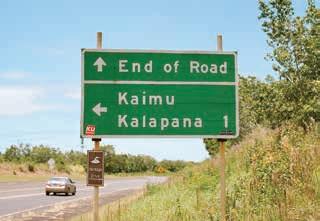
102 | FLUXHAWAII.COM
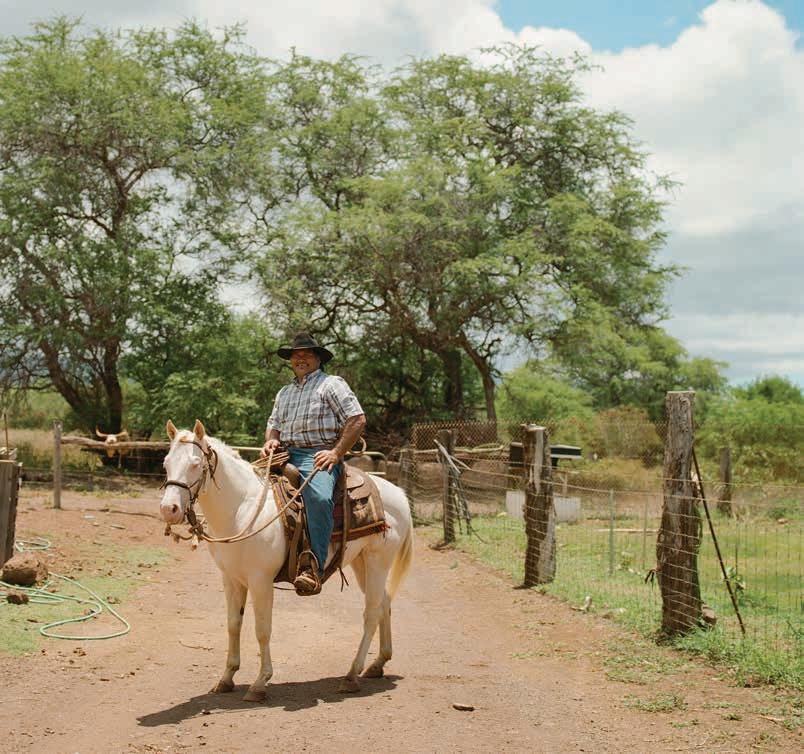
I am going to ask you for your personal definitions of these themes. These can be not definitive, but rather an illustration or example. What is myth? What is memory?
NR For myself, myth and memory are, together, rhizomatic. They are in a delicate dance with each other and are not easily defined from one another, especially through the lens of the Pacific, where so much of the bio-cultural landscape of our generational communities is shaped by our oral histories. Kalapana is its own form of myth, destroyed and buried beneath the body of our ancestors. A Kahiki-like, where our histories lie sleeping yet wholly remain
inaccessible to the feet, to the hands, to the mind; eruption turning the land into an unattainable ideal. We interact with these places in the contextual space that surrounded them: the songs of our ancestors, the stories of the past. This exchange between the memory holders and the inheritors of the myth is the relational experience where these two things weave together and build the foundation of the exhibit.
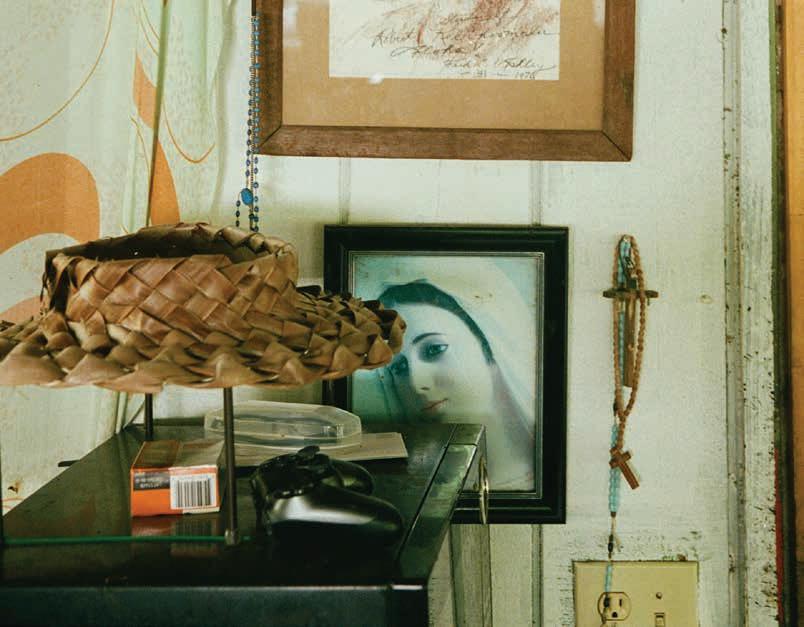
As a method that helps shape and influence your identity, what is it that brings you to a place of gratitude? And how does this process create and nourish you?
NWK Moving away affected the way I wanted to do my work, and how I wanted to be able to use my skills as a photographer. Not just for Hawaiians, but for Hawai‘i in general. Growing up in a place that is so multicultural, there’s a certain thing about being from Hawai‘i where your cultural understanding is so different from everywhere else in the world. I thought, I need to be able to do that for people, I need to be able to give and make portrayals and show portrayals of people that you immediately know if you come from this place. Even if that’s not your aunty and uncle, that is your aunty and uncle.
104 | FLUXHAWAII.COM

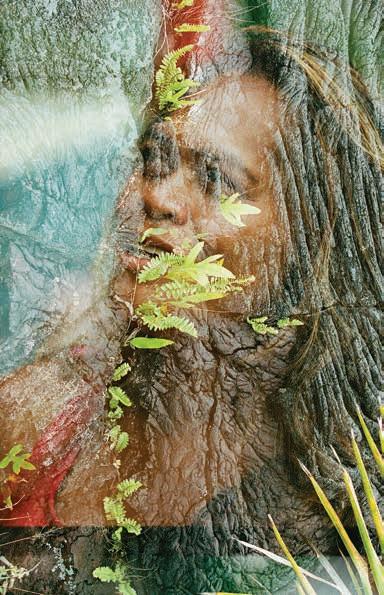

Themes of naming and memorializing come to mind in your photography. The imagery speaks to many in the room who remember this feeling, of honoring the direct room, the mountains and sea that frame it, pele, and the ancestors with us in the space as well as talking to our friends. What is the importance of gathering and celebrating?
NWK Happiness and gathering that is not always serious is very important. It keeps everything alive and present. Our family is very well known for being fun-loving and kanikapila. Once one person picks up an ‘ukulele, somebody else joins in, somebody brings a stand-up bass, so on. Bringing your presence to a place like that is so important, just to be happy. That’s our legacy, not even just in the Hawaiian community. We are such a communal group. I love to chit-chat, so coming together and sharing that space is great. It fosters a safe space for people to further create and get excited. To share stories, but also our own personal past, which then creates and culminates what we see today in our newer communities and spaces.
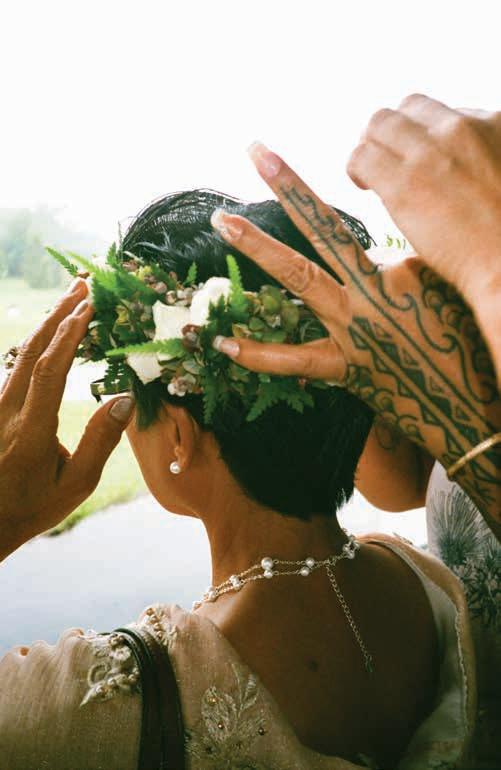
107 Read the full interview at fluxhawaii.com
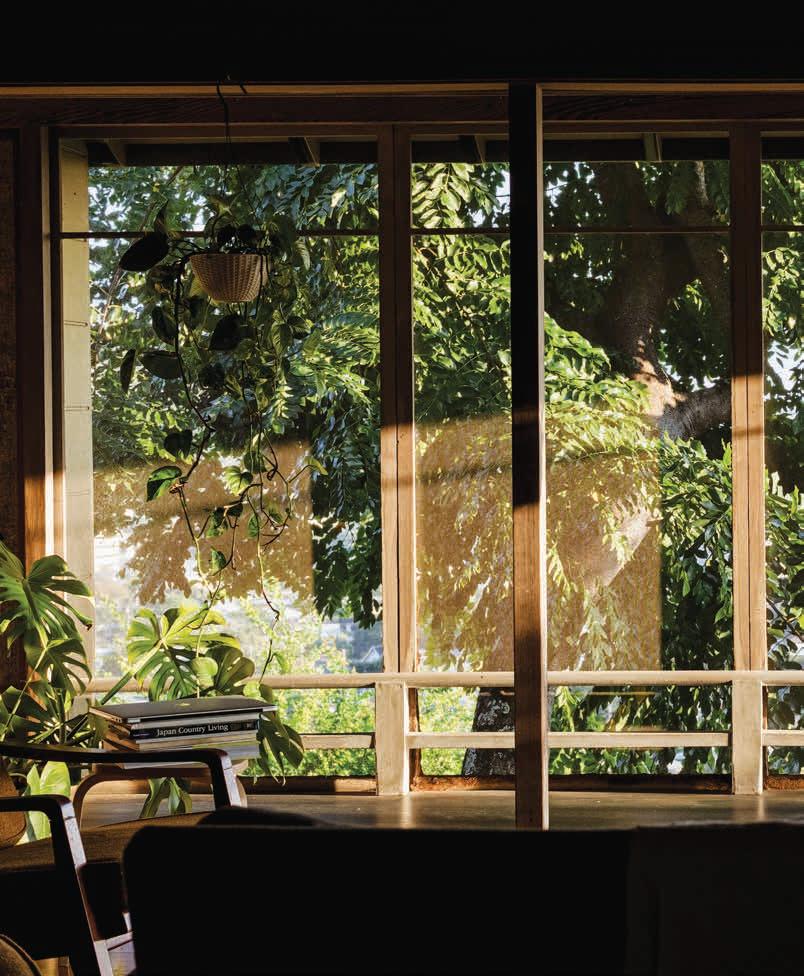 View from inside a historic home designed by Allen R. Johnson. Image by Viola Gaskell.
View from inside a historic home designed by Allen R. Johnson. Image by Viola Gaskell.
LIVING WELL
“If you’re going to be practicing lei making consistently, growing those natives that you know you want to include is the responsible thing to do.”—Meleana Estes
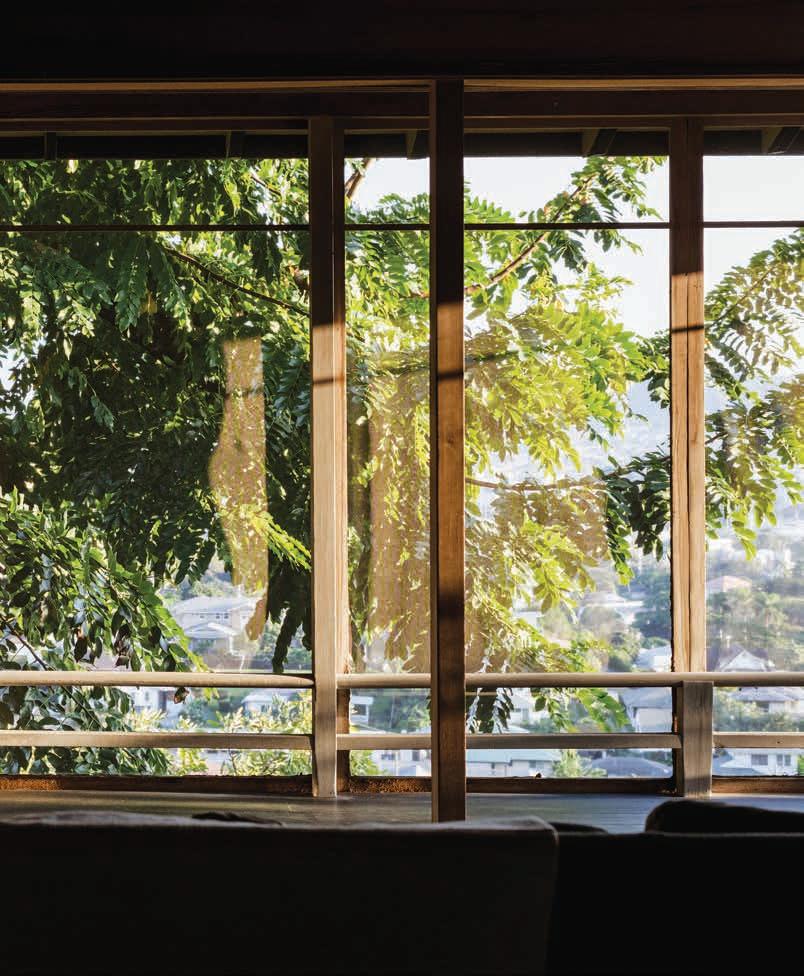
FLUX LIVING WELL
| HANA LEI |
E Lei Kau, E Lei Ho‘oilo I Ke Aloha
No ka mea hana lei ‘o Meleana Estes, he ho‘okupu aloha kēlā me kēia lei no kona tūtū, kona lāhui, a me kona ‘āina.
KĀKAU ‘IA NA N. KAMAKAOKALANI GALLAGHER
PA‘I KI‘I ‘IA NA MAHINA CHOY-ELLIS
HO‘OPONOPONO ‘IA NA N. HAʻALILIO SOLOMON
I ka malu o Lēʻahi koʻu hui mua ʻana me Meleana Estes, he wahine Hawaiʻi e kaulana nei i ka mikioi o kāna hana lei a me nā ʻano wehi ʻē aʻe e kāhiko ai kānaka. I laila hoʻi, i kona home ʻolu i ka ʻehu kai o Waikīkī ko māua kamaʻilio ʻana no ka moʻokūʻauhau o kona ʻike hana lei, me nā kuleana o ka poʻe hana noʻeau ʻōiwi i ke au neʻe nei. I ke kipa nīnauele ʻana iā Meleana, kau maila i ka maka o kāna malihini kekahi mea i kamaʻāina iā ia, he papa heʻe nalu Ebert no Kauaʻi mai, i ʻano laha ʻole hoʻi ma waho aʻe o ka ʻāina i hānai ʻia ai ka mea kākau. ʻAe maila koʻu kamaʻāina, no Kauaʻi nō kekahi hapa o kona hānai ʻia ʻana, a no Oʻahu nei hoʻi kekahi, i ka hale o kona kupuna wahine aloha ma Mānoa. I ka hāliʻaliʻa ʻana a koʻu kamaʻāina i kona kupuna wahine, ʻo ka ʻōlelo i puana mau ʻia mai, “ʻAʻole a kana mai ke kupaianaha.” Lohe ʻia nō hoʻi ka mahalo nui o Meleana i kēia wahine i loko o kēlā me kēia hua ʻōlelo e pili ana i kona tūtū, ʻo Amelia Ana Kaʻōpua Bailey, he kupa no Kalihi, ma Oʻahu nei, i hala i ka makahiki 2012 i kona makahiki 89 o ke ola honua ʻana. Moʻolelo maila koʻu mea hoʻokipa, ʻaʻole i aʻo kona kupuna wahine i ka hana lei i kona wā liʻiliʻi, e like me Meleana mā, ʻoiai “ma kahi o ka wā i piha ai iā ia kona mau makahiki he 50, lilo ʻo ia he haumāna hana lei.”
Wehewehe maila ʻo Meleana, he hua kēia hana lei a kona kupuna wahine o ka wā ʻo ka hoʻōla hou ʻana i nā kuʻuna Hawaiʻi, ka wā hoʻi i hoʻomaka ma kahi o nā makahiki 1970. ʻO ka loea lei ʻo Marie McDonald ke kumu aʻo a ko Meleana kupuna wahine, a ma lalo o kāna aʻo ʻana i hoihoi ai ʻo Kaʻōpua i nā hana lei kuʻuna a ka poʻe Hawaiʻi. “No laila, ulu a nui ka hoi i loko ona ma luna o ka wili lei ʻana a me ka haku lei ʻana, nā ʻano kaila kahiko hoʻi o ka lei, ʻaʻole he kui me ke kaʻā, he hoʻohana ʻana ia i nā makelia no ka ʻāina mai, a ua noke nō ʻo ia i ka noiʻi ʻana i kēia ia hana.”
I ia manawa iho, ʻo ka lilo aʻela nō ia o māua i ka ʻai kole ʻana no nā ʻano lāʻau a mea kanu hoʻi o kā Meleana hoʻohana ʻana. Ma luna o ia kumuhana, kupu aʻela ka nīnau, he aha ke kuleana o ka mea hana lei i kēia poʻe lāʻau Hawaiʻi, a pehea hoʻi e hoʻopai aku ai i ka hoʻohana ʻana i nā pua maoli, me ke akahele naʻe. Pane maila koʻu kamaʻāina, “Akamai nō kahi nīnau ʻana mai ou”, ua ahuwale nō naʻe, maopopo ʻē iā ia ka haʻina. “Ma kaʻu ʻike i ka hana lei, e aho nō e kanu ʻia kou māla pua lei.” “Noʻu iho, ʻo ka mea nui…” i ʻōlelo mai ai ʻo Meleana, “Inā maopopo iā ʻoe e hana pinepine ana ʻoe i ka lei, kanu ʻia kō palapalai, kanu ʻia
110 | FLUXHAWAII.COM
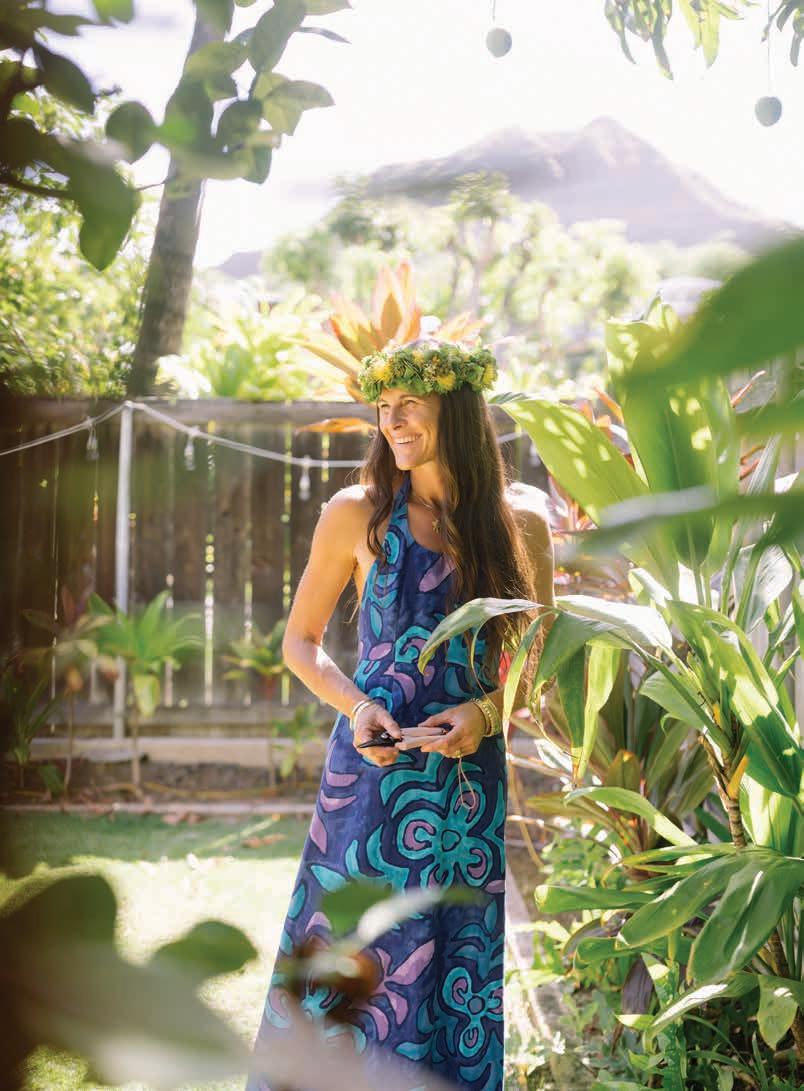
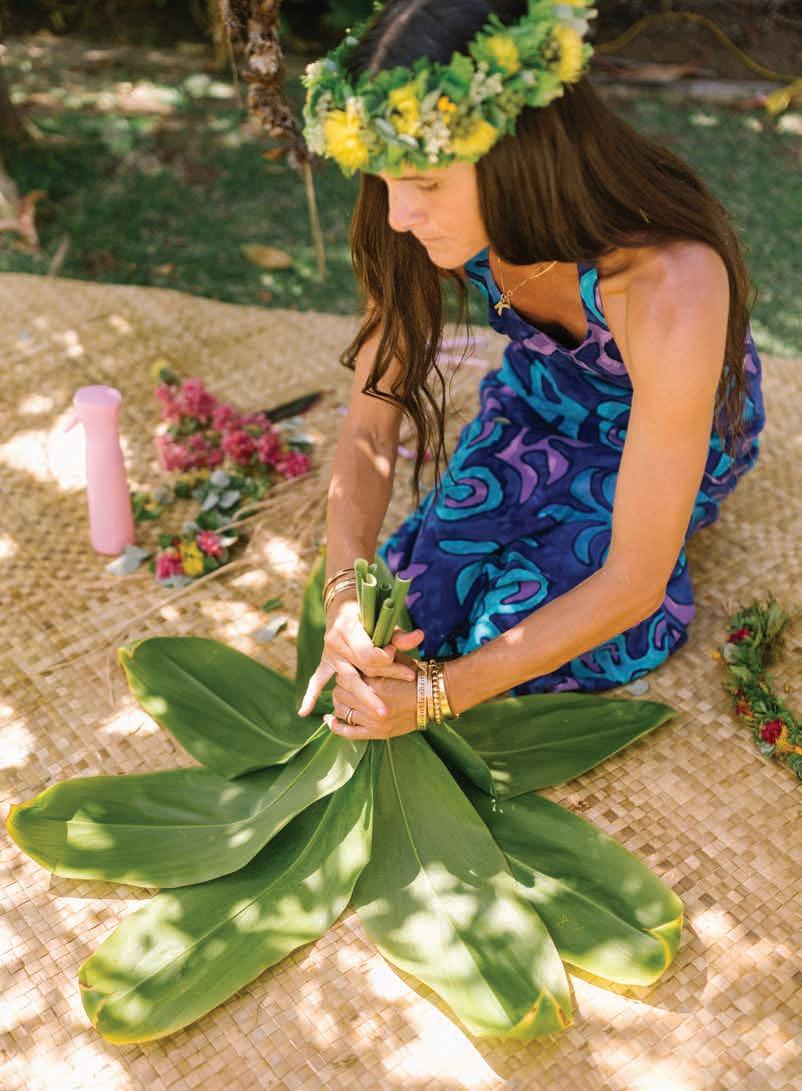
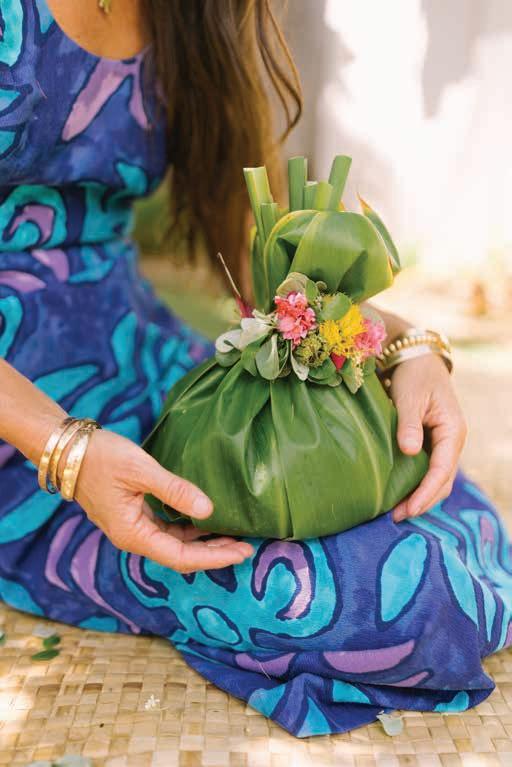
“Inā maopopo iā ‘oe e hana pinepine ana ‘oe i ka lei, kanu ‘ia kō palapalai, kanu ‘ia kō liko lehua, kanu ‘ia kō pōhinahina, e mālama i nā mea kanu ‘ōiwi āu e makemake nei e ho‘okomo aku i kāu lei, ‘o ia ka hana kūpono e hana ai,” i ‘ōlelo mai ai ‘o Meleana.
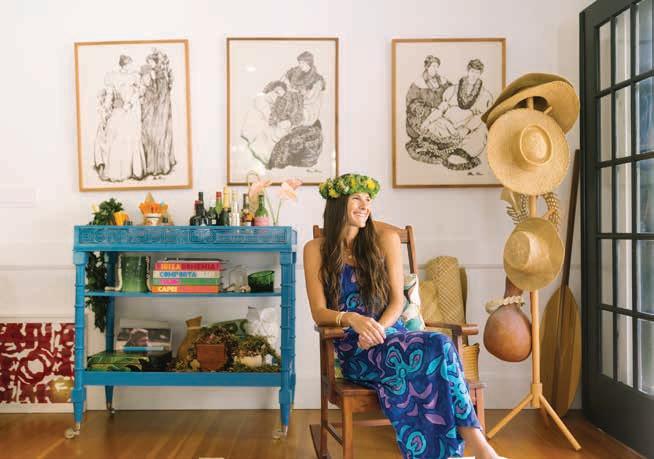
kō liko lehua, kanu ʻia kō pōhinahina, e mālama i nā mea kanu ʻōiwi āu e makemake nei e hoʻokomo aku i kāu lei, ʻo ia ka hana kūpono e hana ai.” Eia hou, wehewehe mai ʻo Meleana i kekahi loina lei a kona tūtū i aʻo mai ai, ʻo ka haku ʻana i lei hoʻokupu no ka ʻāina i kahi o kou ʻako pua ʻana. “Aʻo maila ʻo Tūtū, iā ʻoe e piʻi kuahiwi ana i ka ʻohiʻohi ʻana i ka palapalai, e noho paha ʻoe a hili i wahi lei, a waiho ʻia no ka nahele wale iho nō, ma mua o kou haʻalele ʻana iā uka.” A wahi āna, he hana kēia e pili ai ke kanaka i kona ʻāina. Ma o kēia ʻano loina i aʻo ʻia ai ʻo Meleana a me kona ʻohana i ke koʻikoʻi o ke kuleana o ka mea hana lei. ʻAʻole naʻe i lilo kēia hana he luhi nona ma ke ʻano he hana nui i ʻākuleana ʻia, mea mai koʻu kamaʻāina no kona lima noʻeau, “He makana ia i kaʻu ʻike, hiki iaʻu ke hana i ka ua mea ʻo ka lei” a ʻo ka lilo aʻela ia i kuleana nona ma loko o kona ʻohana ponoʻī.
I kēia manawa naʻe, i ka paʻi ʻia ʻana o kāna puke, ʻo Lei Aloha, e laha ana hoʻi ka ʻikena o kāna mau lei lupea maoli i mua o
ka nui manu. He puke moʻolelo kēia hana nui a Meleana lāua ʻo Jennifer Fielder i piha i nā hāliʻa aloha o ka hana lei ʻana, pēia pū me nā ʻano moʻolelo a loina o ia hana noʻeau kaulana loa o ko kākou pae ʻāina. No kaʻu nīnau hope loa ʻo ka nīnauele ʻana iā ia, mea akula kāna malihini, “I hea ana kāu ʻoihana lei i ka wā e hiki mai ana?” A pane maila ke kamaʻāina me ka hene iki ʻana mai o ka ʻaka, “He manaʻo nō koʻu.” Wehewehe ʻia maila kona manaʻo, he manawa kūpono kēia no ke kūkulu ʻana i kekahi ʻano papahana aʻo no kēia hana noʻeau Hawaiʻi. “Manaʻo au,” i mea mai ai ʻo Meleana. “Ō aʻo nā ʻōpio a pau i ka hana ʻana i ka lei poʻo i kona makahiki ʻumi kūmālima, ʻeā.”
ʻO kona manaʻolana, ʻaʻole e pono ana e kaukoʻo wale kākou i nā ʻanakē lima noʻeau o ke Kaona Pākē i nā manawa a pau, he hiki nō ke hana ʻia kāu lei no kou ʻohana ponoʻī. No kāna puke, mea mai koʻu kamaʻāina, “He hana laulima nō ia … ke manaʻo nei hoʻi au ʻo ka moʻolelo lei kēia o Hawaiʻi.” ʻO koʻu manaʻo maoli ia, he puke kēia no ko Hawaiʻi nei.”
This piece is part of Flux Hawaii’s Hawaiianlanguage reporting series featuring articles conceived, commissioned, and produced all in ‘ōlelo Hawai‘i, in partnership with Kīnā‘ole Foundation. Visit fluxhawaii.com/ section/olelo-hawaii to read this story in English.
114 | FLUXHAWAII.COM
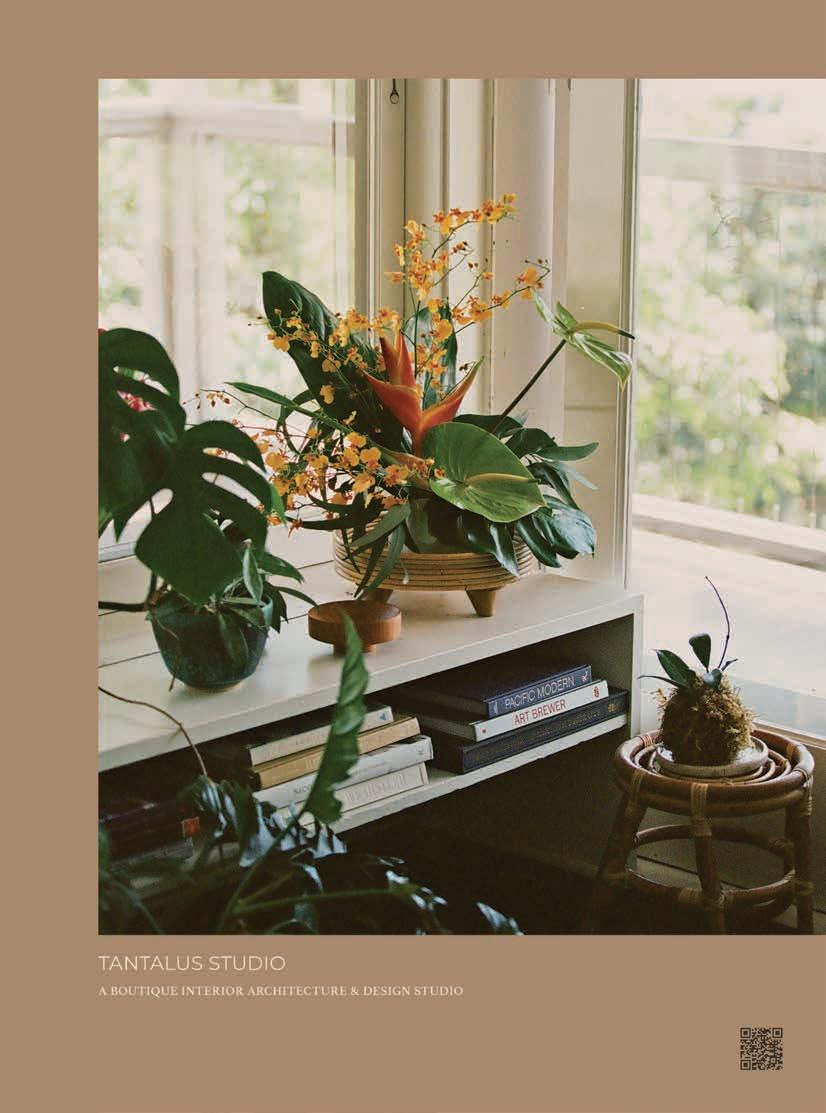
Crafting Curvature, in a Linear Space
Hawai‘i creative folk are drawn to the historic Johnson house. For a local lamp maker, the residence’s lasting nature presents reminders to elevate one’s design practices.
TEXT AND IMAGES BY VIOLA GASKELL
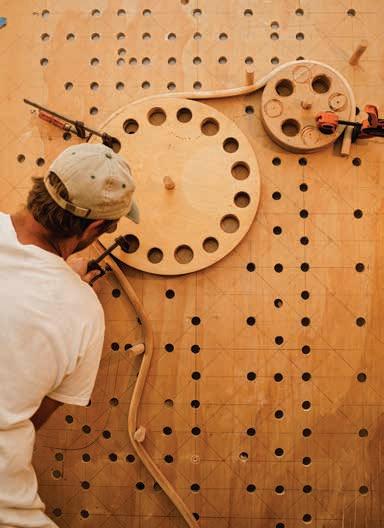
Since early 2022, woodworker Brennen Cunningham and creative producer Hannah May have been residing in a historic home perched among the treetops of Mānoa Valley’s ‘ewa slopes. Situated at the end of a steep path composed of approximately 84 lava rock steps, the house presents an unassuming exterior which shelters a warm, monastic Japanese-inspired home. Built in
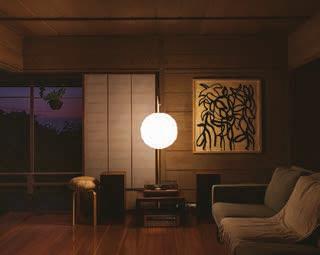
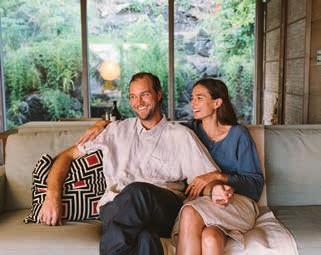
FLUX EXPLORE | DESIGN |
116 | FLUXHAWAII.COM
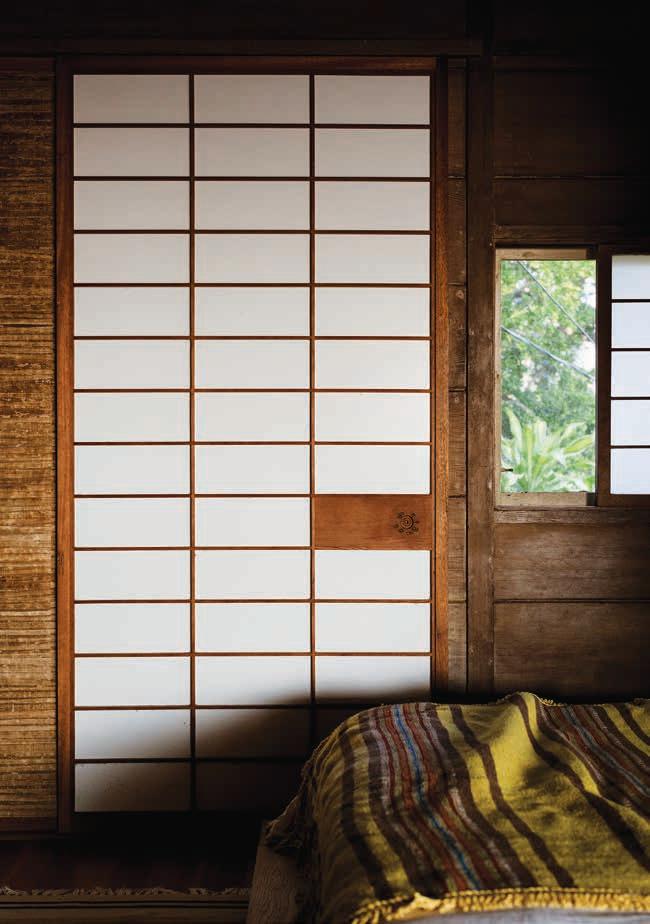
117
1938, the residence, colloquially called the Johnson house, a reference to the esteemed Hawai‘i architect Allen R. Johnson who initially built it as his personal home, is an ode to the Oʻahu outdoors and to the refined simplicity of Japanese architectural design. The structure’s uninterrupted planes reach out towards Lēʻahi and the sea beyond, separated only by screen and redwood framing.
For Cunningham, living in the Johnson house gives a sensation of physical and mental spaciousness, while also serving as a reminder to keep the standards of his own woodworking craft high. “As a woodworker, it’s really inspiring on a daily basis to live in a nearly 100-year old home filled with detailed carpentry that still functions perfectly,” he says.
Like much of the furniture that Cunningham builds, the house he resides in is linear in nature, shaped by hard edges and clean lines. But it is his signature curved lamps that usher an organic playfulness into the space, for example, the original prototype which resembles an ‘S’ reaching out towards its cohabitants. In 2019, Cunningham began designing the distinctive lamps, which became the namesake of his company, Good Lamp. Last winter, lamps came to the forefront of his work during a residency at Single Double, the boutique-cum-art space in Honolulu’s Chinatown, where he experimented with new materials and shapes to create a line of shorter acrylic lamps that complement his tall curvaceous ones.
Drawing inspiration from traditional wooden boat builders who would use steam to bend the hulls of ships, along with techniques used by Indonesian rattan furniture makers, Cunningham created his own method for bending the same pliable wood. His method materialized as a board, taller than he, covered with holes of varying size used to hold moveable dowels that he bends steaming rattan poles around, securing them until their shape solidifies. The board’s modular form enables him to create curves of varying sizes and intensity, a process that renders each lamp one of a kind. For Cunningham, the arcs of his lamps are a nod to nature. “Curved shapes appeal to the ancestrally connected part of us,” he suggests, and “in a way that comforts your subconscious by adding an organic element to what is mostly a manufactured, rectangular, straight space.”
Growing up in upcountry Maui, Cunningham, age 33, gained his foundation in carpentry by spending summers building houses and furniture with his dad, Bill. The elder Cunningham’s craftsman’s approach left an impression on his son; Cunningham readily brings to mind the elegant spiral staircases with broad handrails and detailed grainmatched cabinets his dad built. While studying science at University of Hawai‘i at Mānoa, Cunningham became engrossed in photography. He went on to work as a photo assistant in San Francisco and New York, until he felt called back to work with wood again. For a year, he worked at the New York fabrication studio Friends and Family where he
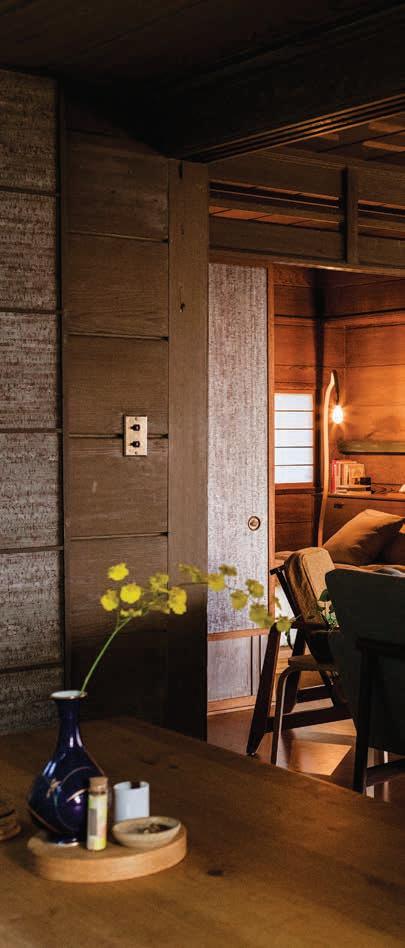
118 | FLUXHAWAII.COM
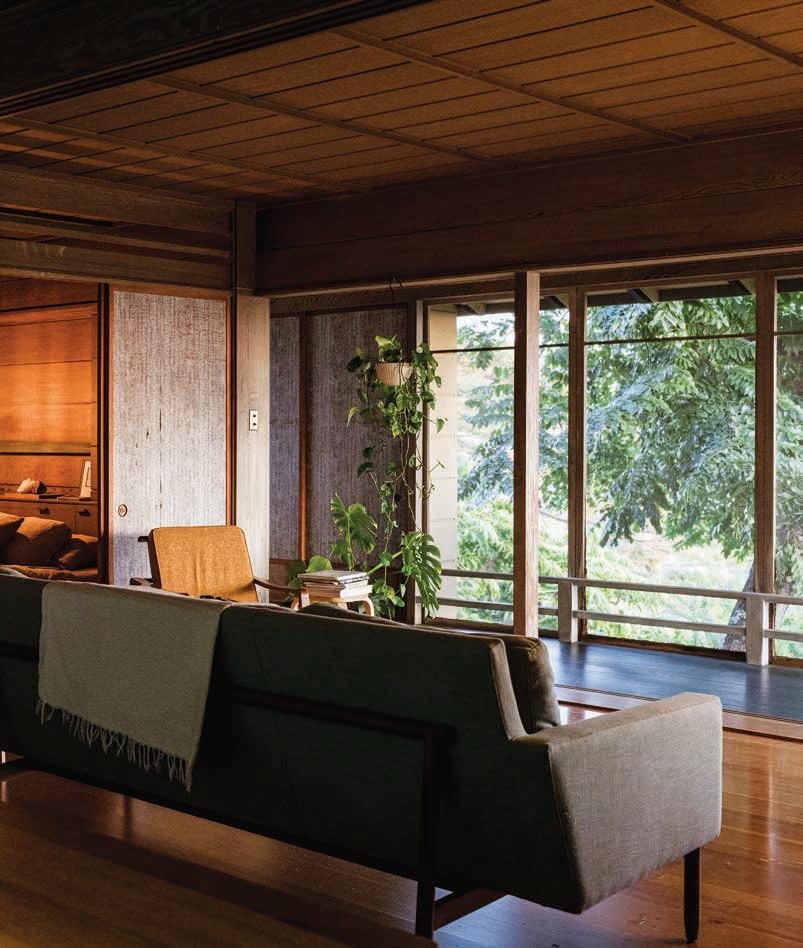

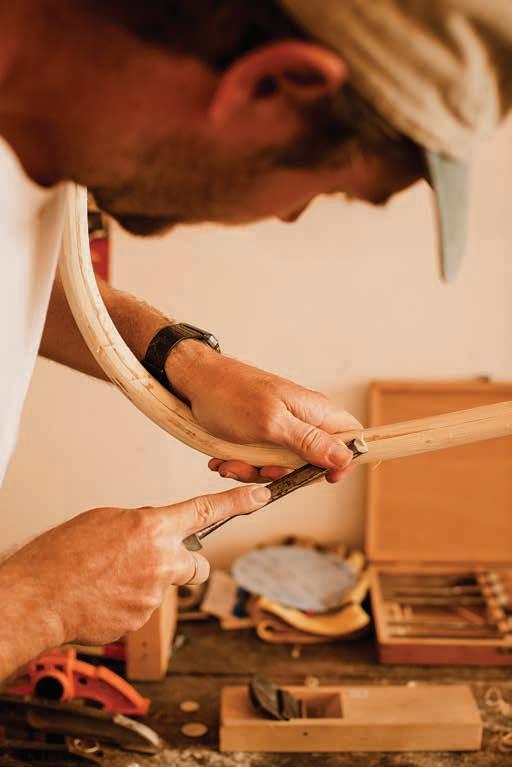
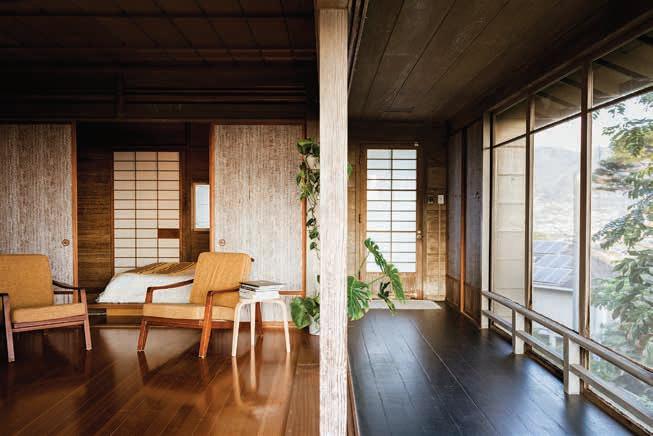
built out interiors for brands like Outdoor Voices and Everlane. In 2018, he returned to the Bay Area and started designing and building custom dining tables, bed frames, and desks, along with interior projects on his own, including a handsome, slatted wood bungalow and listening lounge for the tasting room at Juneshine, a hard kombucha company, in San Diego.
He and his partner, May, who grew up in Hilo, were debating whether to move back to Maui or Hawai‘i Island when they learned that their friends were moving out of the Johnson house, and it would soon be up for rent. And, so, Cunningham and May officially moved into this “house without walls,” as Graham Hart, the Honolulu architect and co-founder of Kokomo Studio, describes the dwelling. Hart says he has known the various tenants of the Johnson house for over a decade, and they’ve all been creatives: first his classmate in architecture school; next, a pair of designers; then, Cunningham and May, who is a creative producer for Instagram. “It seemed like too good of an opportunity to pass up,” says Cunningham.
While many modern and Japanesestyle homes were built during the postwar era, the Johnson house is a rare example of authentic Japanese architecture in Hawaiʻi built before 1939, according to Hart. Johnson and his partner, Thomas Perkins, who built his own home next door, came to Oʻahu in the mid-1930s at the behest of their contemporary, Vladimir Ossipoff. Hart says that the majority of Johnson & Perkins’ residential designs are larger iterations of the Johnson house: screenedin engawa decks, deep overhangs, and shoji panels to separate spaces. Johnson learned carpentry from local craftsmen originally from the Japanese archipelago. Cunningham supposes these craftsmen were responsible for the more unique details strewn throughout the house; for instance, the use of bamboo (which resemble ʻopihi stamps) as door handles on the shoji panels that separate the bedroom from the living room.
Despite the mist that sometimes drifts in from the screen-enclosed, engawa-style wraparound deck, the house is remarkably well-preserved. Cunningham attributes
A home like the Johnson house likely could not be replicated today given the rarity of redwood as a construction material and Hawai‘i’s strict modern building codes.
122 | FLUXHAWAII.COM
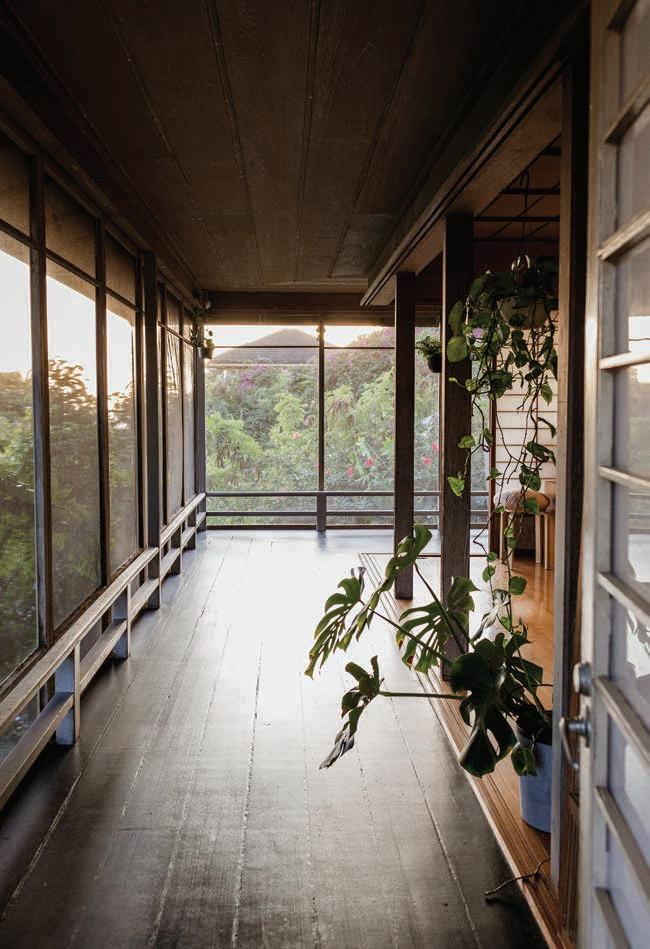
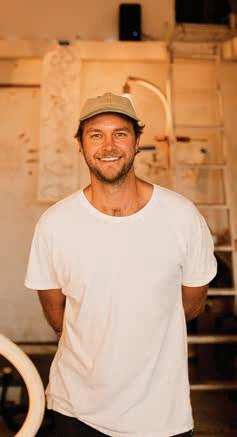
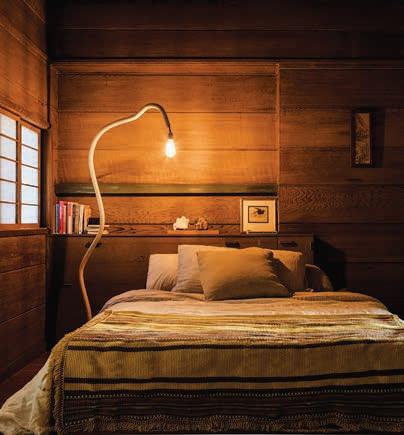
the Johnson house’s resilience, in part, to the woods used for its creation: redwood, mahogany, and Douglas fir. “Each brings their own sense of warmth and durability,” he says, the latter proven by remaining intact for 85 years. Ultimately, it’s the spirit and ethos of the house which endures, according to May, as a “living, breathing space that welcomes all life forms.” The generous rains and the howling winds that rip down and through Mānoa Valley to grace the home are a testament to this. “The geckos really own this house, honestly,” she says. “We are just visitors. You can’t be precious about everything in this house, you just be the best steward you can.”
HOW TO LIGHT YOUR LIVING SPACE
Here are some tried-and-true tricks of the trade that will enliven any room, according to Brennen Cunningham.
1. Think beyond overhead lighting. Many modern homes are over-reliant on central overhead lighting, but research
shows lighting like this has its drawbacks for sleep. Instead, arrange an assortment of lamps to create a warmer atmosphere.
2. Tuck lamps into corners to expand your space.
Lighting corners, or otherwise “dead” space, can bring dimension to a room.
3. Use a warmer bulb in your lamps to make a space feel more cozy and intimate.
Good Lamp’s light bulbs are 2,100 kelvin LEDs.
4. Balance indoor and outdoor light. For instance, when the sun is setting the lights can be weighted towards the side of the room the receives less natural light.
Cunningham gained his foundation in carpentry by spending summers building houses and furniture with his dad.
Learn more about Good Lamp Co. at good-lamp.co.
124 | FLUXHAWAII.COM
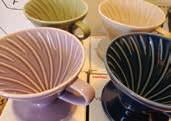
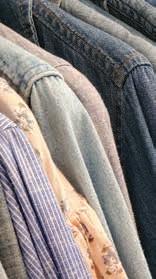
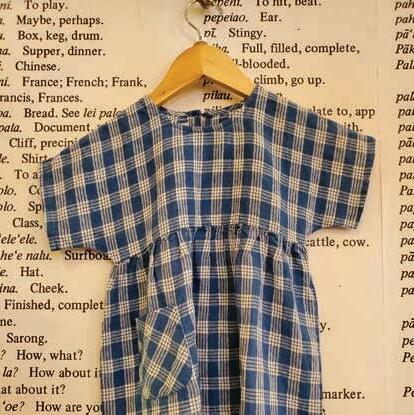
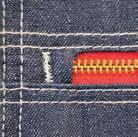
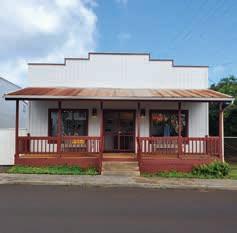
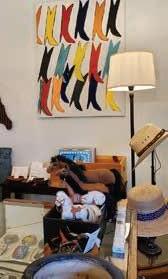
Horses Are Good Company A concept store selling paniolo and english tack, mu‘umu‘u, palaka, pāpale, bandanas, jeans, boots, antiques, jewelry, specialty sodas, new and used books, records, cassettes and garden supplies. 4427 Papalina Road, Kalaheo, HI 96741 Open every day except Tuesday and Wednesday 11:00 AM TO 6:00 PM 1 (808) 378-2116 horsesaregood.com
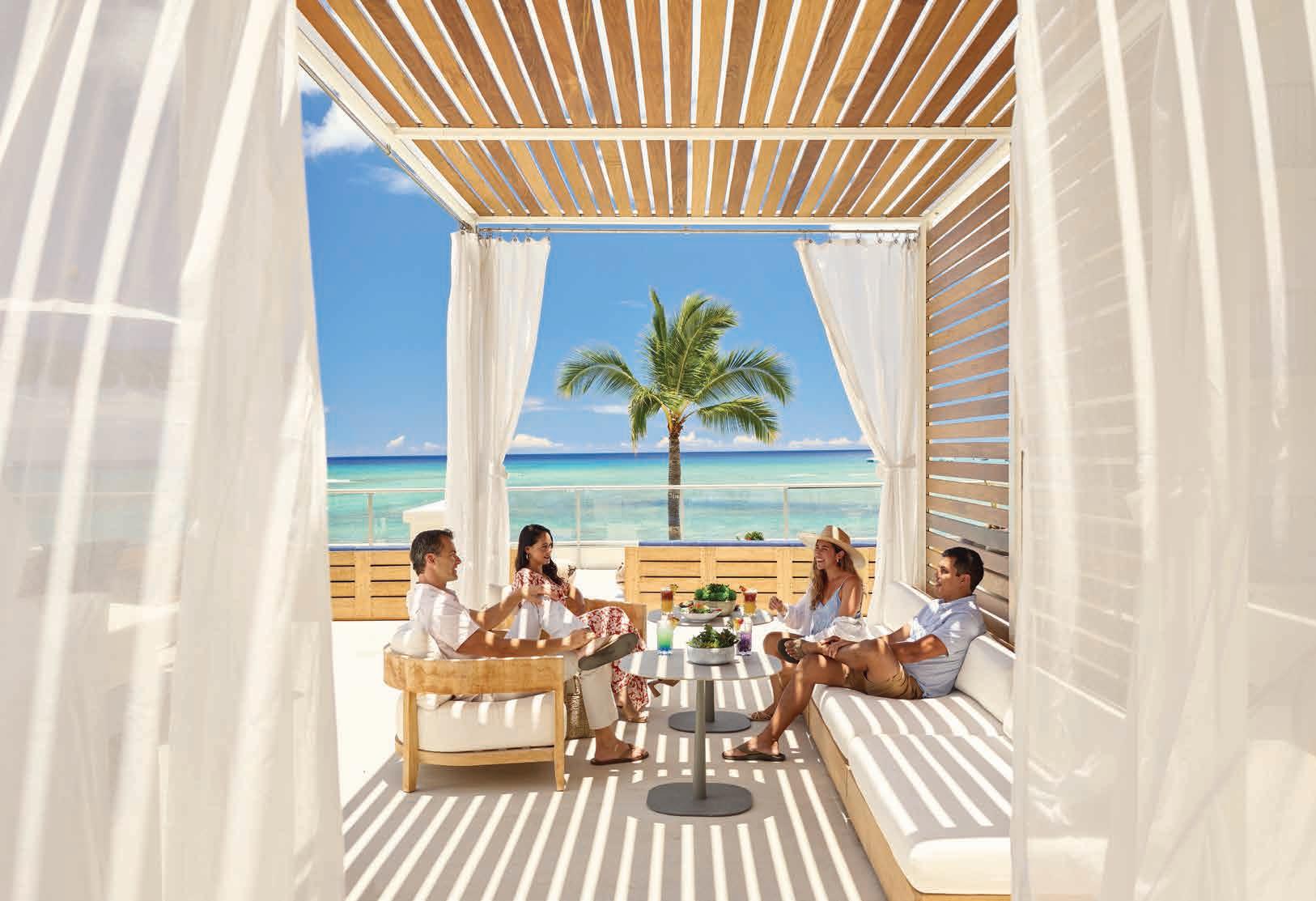

Come be here. Unforgettable happenings and unparalleled hospitality, on the world’s most iconic beaches. OUTRIGGER.com 21.2793° N, 157.8292° W
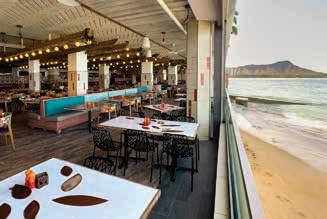
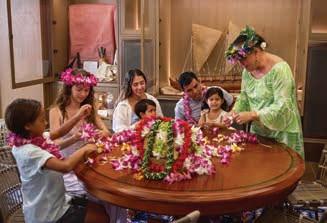




































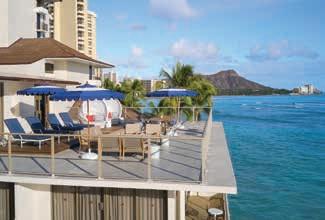
 Voyager 47
Club Lounge at Outrigger Reef Waikiki Beach Resort
Kani Ka Pila Grille
Coral Reef Penthouse
Monkey Pod
A‘o Cultural Center
Voyager 47
Club Lounge at Outrigger Reef Waikiki Beach Resort
Kani Ka Pila Grille
Coral Reef Penthouse
Monkey Pod
A‘o Cultural Center
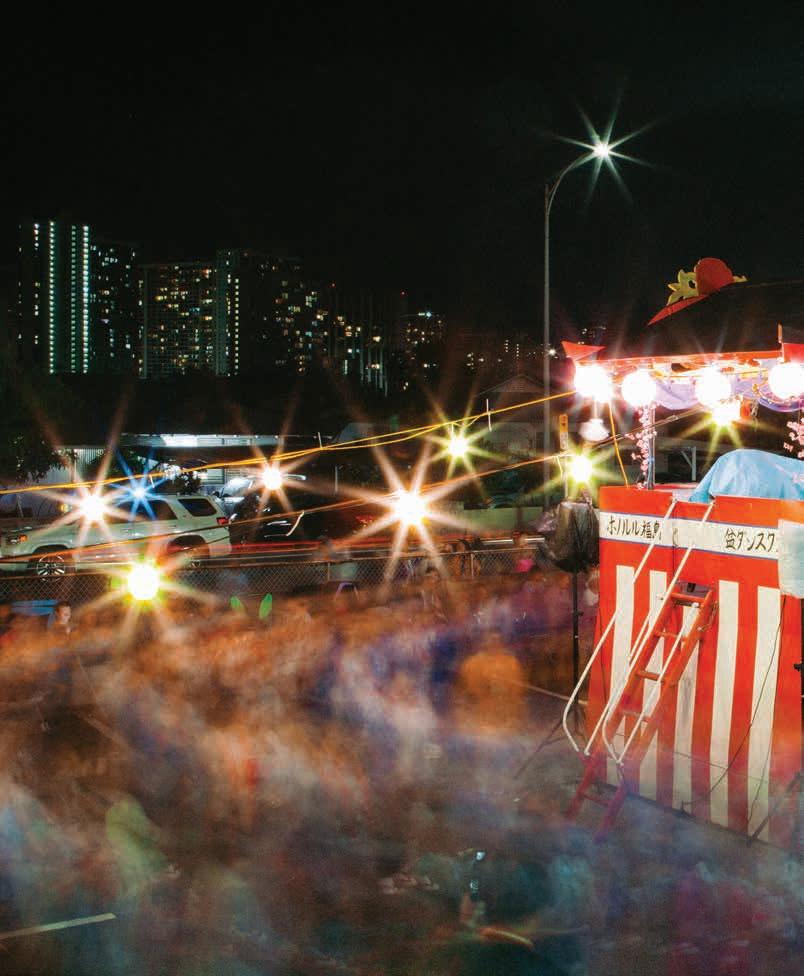 An evening bon dance in Honolulu. Image by Michelle Mishina.
An evening bon dance in Honolulu. Image by Michelle Mishina.
EXPLORE
“I need to see and be around nature at least once a day, or I kind of lose my mind.”—Emily
May Jampel
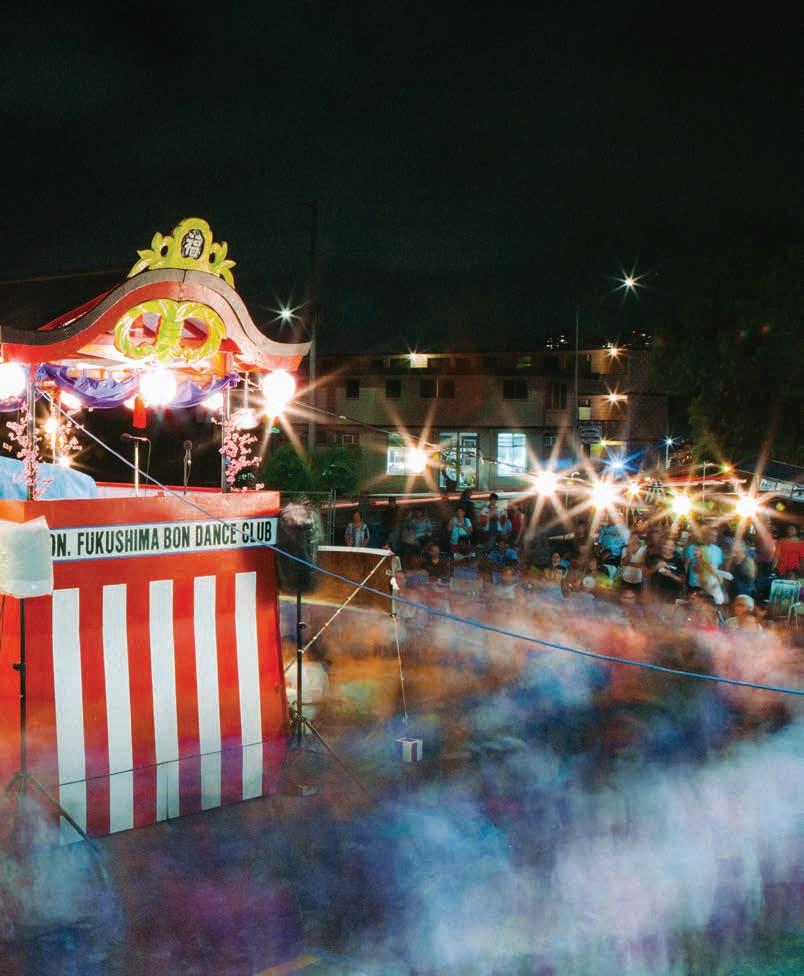
Any Given Day with Emily May Jampel
The Hawai‘i-raised filmmaker cleaves to public parks, indie bookstores, and art-house theaters to find slices of stillness and sanity in New York City.
TEXT BY MATTHEW DEKNEEF
IMAGES BY BRANDYN LIU
The filmmaker Emily May Jampel loves a good park. “Part of the reason I live in my questionably unhealthy-formy-life apartment is because it’s super close to one,” she says of Prospect Park, the urban green space that is home to Brooklyn’s only lake. For the Honolulu-born writerdirector, this proximity to nature is a necessary housing requirement that’s only grown in its urgency the longer she’s lived away from the islands. “In the past few years, especially as I’ve been going home more often I’ve learned that in order to literally survive in New York, I need to see and be around nature at least once a day,” she says, “or I kind of lose my mind.”
In 2022, Jampel released Lucky Fish, a short film that wades in the gentle waters of teenage angst, instant friendships, and sapphic desire, and has become a calling card for the emerging artist. Currently, she is working on a new short titled Mānoa Valley. She is also the recent recipient of the 2023 New Voices Filmmaker Grant from Netflix and NewFest, the largest LGBTQ film and media organization in New York. Jampel, 28, shares some of the daily routines she upholds to keep her creativity flowing in her adopted home.
MORNING SOLITUDE This is the only apartment I’ve ever lived alone in and it’s in a kinda suburban part of New York. I don’t host things, I really spend a lot of solo time here, which is part of my morning routine. Despite the chain-smoking from my landlord and that it’s an old place with an oven that has been broken since I moved in, it’s really a very quiet and very private space.

130 | FLUXHAWAII.COM
FLUX EXPLORE | NEW YORK CITY
|
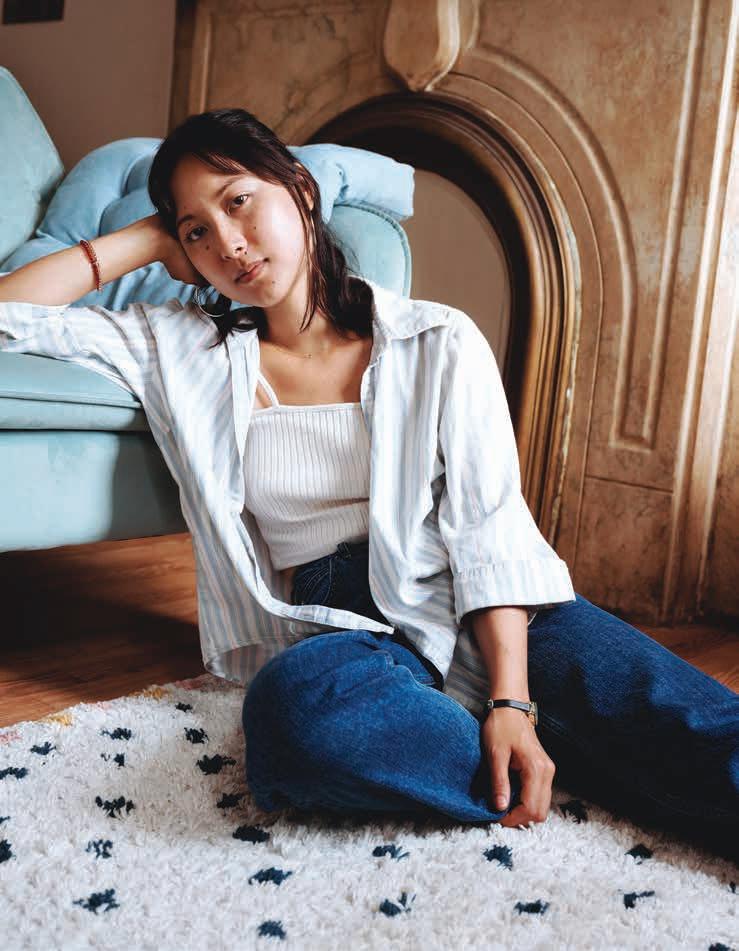
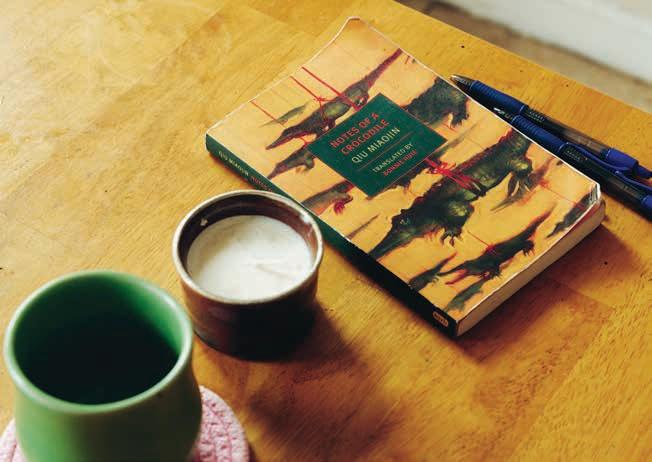
I start the day early. My body automatically wakes itself up at 6 or 7 a.m. Every morning, no matter what time I go sleep. I like having this period of two to three hours just totally for myself. That’s when I’ll make myself coffee, answer emails, try to get a little bit of writing done before people are awake and starting to text me. I think I’m someone who needs a lot of alone time generally, especially for creativity and ideas. I need a lot of time to really do mental deep dives. I’m not great at being so structured or disciplined with creating work. I try to leave pockets of time and space to just mull over ideas. When I live with other people, it’s very fun, but my brain is always occupied by the day-today, and I feel that the way I come up with ideas and the speed at which my ideas come together coherently, it happens quite slowly and more organically.
FILTERING THE SILENCE I almost nonstop have something playing as background noise. In order for me to be productive
I feel like there needs to be this perfect balance between just enough noise, but not too much noise so that it’s distracting. But if it’s too silent and sterile, I almost get really antsy and I feel like there needs to be something going on. So it’s either music from the same three Spotify playlists I rotate or a podcast that I have going. I like the music to be very low key. I listen to Marc Maron’s podcast quite religiously. I find that when you listen to certain podcasts, if someone has a very familiar voice, it’s kind of comforting.
SURVIVAL ZONE I’m obsessed with Prospect Park. It’s is this huge park in Brooklyn that actually feels like one. Central Park is obviously huge too, but feels more man-made. I’ve never been the most outdoors-y or athletic person, but I just need that, even if it’s very brief. If you walk 15 minutes through Prospect Park, you can take a trail and not be able to see evidence of the city. There’s a lake there that I love sitting by to read or take naps.
Emily May Jampel is a filmmaker from O‘ahu based in New York City. She tends to start her days early at home, then meander around Prospect Park by noon.
132 | FLUXHAWAII.COM
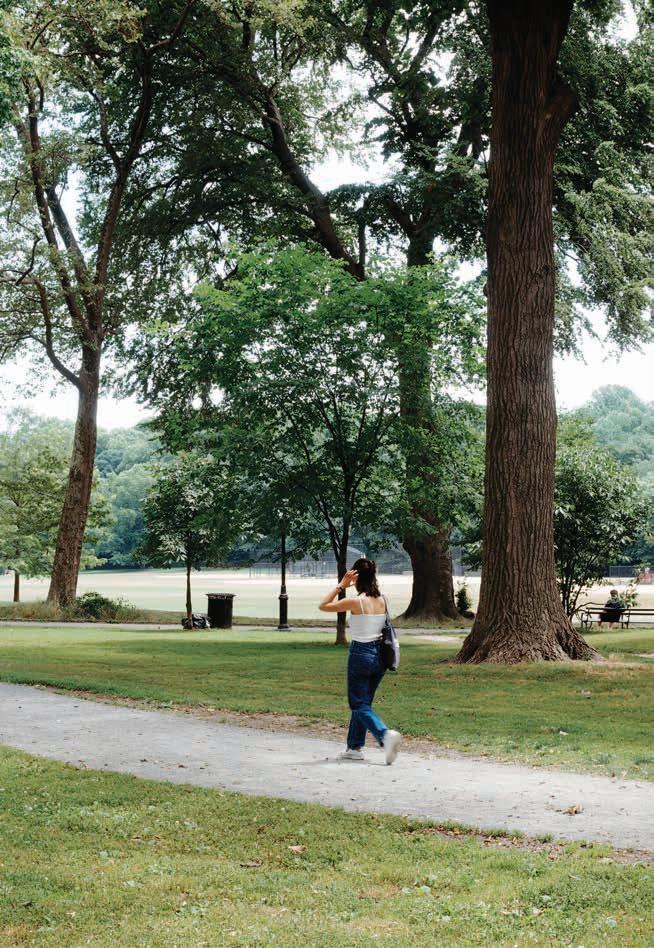
I love it so much. It’s just a park, but I feel like it’s been a big part of maintaining my sanity in the city.
GETTING UNSTUCK If I have a stretch of 30 minutes in the morning, I’ll always get coffee and do a quick stroll, or at the end of the day, do a quick decompression loop around Prospect Park, riding the bike lanes. I’m not even that good at biking, it’s kind of embarrassing how unathletic I am. But riding the e-bikes is not really exercise or exhausting at all, it’s more just gliding and relaxing. I get so many ideas or able to process things while biking around and listening to music. When I was working on my short film that we shot in Hawaiʻi, I got so much writer’s block and stuck so many times, so I would just listen to the playlist I made for the movie and bike around Prospect Park. So many of my script problems were solved on a bike.
COMFORT FOOD Acre is this really cute Japanese cafe in Greenpoint. I almost always have their miso salmon bento and a barley tea. I’m not normally a sandwich person, but their egg salad sandwich on a brioche bun is incredible. I don’t eat a lot of Japanese food in the city because I feel like most of it is either really bad and not Hawaiʻi standards, where we have pretty good Japanese food, so maybe I’m a little bit of a snob there. Or you have to pay
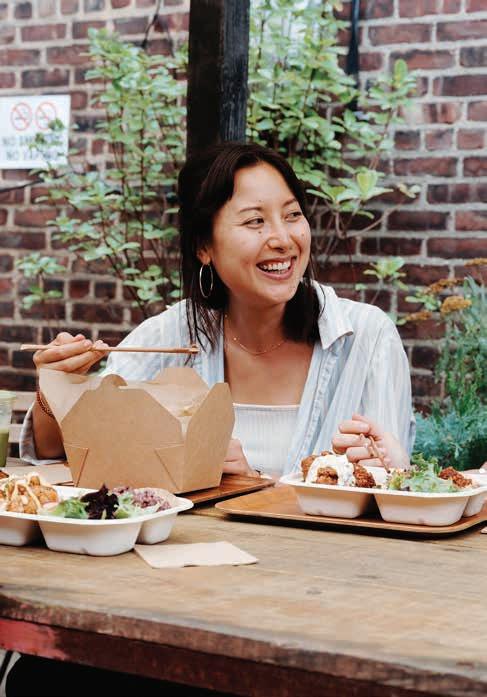
a lot for what is just okay. Acre is a solid lunch spot though. It kind of feels like a small cafeteria designed by Muji. My dad grew up in Tokyo, and when he moved back there for work I would go visit him, and it does remind me of a spot
that could be in that city. I like doing lunch meetings or coffee with friends there. There’s a lot of space and a backyard area where young, cool, Greenpoint creatives seem to frequent, but also a place for families also. The menu is super good and
Places of community and discovery fare well for Jampel’s practice. Above, at Acre, a chic venue for lunch meetings. On Dashwood Books, right, she says, “I always stumble upon new things there.”
134 | FLUXHAWAII.COM
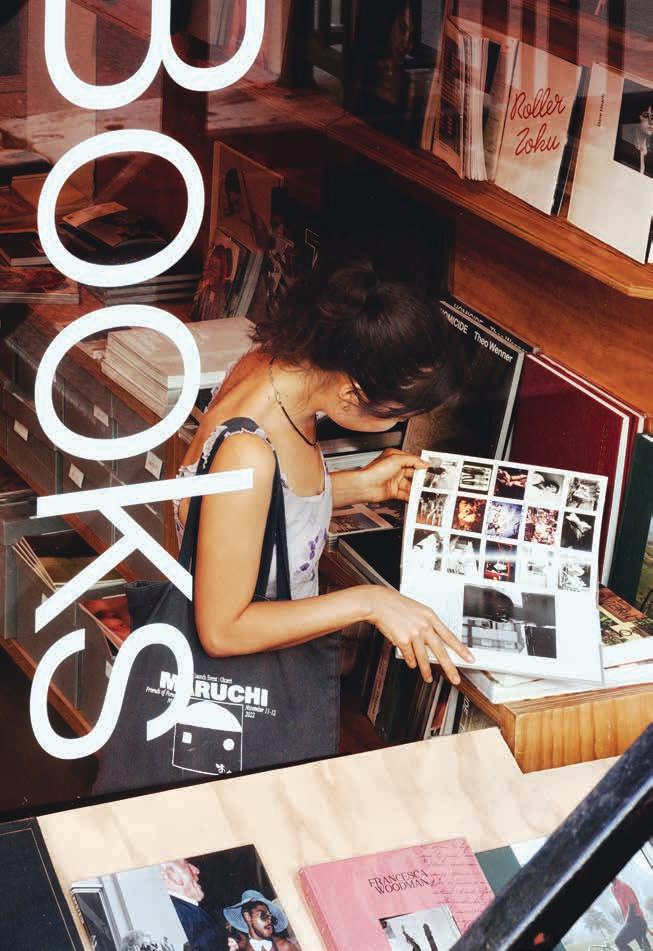
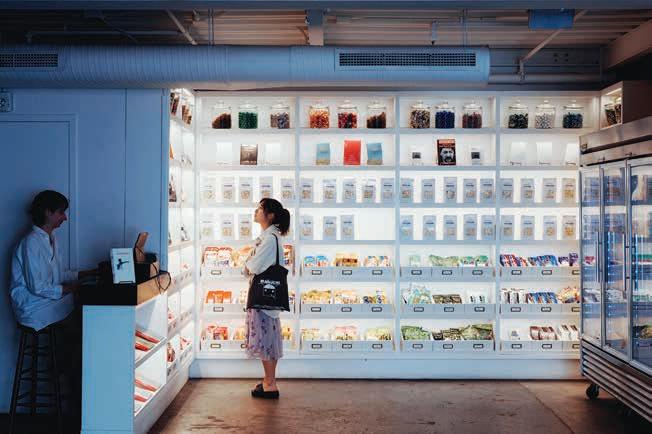 Metrograph
Metrograph
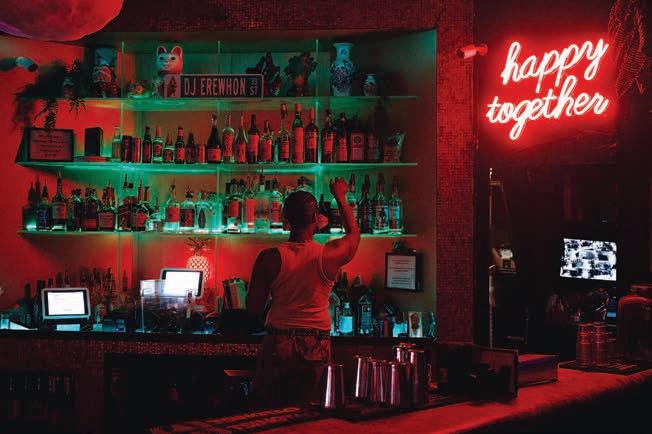 Mood Ring
Mood Ring
not crazy expensive. The way they make the food is very calming too.
SPONTANEITY & INSPIRATION I love looking at physical photo books. Dashwood Books is an independent bookstore and they specialize primarily in art and photography books. They even have a little shelf inside with tiny, little handmade zines that you can just sift through. The manager is there all the time and I always overhear her finding obscure titles for longtime customers. I always stumble upon new things there, which I feel like doesn’t happen very often since the way most people find photography now is through Instagram where things kind of look the same. It’s the same way with how I discover new music through Spotify, it’s giving me the same versions of stuff I already listen to. So, it feels nice to visit a place and discover work in a more spontaneous way without an algorithm. The most recent photo book I happened upon there was by Lin Zhipeng. I know people describe having a similar childhood experience with record stores. I’ve never had that, but I feel like this feels very special in that way.
NOW PLAYING Metrograph is my favorite art-house theater in the whole city. It’s been very influential to me. Their box office was my first paid job after I graduated from NYU. I worked there for a summer, checking people out and selling tickets. As employees, we got to see whatever we wanted for free and got a lot of my film education there, just watching stuff constantly. So many formative screenings, and years before I even began working in film or thought I wanted to be a filmmaker. I remember they had an Ozu series and seeing every single Ozu back to back on a big screen, Belle de Jour, Robert Altman’s Three Women
They have the best programming, both in terms of newer films and arthouse classics. Other venues are usually very American and European heavy, but I like that they have a lot of really cool, older Asian films, too. Their curation is incredible and super international. A lot of the stuff I go to are because they are movies I’ve already seen, but never in a theater. They’ll have prints so you can
see the film on 35mm. Recently, I saw Blue Valentine and Lost in Translation there. Every Christmas, they screen Carol, which is so beautifully shot and one of my favorites, on 35, or Mildred Pierce on Mother’s Day. Those are films so many people have seen, but they feel like completely different movies because you’re seeing it on a print in a theater with an audience, the way it felt like when it first came out. Overall, my moviegoing is pretty chaotic and impulsive. I’ll also just walk into screenings for things I’ve never heard of because I trust their programming and I’ve never been disappointed. The most recent I randomly walked into that I had never heard of was a movie called Made in Hong Kong directed by Fruit Chan and it was incredible.
NIGHTCAP One of my favorite bars in the city is a really awesome astrology-themed, queer bar called Mood Ring. They have screenings and comedy nights and DJ sets. It’s a trendy Bushwick spot, but it’s also incredibly sincere. The owners, Vanessa Li and Bowen Goh, are also friends of mine and really lovely people. I have a lot of room in my heart for it because it opened up right around the time I graduated from college, so I got to see it start fresh and grow, shift, and change in so many ways over time while living here. I also had my Lucky Fish release party there, which was so fun. It’s just good vibes.
EMILY’S GUIDE TO NYC
Acre
64 Meserole Ave., Brooklyn, acrenyc.com.
Dashwood Books
33 Bond St., New York, dashwoodbooks.com.
Metrograph
7 Ludlow St., New York, metrograph.com.
Mood Ring
1260 Myrtle Ave., Brooklyn, moodringnyc. club.
Prospect Park Brooklyn, prospectpark.org.
“I need time to do mental deep dives. I’m not great at being so structured or disciplined with creating work. I try to leave pockets of time and space to just mull over ideas.”
Jampel is one of the 2023 Recipients of The New Voices Filmmaker Grant, a new initiative from NewFest in partnership with Netflix. Learn more at emilymayjampel.com.
138 | FLUXHAWAII.COM
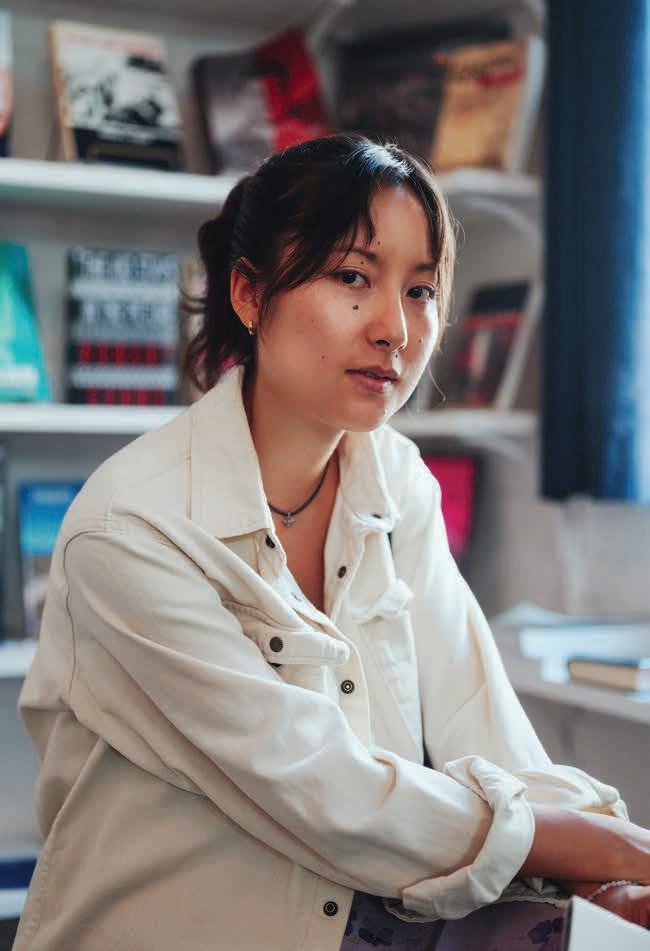
Fragments from a Bon Dance
In gatherings of community, bon dances celebrate Japanese heritage and pass on ancestral traditions.
TEXT BY RAE SOJOT
IMAGES BY MICHELLE MISHINA
Growing up, my best friend Stephanie, like many local Japanese kids in Hawaiʻi, spent afternoons at the local Hongwanji, where she learned Japanese language and culture. She did so at the behest of her issei grandmother, who wished her granddaughter to cultivate ties to the homeland, a place Steph had in fact never been to, but of which her grandmother held in great reverence. Steph bore the
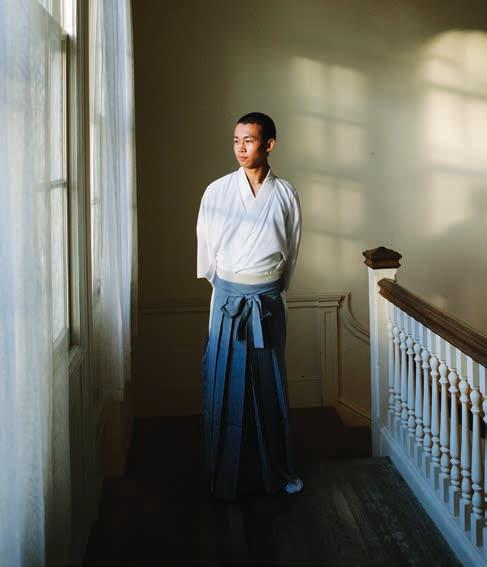
burden of such cultural duty with mild reluctance; I tagged along because she was my best friend.
Our sensei were stern, old ladies who shuffled about in yukata, administering lessons on hiragana and the proper way to hold a fan. They clucked their tongues in disapproval when we goofed around. They awarded good behavior with satisfied nods and senbei. But the best days always arrived with summer. At that time, even the strictest sensei loosened up in cheerful anticipation of Bon dance season.
Now, decades later, I still feel the familiar, summertime thrill when seeing paper lanterns strung in temple courtyards and banners hung along fences announcing obon dates. Despite its somber significance of honoring the dead, bon dances remain perennially festive gatherings with an open invite to all.
With the pandemic’s tight grip on the world finally loosened and social restrictions lifted, bon dances in Hawaiʻi have made a triumphant return this summer, welcoming crowds hungry for connection. Woven within the evening’s excitement of dancing, food and fellowship is a subtle, renewed understanding of the importance of community here in the islands. It feels like a homecoming, and it feels good.
140 | FLUXHAWAII.COM
FLUX EXPLORE | HONOLULU |
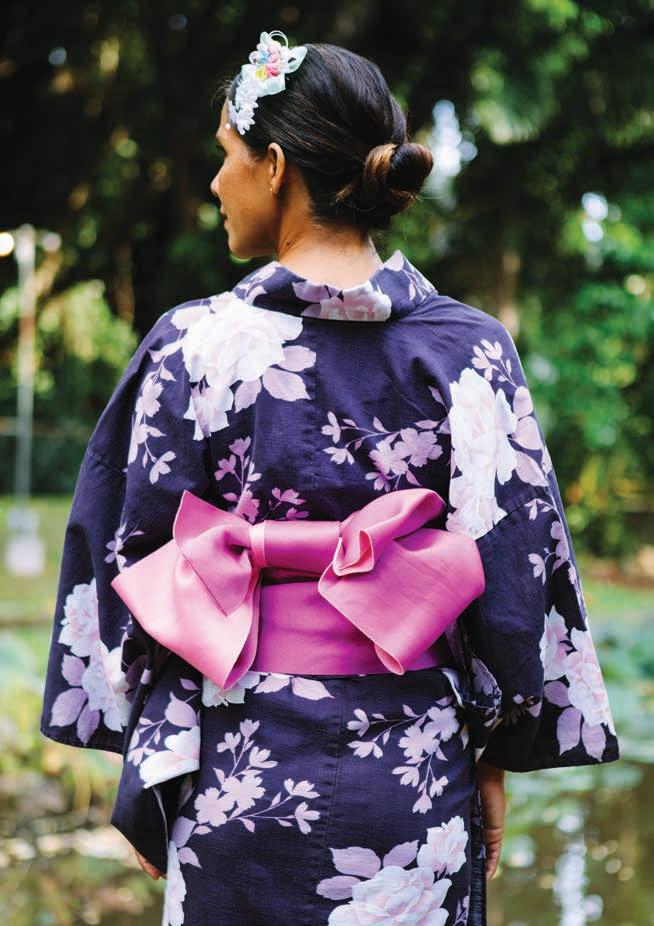
141
I.
With its gardens awash in twilight, the grounds of Nichiren Mission of Hawaiʻi resemble a delicate Japanese watercolor. Narrow stone paths wind around hillocks and lichen-mottled boulders. Series of tōrō stand sentry and illuminate grassy areas. Girls, clad in kimono, walk with hushed steps to a small pond framed by water lilies and cyperus plants.
II.
In the late 19th century, Hawaiʻi’s agricultural economy was booming. The first influx of Japanese immigrants arrived to work on the sugar plantations. They brought with them cherished cultural traditions, including Obon, the Japanese Buddhist custom of honoring the dead. During Obon, families pay respect to their ancestors by making offerings to family shrines and visiting local temples. It is believed the first Bon dances in Hawaiʻi were held in sugarcane fields and plantation villages.
Throughout summer, thousands turn out for Bon dance happenings.
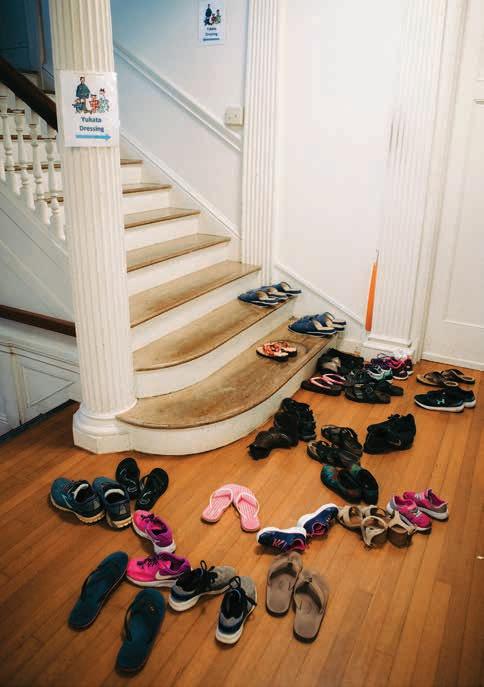
142 | FLUXHAWAII.COM
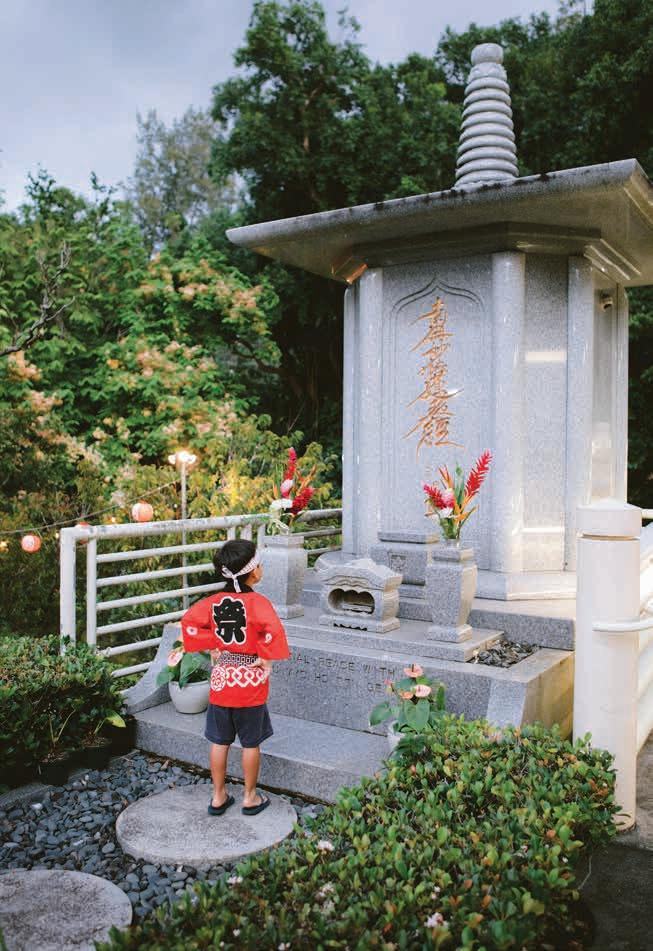
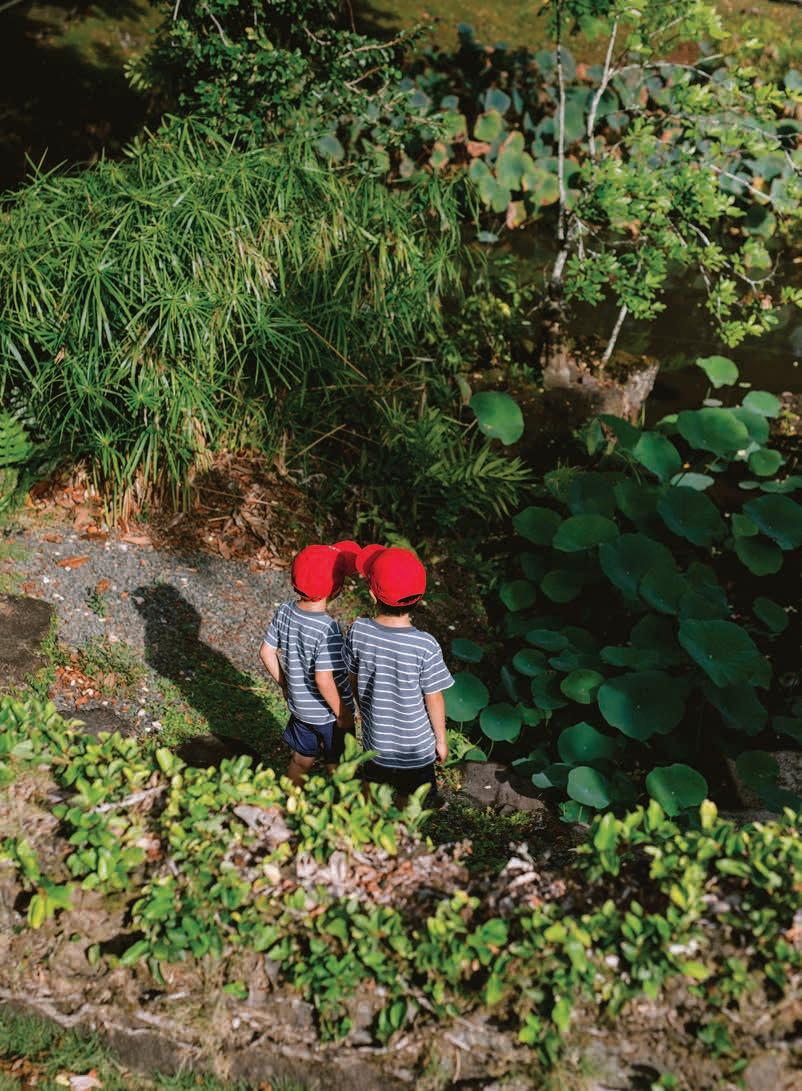
III.
Today Hawai‘i’s Bon dances serve as cheerful reunions of sorts — yearly communions of family and friends and culture. Despite the underlying sense of solemn tradition, the Bon dance atmosphere is fun and festive. Neighbors gather together to talk story. Friendly obachan chuckle as they help adjust each other’s obi. Young children dash off to try their luck with kingyo sukui, the traditional game of scooping goldfish. While many families of Japanese heritage are present to pay homage to their roots, the event is welcoming to all.
IV.
Strands of chochin radiate from the yagura, adding a warm glow to the gathering crowd at Nichiren Mission of Hawaiʻi. The bamboo lanterns, reminders to seek the light, also help welcome home ancestral spirits during Obon.
V.
As traditional dance songs play over the loudspeaker — sometimes with live drum
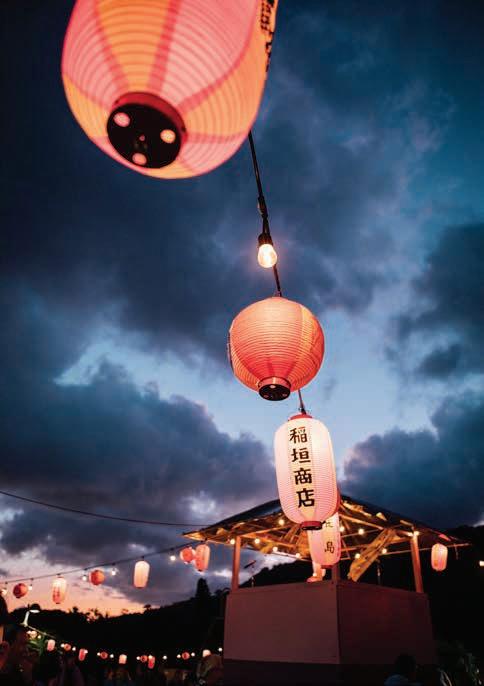
145
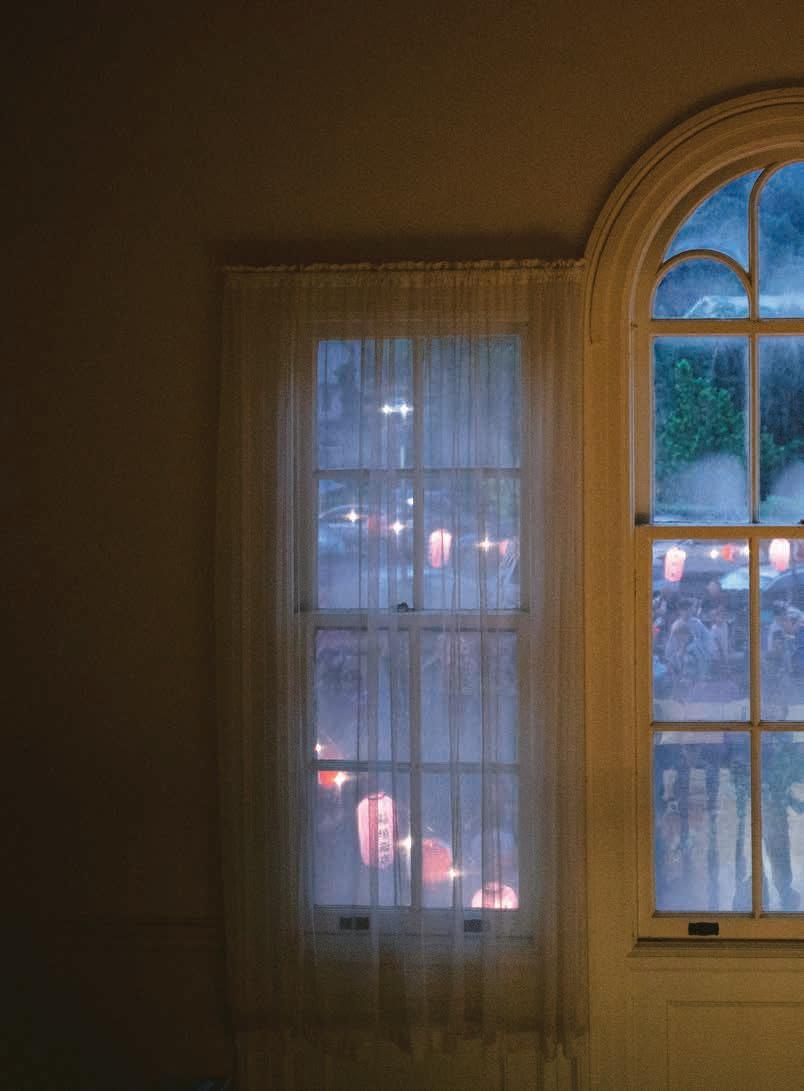
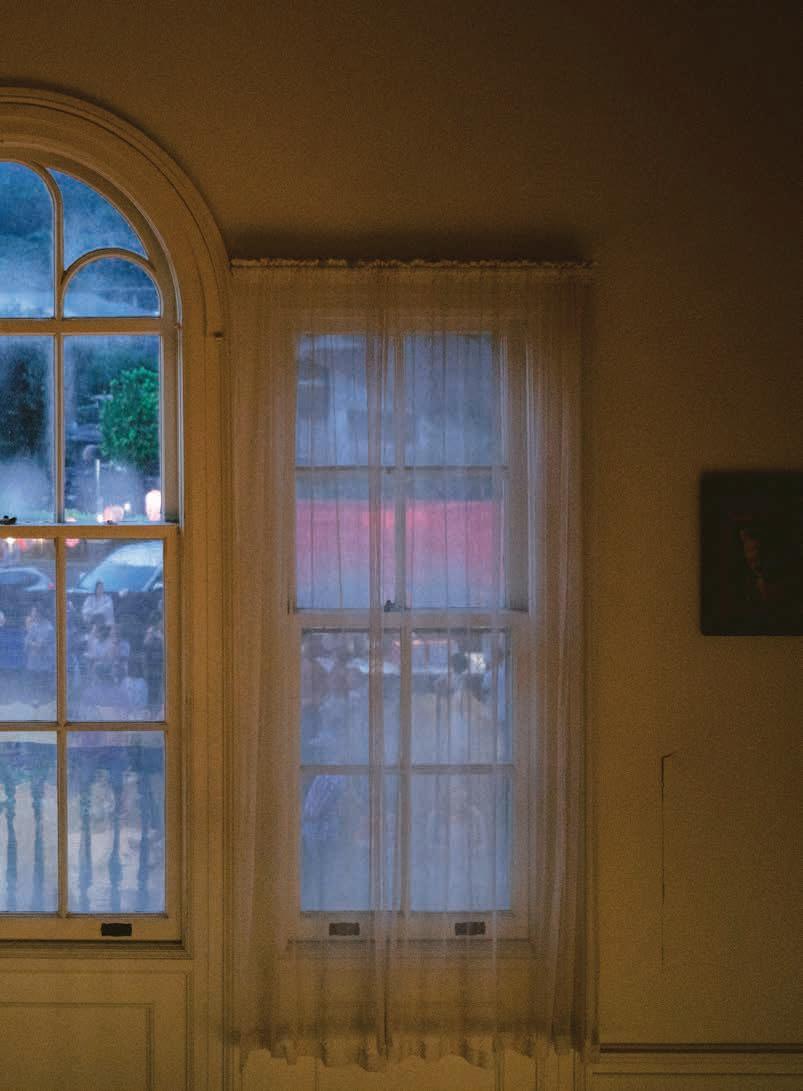
accompaniment — dancers move in step to the music and gracefully clasp their palms, nod, then bow to the lilting sounds of the shakuhatchi, a bamboo flute, and shamisen, a three-stringed instrument. In Japan, Bon Odori music leans toward traditional song, but in Hawaiʻi, the playlist also includes more pop variations, to the crowd’s delight.
VI.
In the mission hall’s foyer, racks of colorful yukata and happi, casual kimonos and straight-sleeved coats, are available to those eager to embrace traditional attire. Typically made of cotton and worn especially during warmer months, a yukata is different from its silk kimono counterpart, but the array of designs and colors in which it is made is equally beautiful. Chrysanthemums, cherry blossoms, and cranes abound, as well as family crests. Hawaiʻi Bon dance dress codes are more casual than ceremonial,
Bon dances serve as cheerful reunions, yearly communions of family, friends, and culture.
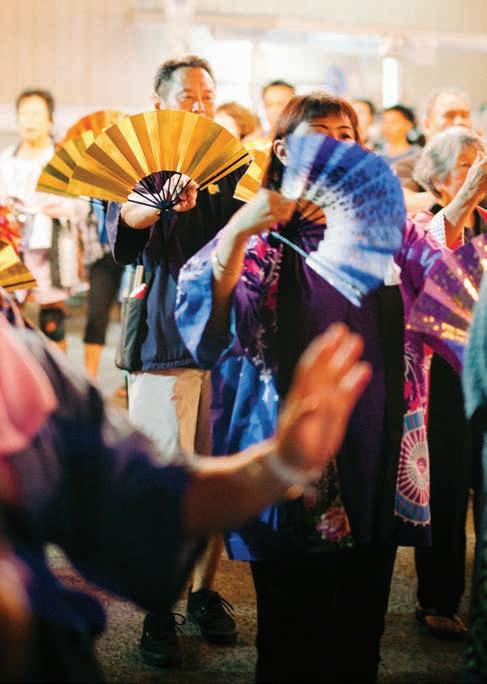
148 | FLUXHAWAII.COM
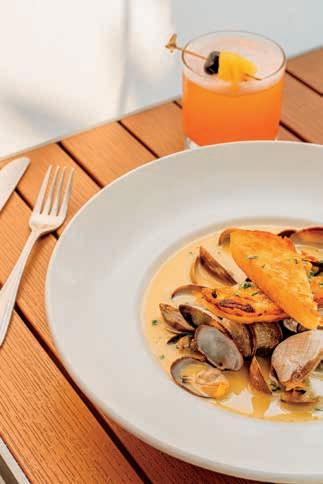
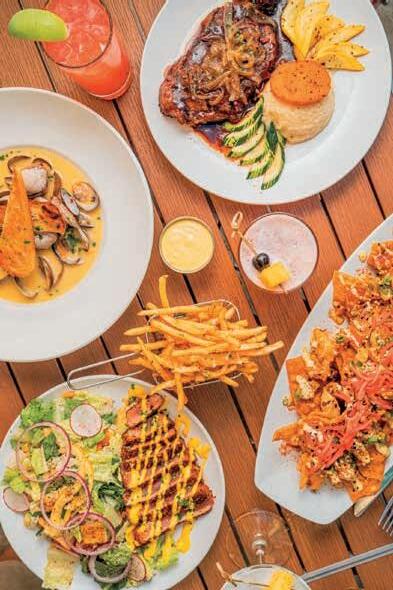
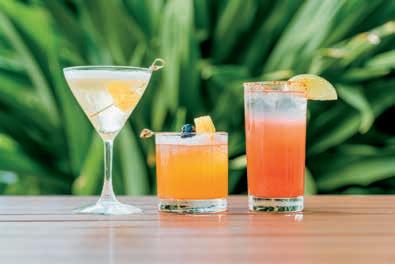
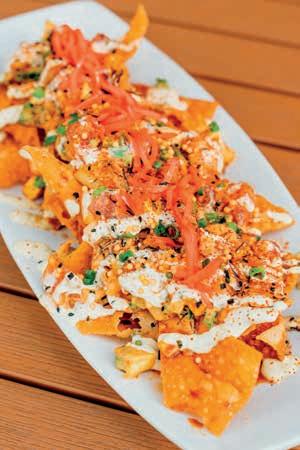

favorite
kalapawaimarket.com 306 S Kalaheo Ave, Kailua, HI 96734 (808) 262-4359 kailua beach KAILUA TOWN 750 Kailua Road, Kailua, HI 96734 (808) 262-3354 41-865 Kalanianaole Hwy Waimanalo, HI 96795 (808) 784-0303
711 Kamokila Blvd #105, Kapolei, HI 96707 (808) 674-1700 KAPOLEI Our food is designed to fuel every local lifestyle Our classic favorites are inspired by home cooked meals, backyard BBQs & beachside picnics, because we know how Hawaii loves to eat.
your
stop in the neighborhood
WAIMANALO
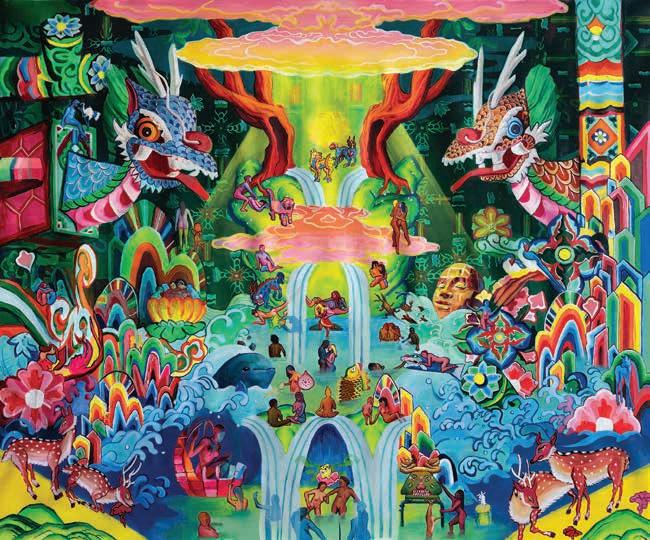
more relaxed than reserved. Slippers and shorts are common fare.
VII.
The smoky aroma of grilled miso cuttlefish sticks rises from a vendor booth. Nearby, andagi sizzle in pans of oil, the fried dough’s sweet popularity evidenced by a long line trailing into the crowd. Though dancing is a big draw for these events held throughout the summer, so are the foods. People indulge in local favorites like musubi, yaki soba, and butter mochi.
VIII.
A few miles away, in a neighborhood near Waikīkī, a bright summer moon hangs over the Kapahulu Honolulu Fukushima Bon Dance. Chairs surround the yagura, offering their occupants — parents holding sleepy toddlers in their laps, grandparents looking content and nostalgic — ample views of the sea of dancers. It’s a special night for all, and for the ancestors, too, smiling down upon them.
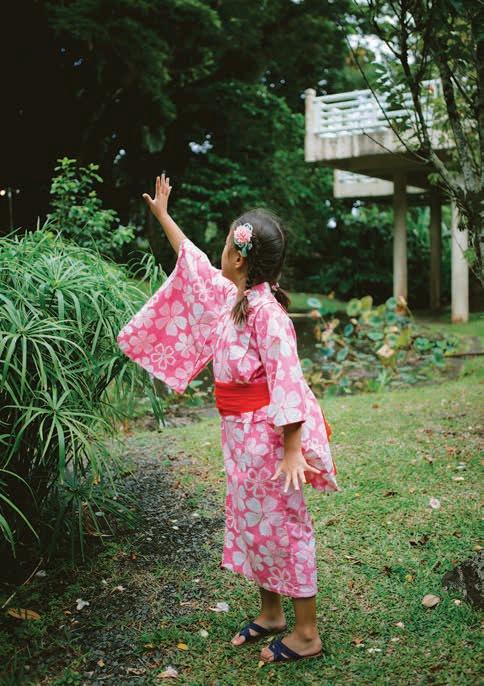
151
Holding the Reins
In old Hawai‘i, spirited horsewomen known as pāʻū riders captured the popular imagination.
TEXT BY EUNICA ESCALANTE
IMAGES COURTESY OF THE HAWAI‘I STATE ARCHIVES
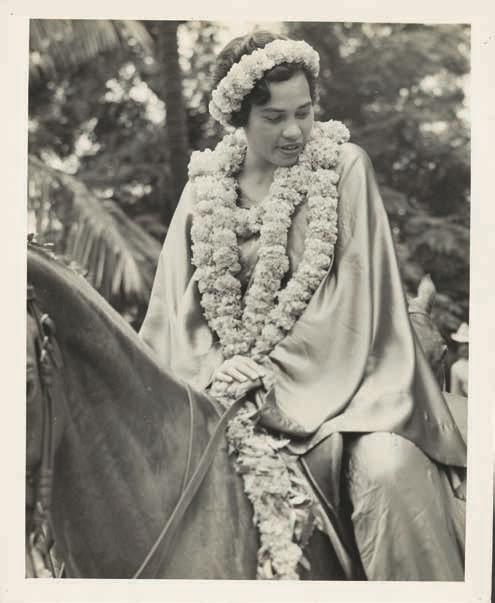
First came the beating of horse hooves. The cacophony of half a dozen steeds at full gallop reverberated over the thrum of newly arrived steam ships and crowds of disembarking tourists and harbor merchants hawking their wares. Then, a whirwind of color: silks in scarlet, orange, and white bedecked the riders, as if they were set ablaze in the midday sun.
The riders were congregated in downtown Honolulu for steamer day, when steam ships docked at Honolulu harbor to let off their passengers. Spectated by throngs of visitors and locals alike, their calvacade charged through the city’s uneven avenues, racing one another at two or even three riders abreast. Their long riding skirts billowed behind them, whipping in the wind with their unbound hair and garlands of fresh lei.
During that time, horsemanship was considered the sole dominion of men. There were the American cowboys and their vaquero predecessors. There were the rodeomen, the ranch hands. In Hawai‘i, the term paniolo conjured images of commanding men atop their steeds. And yet, none of the riders racing that day were men.
Pā‘ū riders were common in the late 1800s.
152 | FLUXHAWAII.COM EXPLORE | HISTORY |
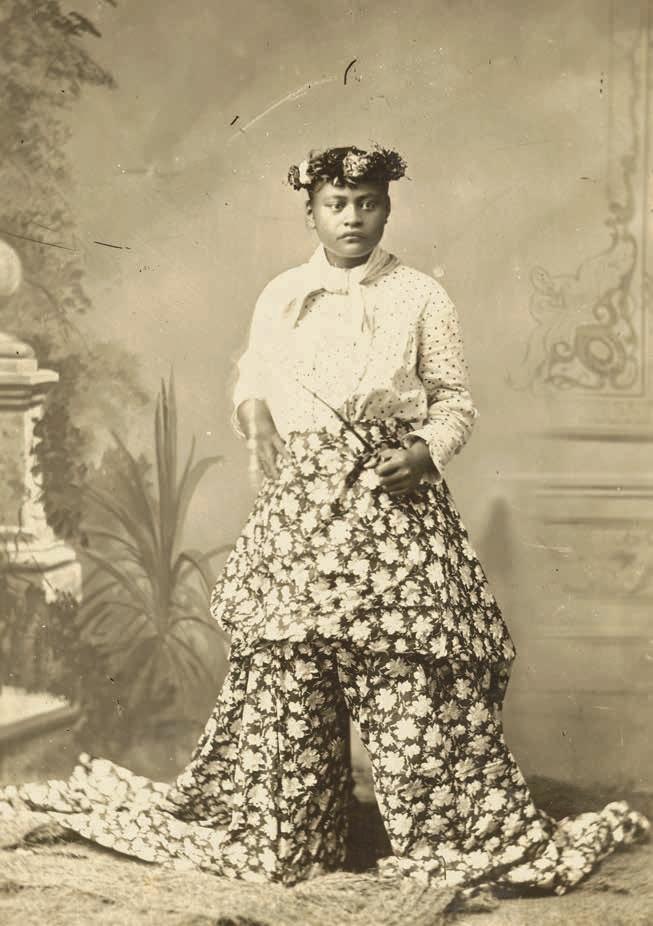
153
They were pāʻū riders, named after the unique riding skirts that became their trademark. They came to prominence in the 19th century, after the introduction of horses to Hawai‘i in 1803 made horseback riding the islands’ primary mode of transportation.
It wasn’t just their penchant for street races that made Hawai‘i’s female riders distinct from their European and American counterparts. They eschewed the sidesaddle, a Western method of riding meant to keep women modest, but which only succeeded in making the act more cumbersome. Instead, they rode astride. “The European style of riding sidesaddle did not appeal to the Hawaiian women, who felt this method too unstable when riding over the islands’ rough terrain,” wrote Virginia Cowan Smith and Bonnie Domrose Stone in their 1995 book, Aloha Cowboy.
With this riding style came a quandry, however. The popular dress of the day, with its full, floor-length skirts, made riding astride uncomfortable; women’s trousers weren’t socially acceptable until the late 1800s. Enter the pāʻū skirt. Up to 25 yards of fabric were wrapped and folded to form a flowing, culotte-style garment acted as a riding habit, fastened atop the outfit — often times a holokū — to protect it from the dust, sweat, and rain while on horseback and taken off upon arrival at the social function.
At first, the pāʻū was simple, the fabric choices modest. They were manufactured from tapa, a material made from the inner bark of paper mulberry trees, soaked in kamani oil to render it waterproof. Later, imported fabrics like cotton, calico, and gingham were favored for their sturdiness. The skirt was treated much like how we use raincoats today, a garment of pure practicality.
That changed as horses became more accessible and riding them became a form of leisurely recreation. Riding parties, groups of men and women on horseback touring through the countryside, were popularized by Hawai‘i’s monarchy. There was the Hui Holo Lio a Lili‘uokalani, led by Queen Lili‘uokalani when she was still a princess, and Prince Jonah Kuhiō Kalaniana‘ole’s beloved riding club, immortalized in mele. On these hours-long excursions, the pāʻū was more than a shield protecting the outfit underneath. The pāʻū was the outfit.
Simple fabrics gave way to the ornate. Yards of satin and silk in striking colors were folded in various styles, bustles and pleats fastened into place with kukui nuts by expert pāʻū drapers. “That must have been such a beautiful sight to see all the different printed pāʻū and the leis they made to show off,” says Kimo Alama Keaulana, a modern-day pāʻū draper.
By the late 1800s, the pāʻū rider was a common sight in both town and country. For Western observers, she may have signified liberation — an eschewing of patriarchal customs, an act of revolt not unlike that of Lady Godiva.
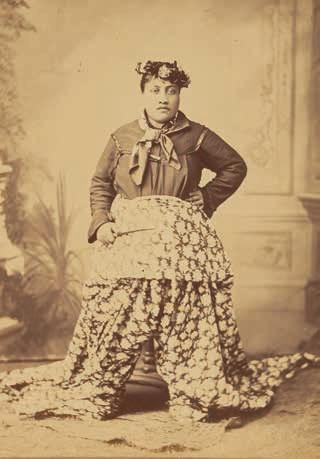
Pā‘ū riding is a testament to Hawaiian splendor and style with fabrics ranging from simple to flamboyant. Today’s parades are a meaningful endeavor for modern riders, carrying the same gravitas as prestigious hula events.
Here was a woman, untethered to a man, riding free in the streets.
In reality, Keaulana says, pāʻū riders were not resisting anything. They were simply Hawai‘i women enjoying themselves. “We never had a damsel in distress in Hawai‘i,” Keaulana says. “Women in Hawai‘i held a lot of power — more freedom than their American or European counterparts. If a woman in old Hawai‘i wanted to put on her pāʻū and gallop, she would just tell her husband and that would be the end of the discussion.”
But the age of the pāʻū rider soon came to an end. At the turn of the 20th century, motorized transportation took over Hawai‘i’s roads. Horseback riding through Honolulu’s streets was outlawed to keep them clear for cars and trams. “The Pāʻū Skirt — R.I.P.,” declared a headline in the Paradise of the Pacific.
Pāʻū riders would have quickly become a relic of old Hawai‘i if not for the parades. In 1905, a socialite by the name of Lizzie Pauahi organized a group of 40 horsewomen
154 | FLUXHAWAII.COM
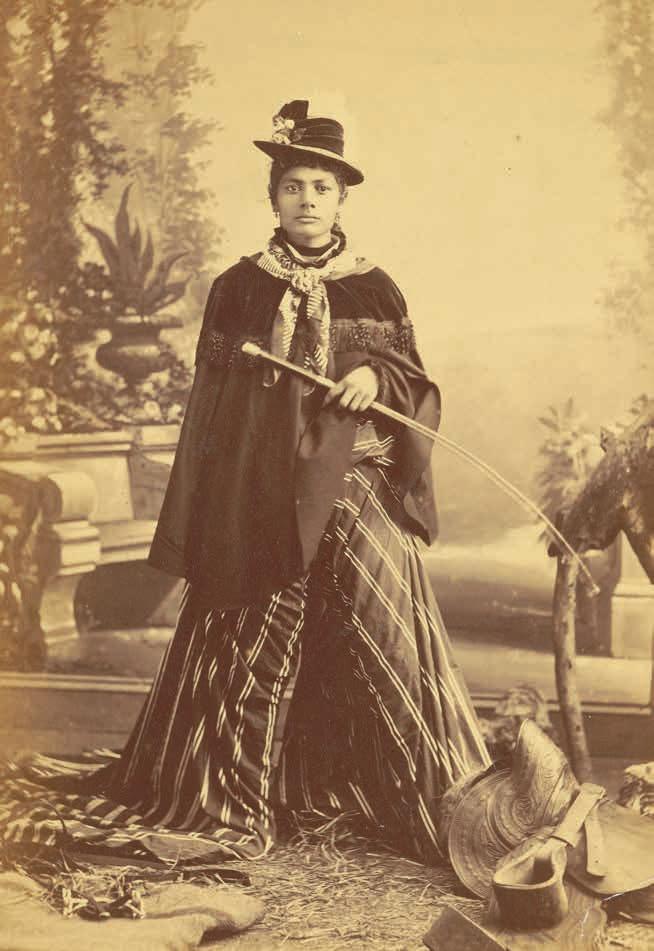
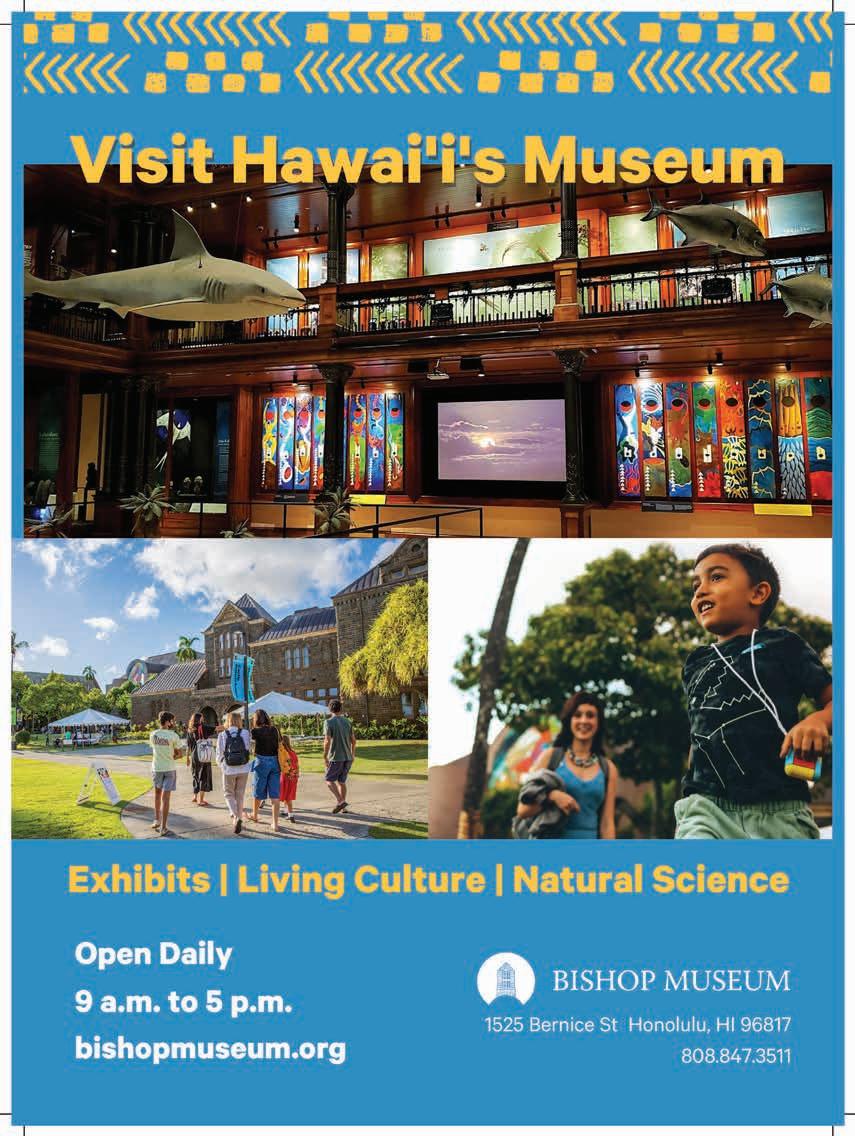
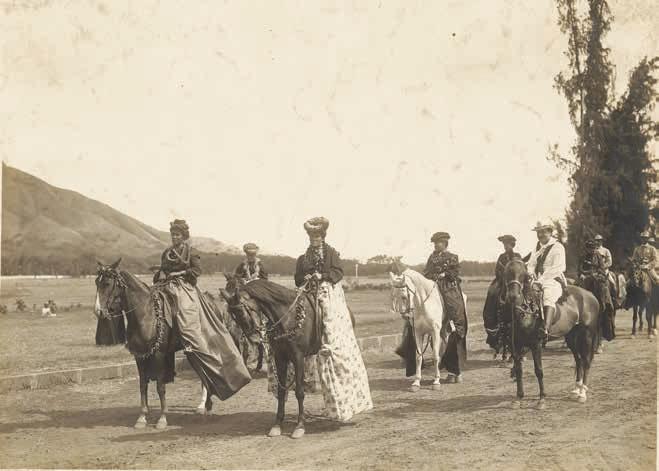
to ride pāʻū style in a floral parade. A year later, Theresa Wilcox formed a second group of riders who began exhibition riding in colorful pāʻū attire. Soon, the pāʻū rider was a regular fixture in local parades. Women of high society — like Princess Lydia Lili‘uokalani Kawānanakoa, a descendant of the Hawaiian monarchy — commonly rode in parades in pāʻū.
Today, the tradition continues with annual events like the Aloha Week Parade and the Kamehameha Day Parade, with each island represented by a princess and her accompanying pages. At the head is the pāʻū queen, the highest honor bestowed upon a pāʻū rider.
The parades are a meaningful endeavor for modern pā‘ū riders, embodying the same gravitas as the Merrie Monarch Festival does for hula dancers. Preparations are a costly, months-long affair. “When people see a pāʻū unit in the parade, they don't know how much time and resources it takes to put those two or three minutes in front of their eyes,” says Keaulana, who has for decades acted as the official pāʻū draper for the Kamehameha Day Parade.
“I’ve trained my daughters since the age of three,” says Leiala Cook, who heads Hawai‘i Pāʻū Riders, “just like how my mother did for me.” Pāʻū riding is often multi-generational, with horsewomen like Cook training their daughters from a young age. In 2010, Cook became one of the youngest pāʻū queens to ride in the King Kamehameha Day Parade. She hopes that her eldest daughter, Heavenly, will one day receive the same honor. “That really makes me feel fulfilled,” she says. “It’s legacy that’s being handed down.”
From its spirited origins to the present day, pāʻū riding is an enduring testament to Hawaiian showmanship and style. “I always tell people without pāʻū riders, you don’t have a Hawaiian parade. You just have a parade,” Keaulana says. “This is what makes Hawai‘i nowhere else in the world. And that’s important to me — to keep a sense of place here in Hawaiʻi.”
Pā‘ū riders are named after the unique riding skirts that became their trademark. They came to prominence after the introduction of horses to Hawai‘i in 1803.
157 | FLUXHAWAII.COM
Mangosteen
I clamped the cold purple skin between my palms to break the fruit in half pulling pieces of mangosteen from the seed My dad told me, that’s your mom’s favorite so I let the sweetness sit on my tongue before swallowing
I stocked my pantry: Soy sauce, fish sauce, Datu Puti Coconut milk, Garlic, Mang Tomas
I asked the neighbors: where can I buy tamarind paste? What I am actually asking is: Where can I find the same ingredients I grew up with those familiar flavors that filled my plate
Where can I find a piece of my mother’s kitchen so I can make this place my home
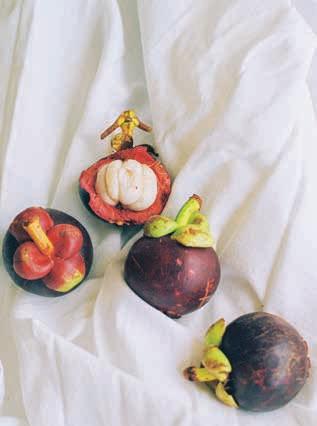
Kristine Pontecha is a creative professional and drinks a hot cup of Yorkshire tea in candlelight every morning while playing the NYT crossword. She resides in Makiki.
| A HUI HOU | 158 | FLUXHAWAII.COM
POEM & IMAGE BY KRISTINE PONTECHA
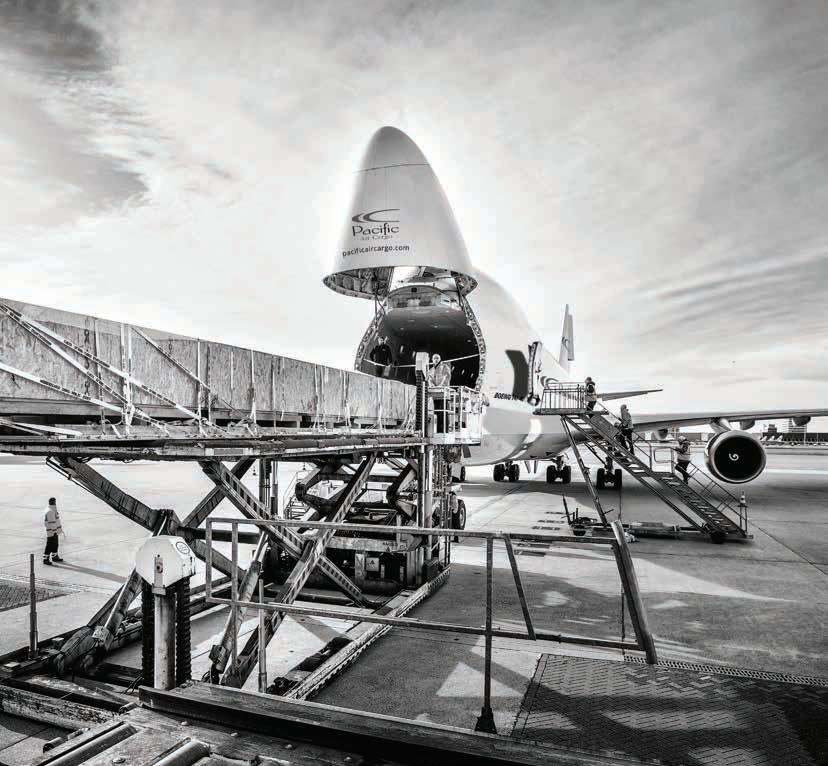
Boeing 747-400 Nose-loader service & ad hoc charters on-demand. Linking major gateways all across the nation to and from Los Angeles & Hawaii, and onwards to Pago Pago, Guam & beyond.
For more information, a free quote or to book online visit pacificaircargo.com or call 808.207.9017 AIR FREIGHT SPECIALISTS EXCEEDING ALL EXPECTATIONS
Serving LAX – HNL – PPG – GUM
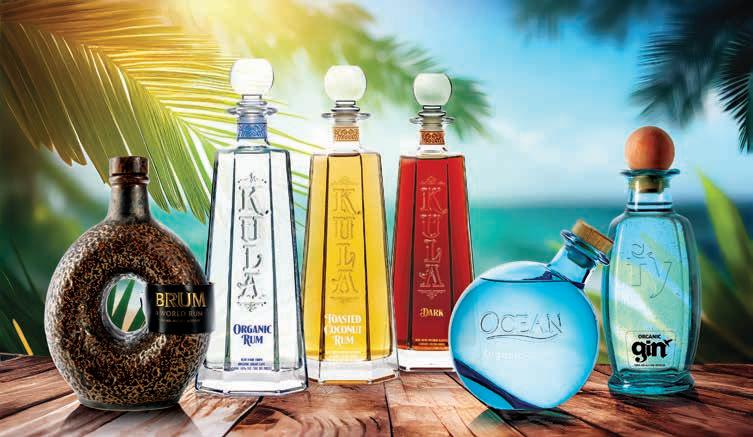
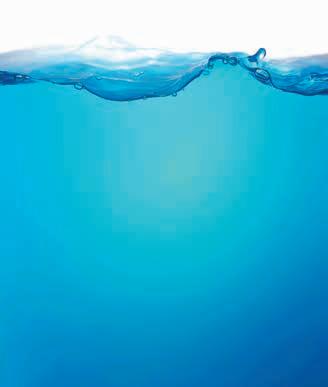
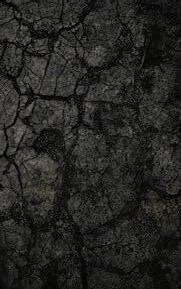
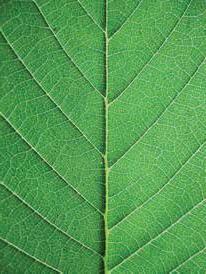
MOTHER NATURE
WATER LAND PLANTS OCEAN Earth’s Organic Vodka
tribute to the element that enables life on our planet. KULA Pacific Island Rum
in tribute to the majestic lands that provide us shelter. FY Hawai‘i Wet Gin
the botanicals that nourish our bodies.
INSPIRED
Cra�ted in
Cra�ted
Cra�ted in tribute to
Distillery Exclusive Solera Blend Aged Rum
EXPERIENCE
A TASTE OF PARADISE AND EXCITE YOUR SENSES
Perched on the slopes of Haleakala, the OCEAN Organic Farm & Distillery boasts striking views of Ma‘alaea Bay, west Maui mountains and north shore, sweeping trade winds, great refreshments, food, and live music.
Open 7 days a week, the friendly staff passionately guide tasting experiences and explain the value of responsible farming and manufacturing practices. Visitors are invited to shop keepsakes at the Farm Store and enjoy mouth-watering bites paired with good tasting cocktails.
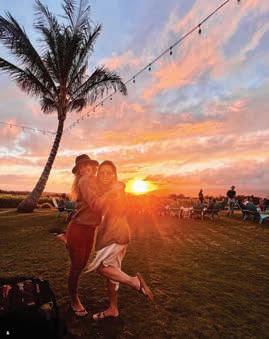
RAISING SPIRITS NATURALLY
The Hawaiian Islands are a special place that is buzzing with life and adventure. Include some cultural melody and raise a glass to making new memories. It’s a cool time that should be shared with cool friends.
Good vibe experiences can have profound effects on the way we carry ourselves through daily life.
Add a visit to your plans. You’ll be glad you did.
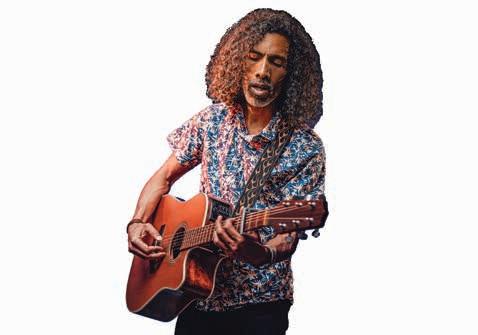
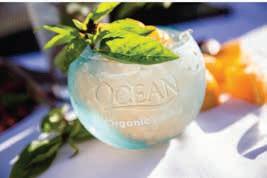

A PARTNERSHIP WITH DEEPER PURPOSE
Ocean Distillery is proud to be a sponsor and partner in support of oceanic and marine life research, education, and conservation efforts.

Everything we put in the air and on the land makes its way to the ocean.
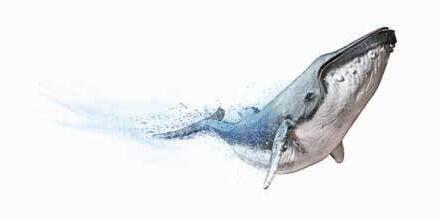
Research gives us knowledge in better understanding ways to protect our most valuable resource.
oceandistillery.com | 4051 Omaopio Rd, Kula, HI 96790 ©2022 Copyright. All rights reserved. Best enjoyed with cool responsibility and a splash of common sense.
Healthier Oceans. Healthier Planet. Better Options.
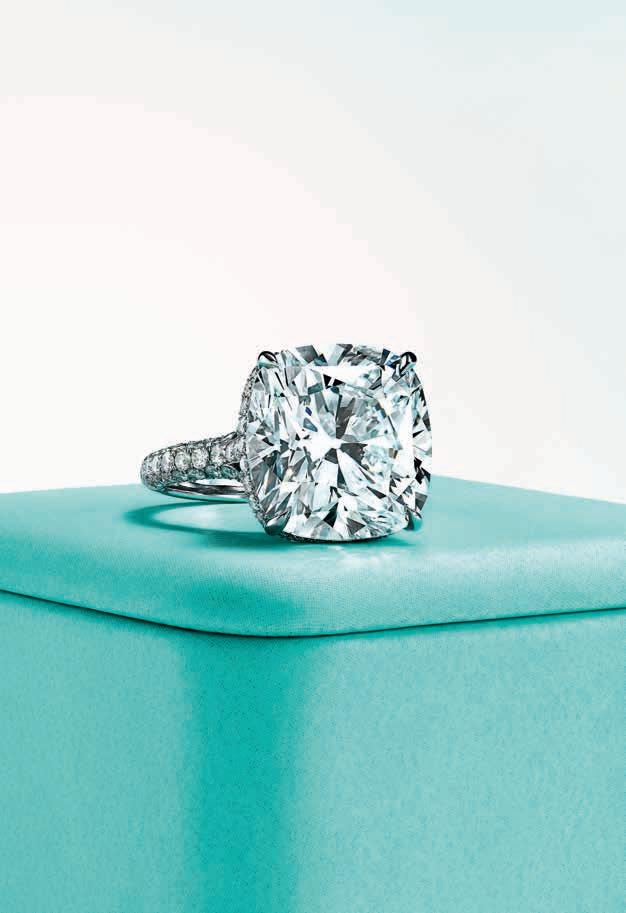


















































 The author Megan Kamalei Kakimoto at Nu‘uanu Pali. Image by Meagan Suzuki.
The author Megan Kamalei Kakimoto at Nu‘uanu Pali. Image by Meagan Suzuki.





 In Transit , oil and acrylic on canvas.
In Transit , oil and acrylic on canvas.

 Above, Beyond the Pacific . Opposite page, Looking Glass , oil and acrylic on canvas.
Above, Beyond the Pacific . Opposite page, Looking Glass , oil and acrylic on canvas.







































 Kalapana-Kapoho Road, Hawai‘i Island. Image by Nani Welch Keli‘iho‘omalu.
Kalapana-Kapoho Road, Hawai‘i Island. Image by Nani Welch Keli‘iho‘omalu.
























































 View from inside a historic home designed by Allen R. Johnson. Image by Viola Gaskell.
View from inside a historic home designed by Allen R. Johnson. Image by Viola Gaskell.





























 An evening bon dance in Honolulu. Image by Michelle Mishina.
An evening bon dance in Honolulu. Image by Michelle Mishina.







 Metrograph
Metrograph
 Mood Ring
Mood Ring



































